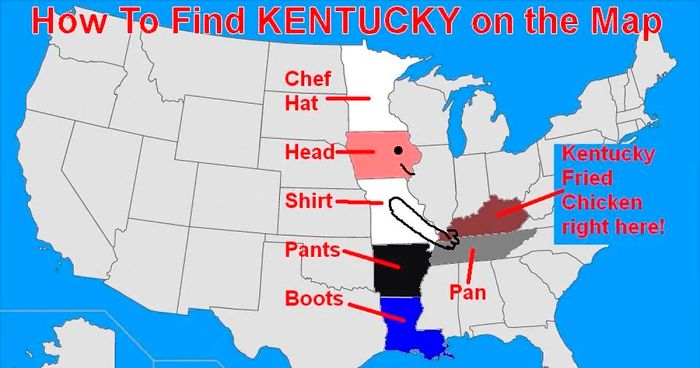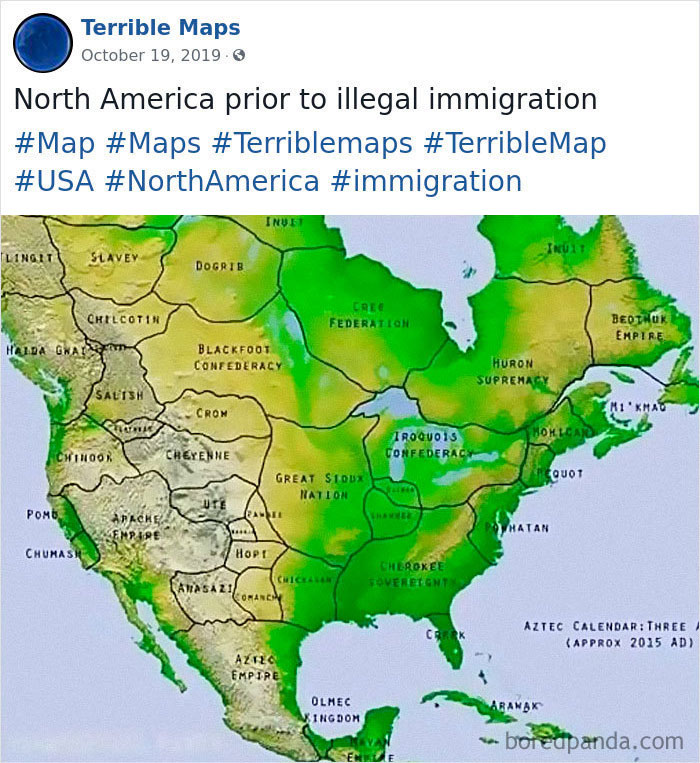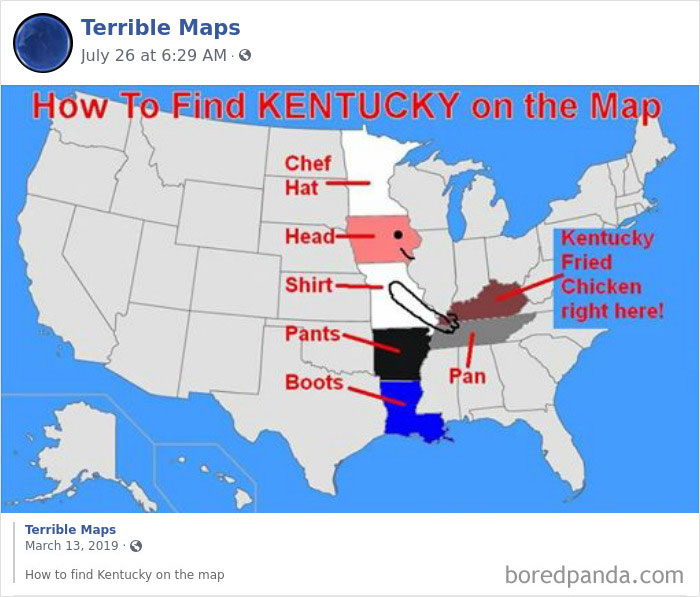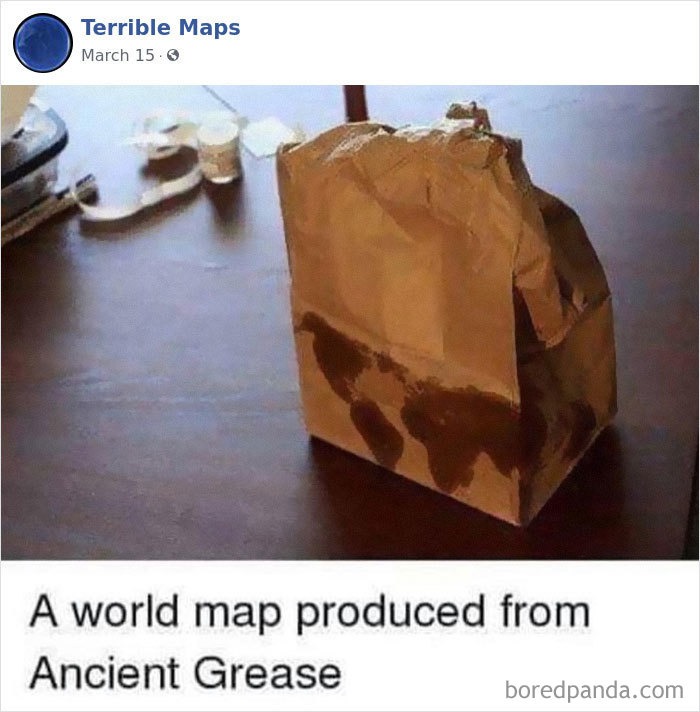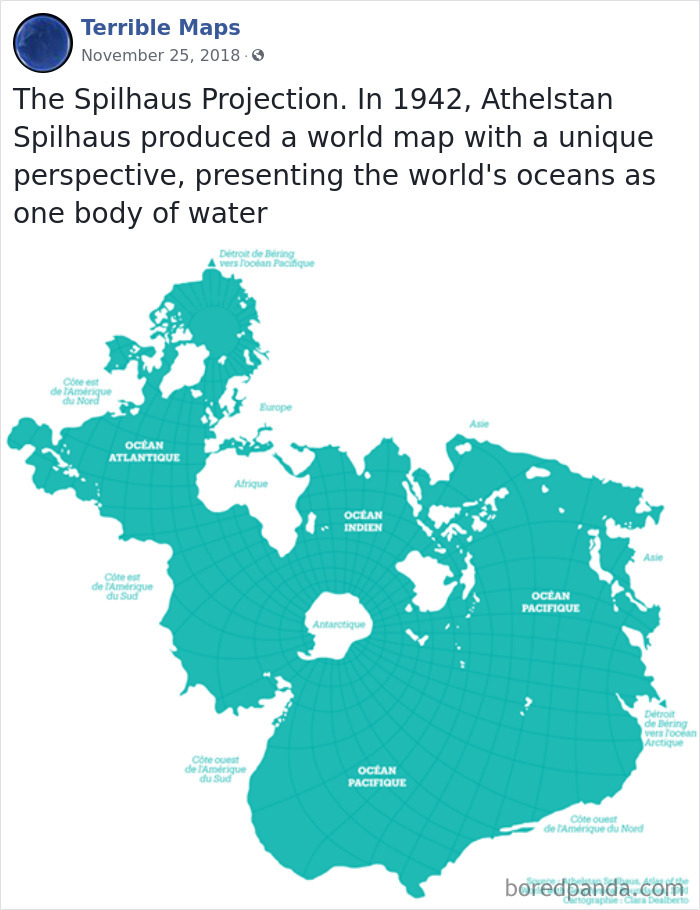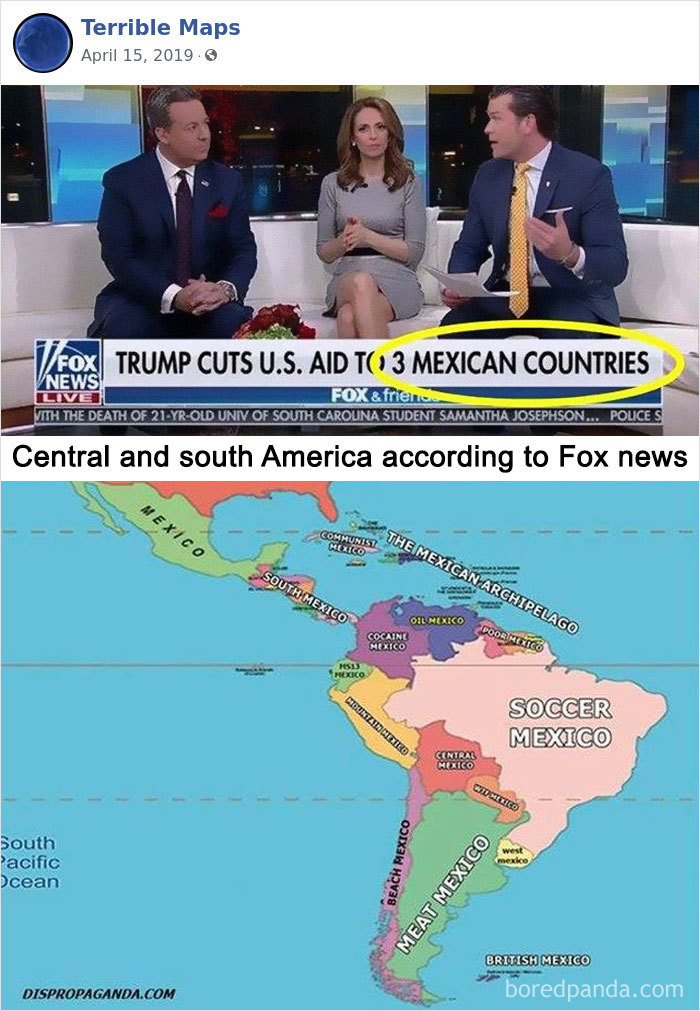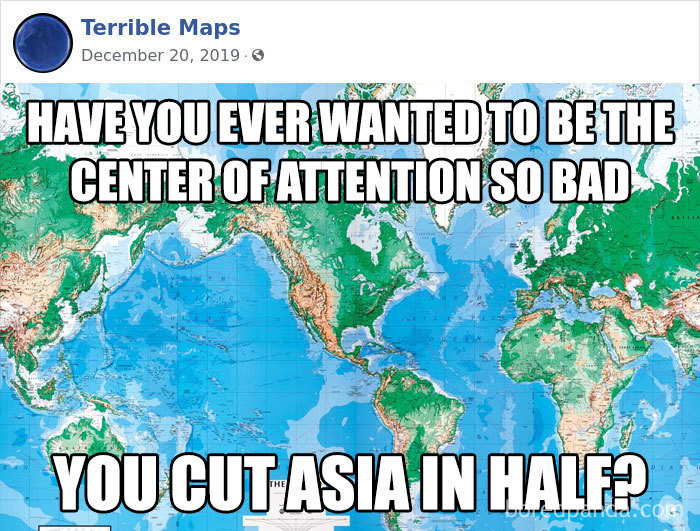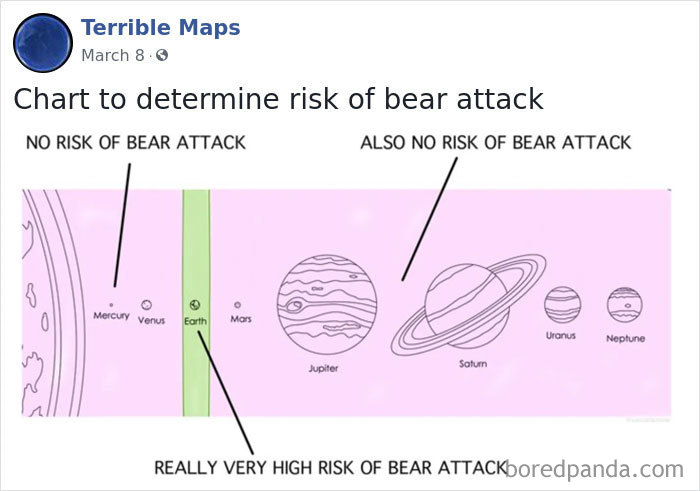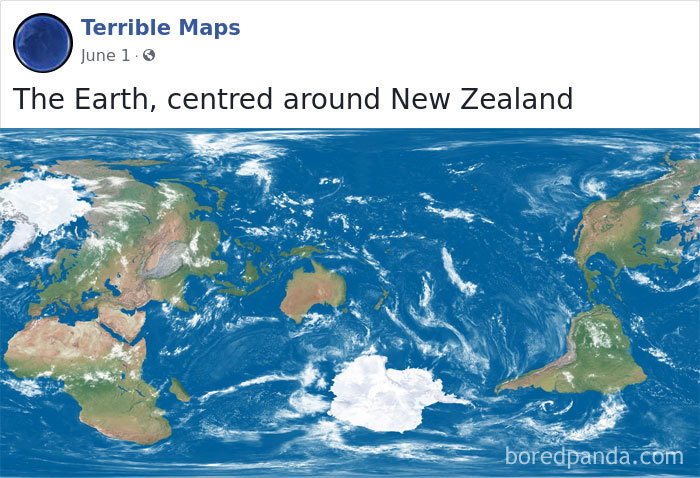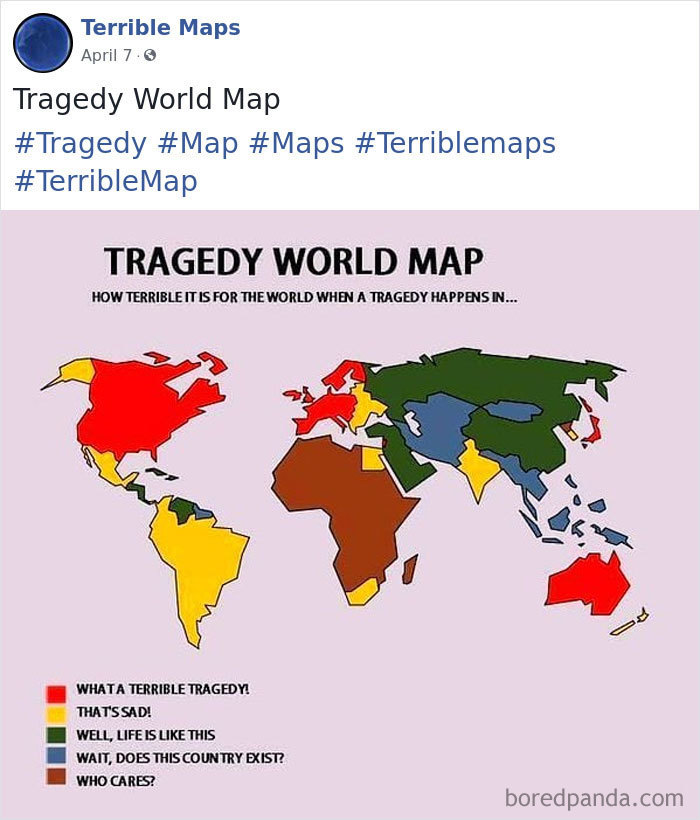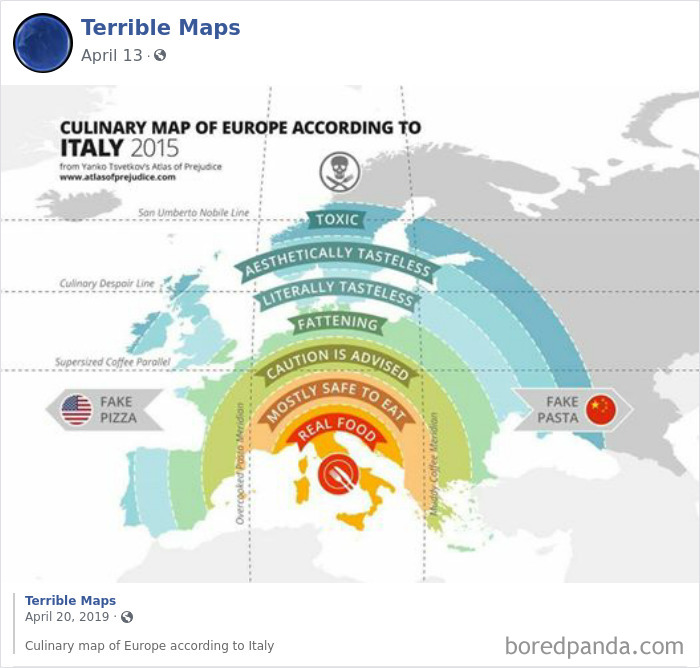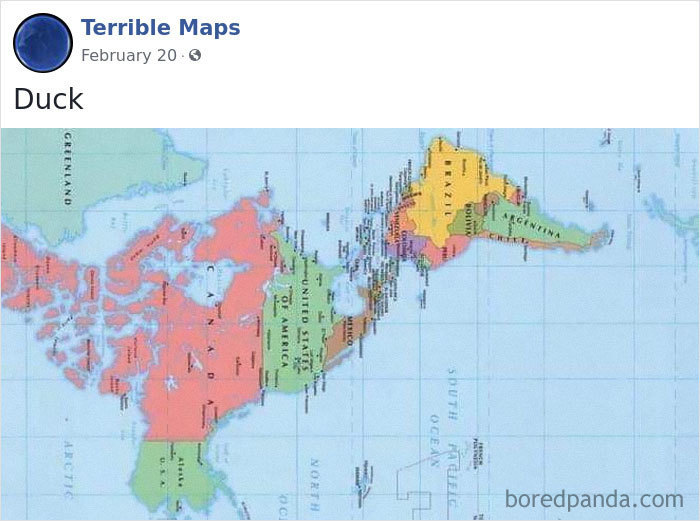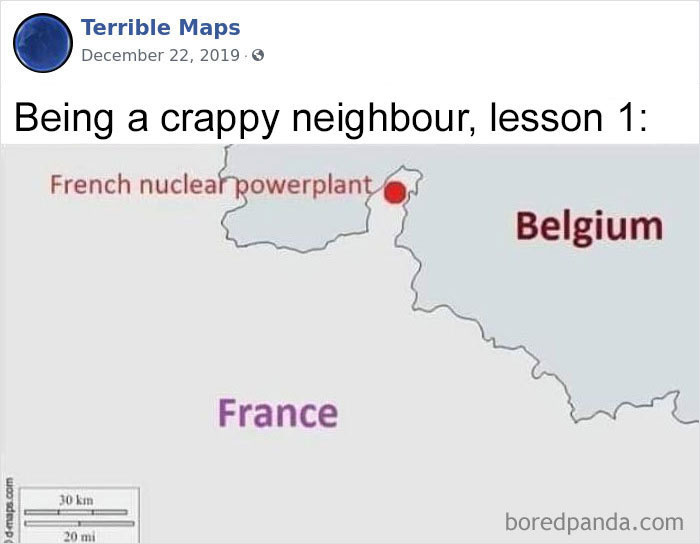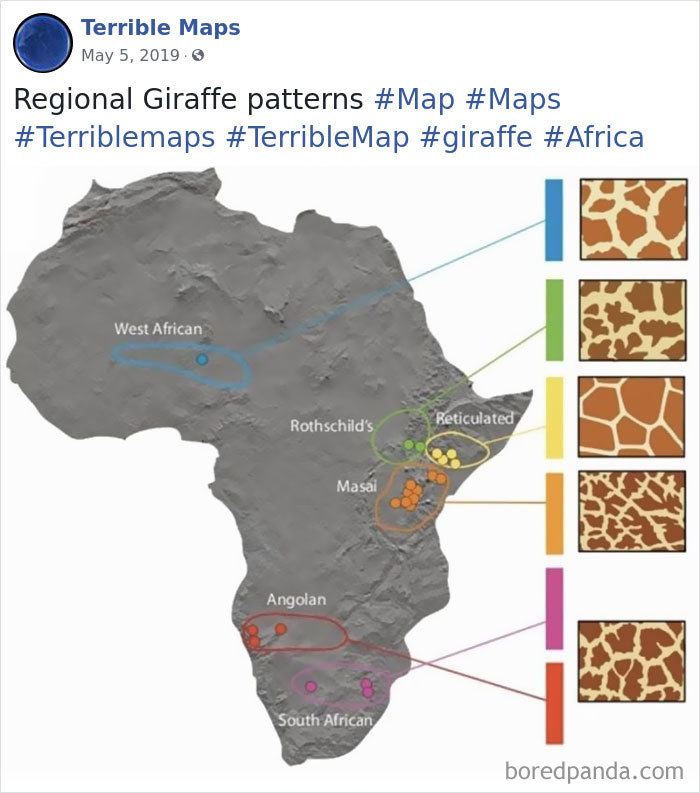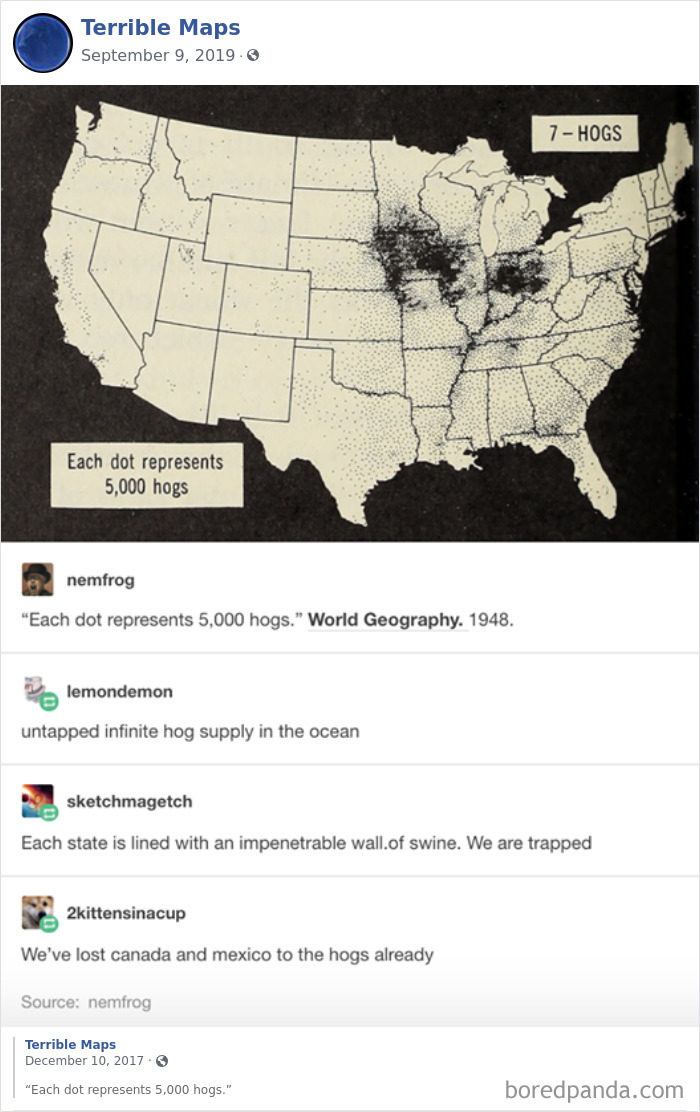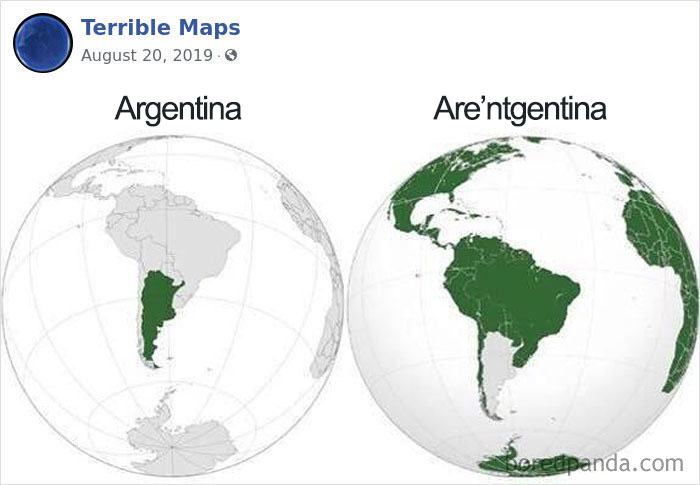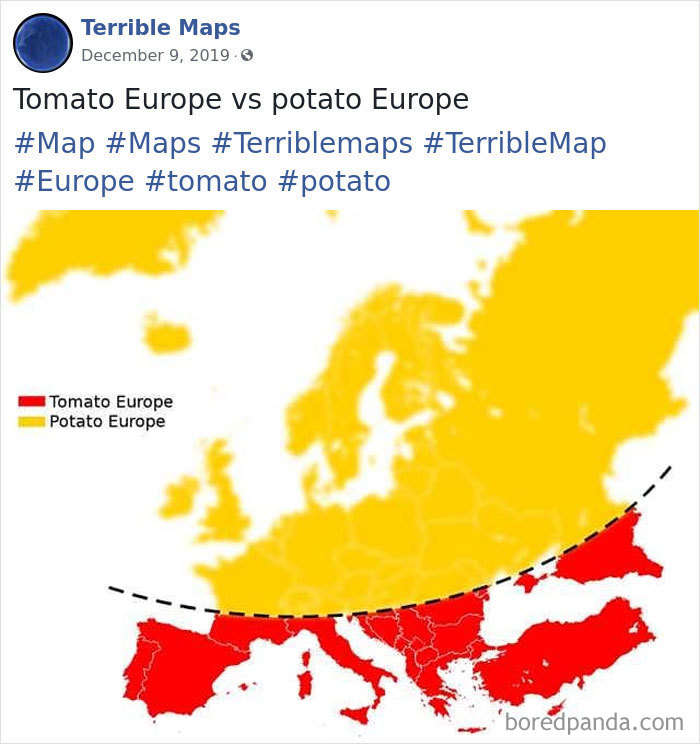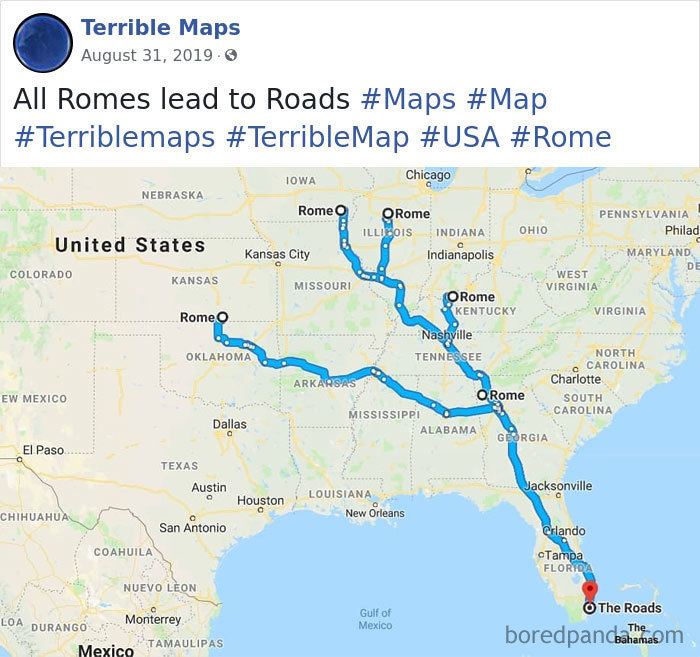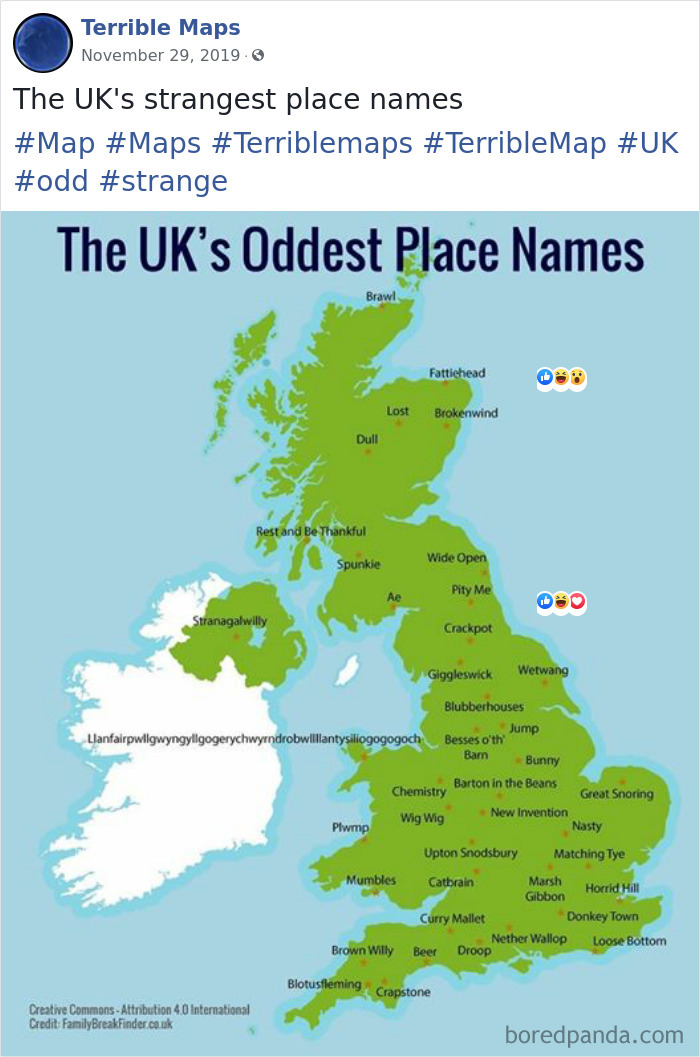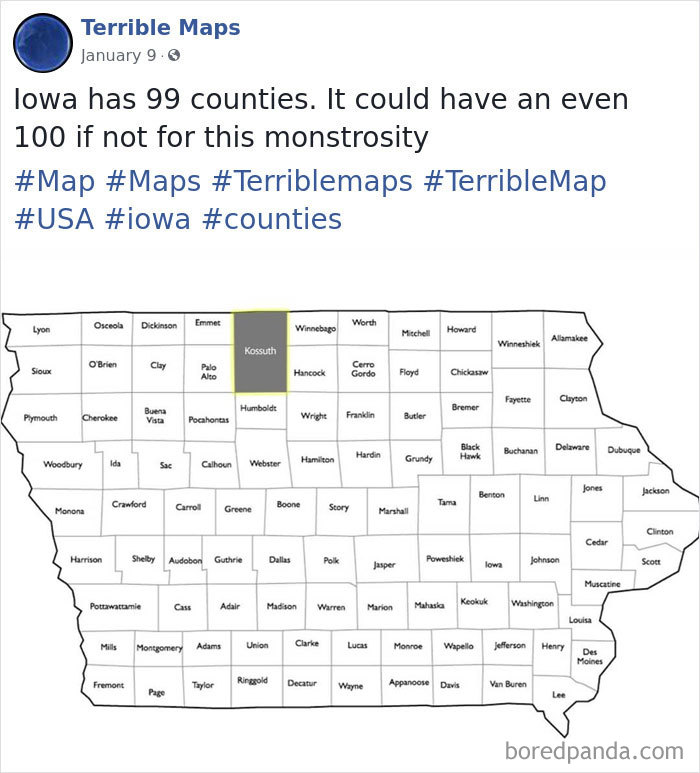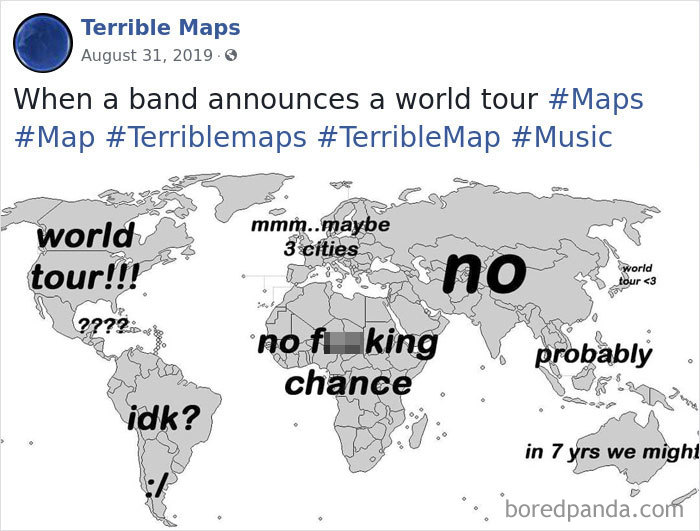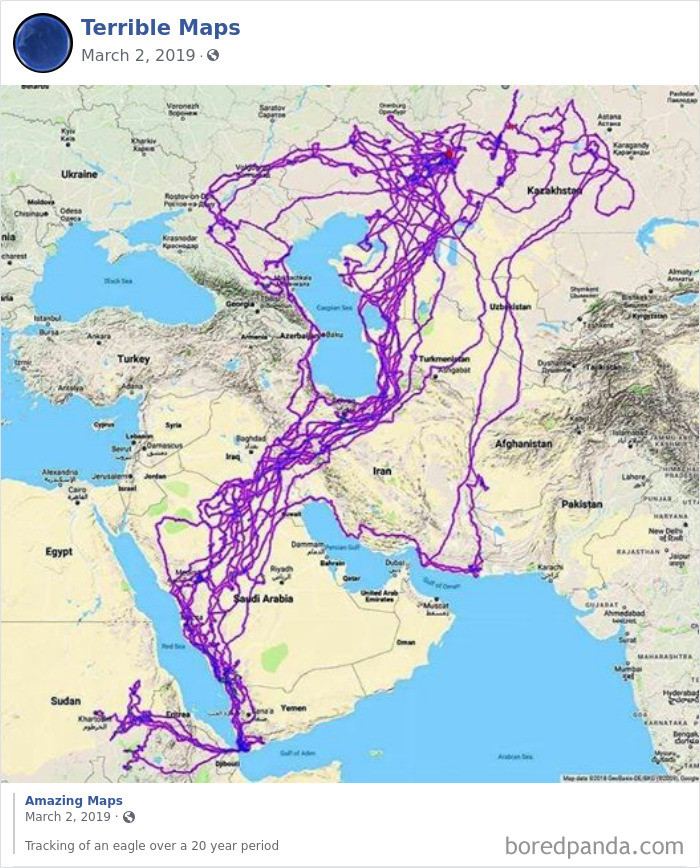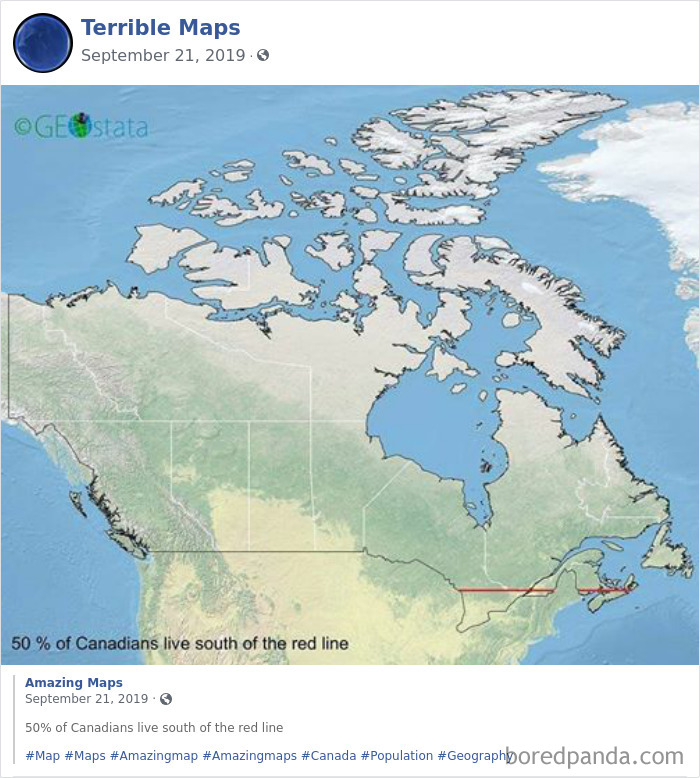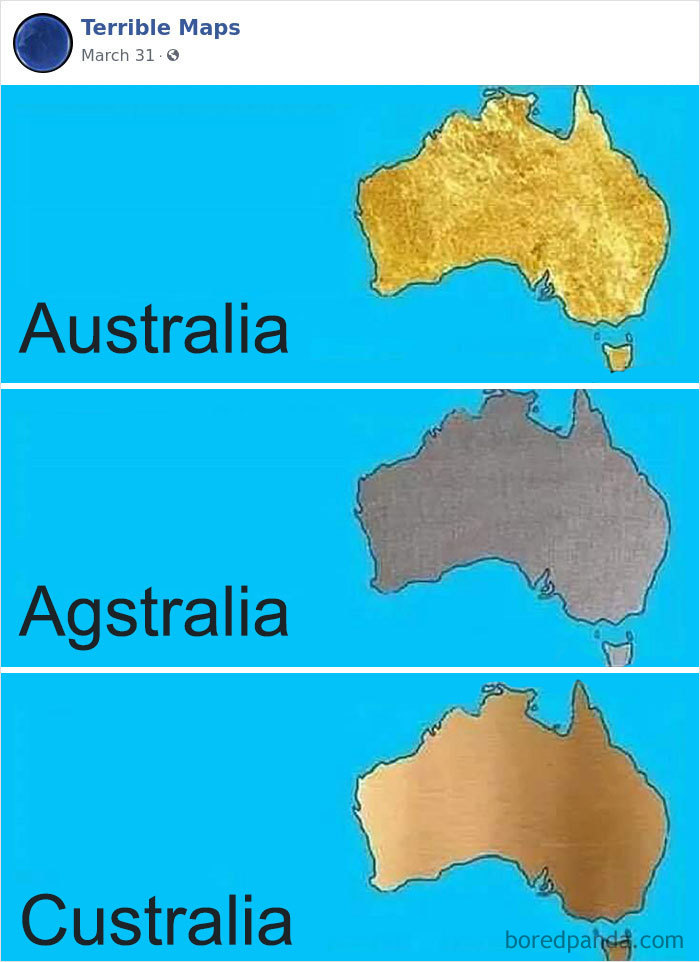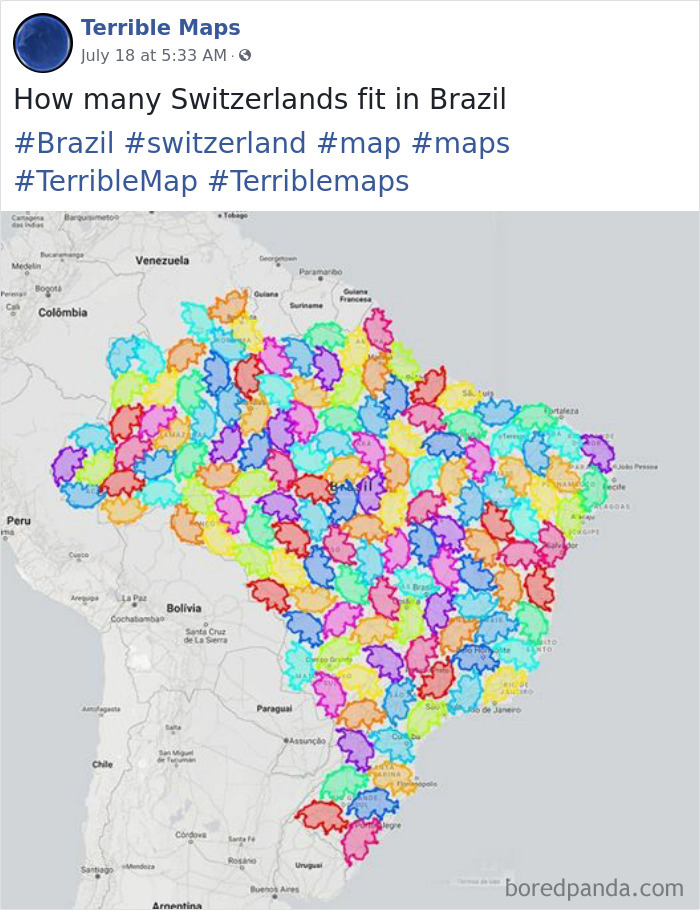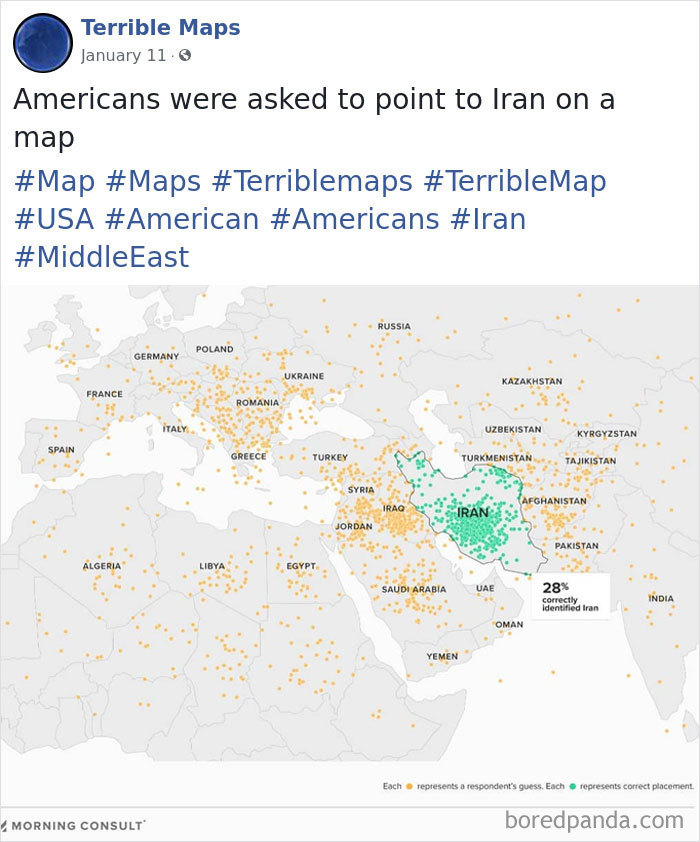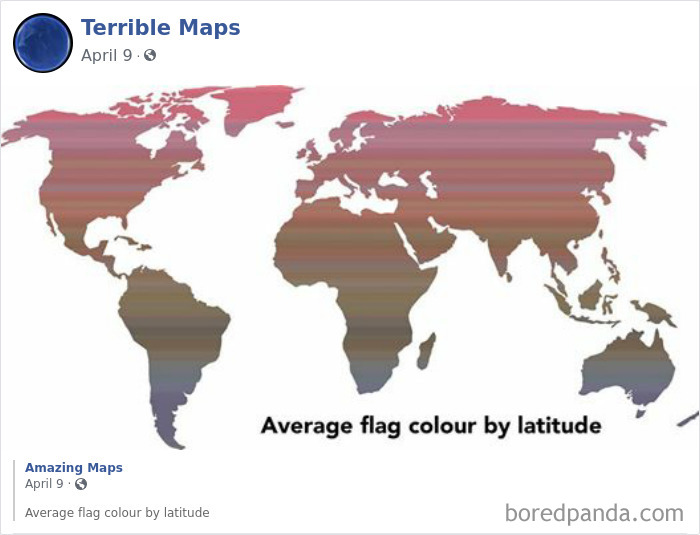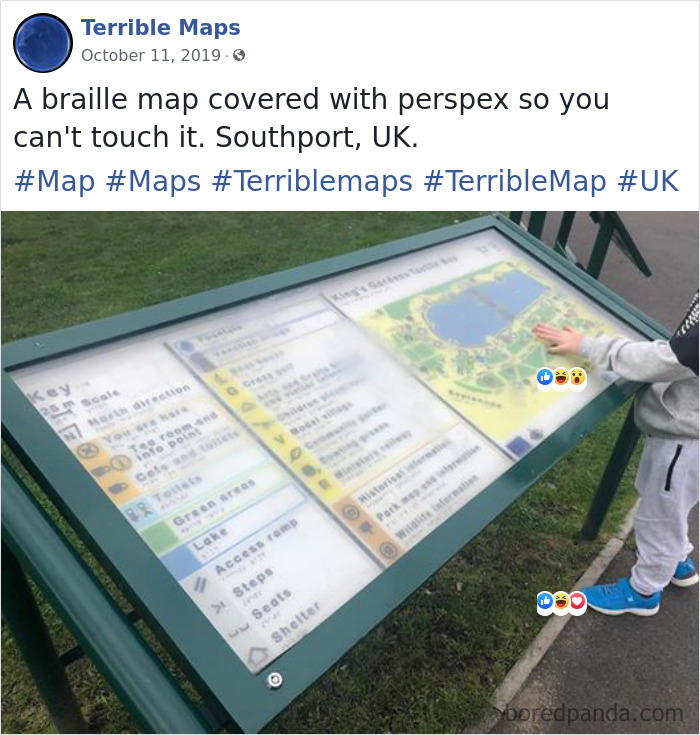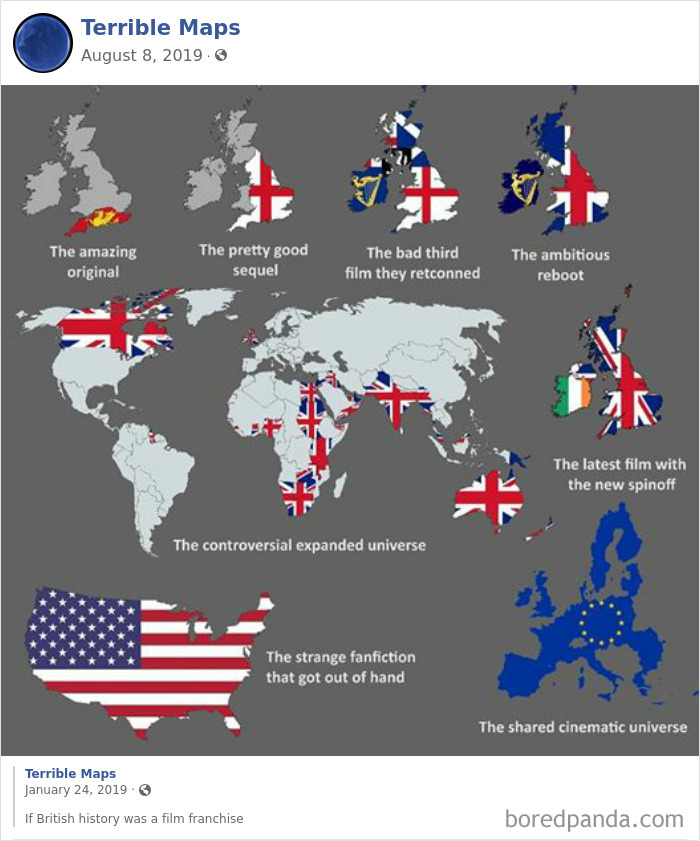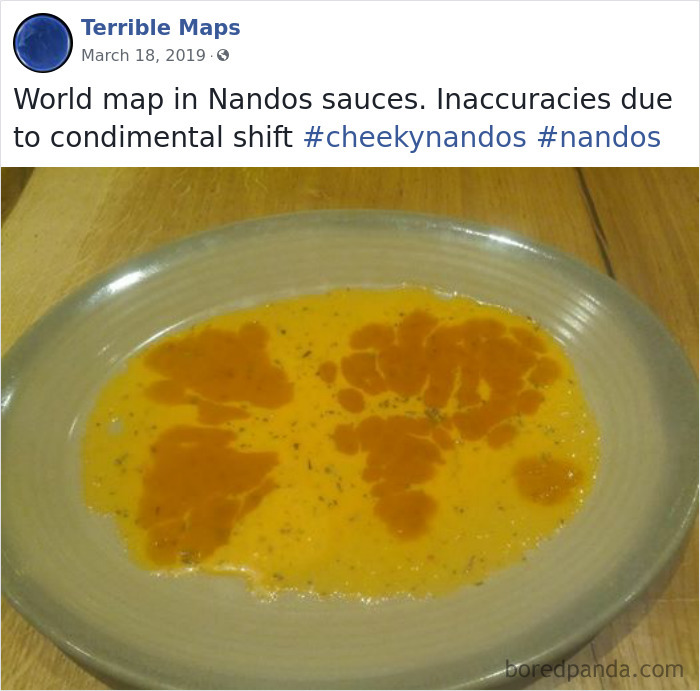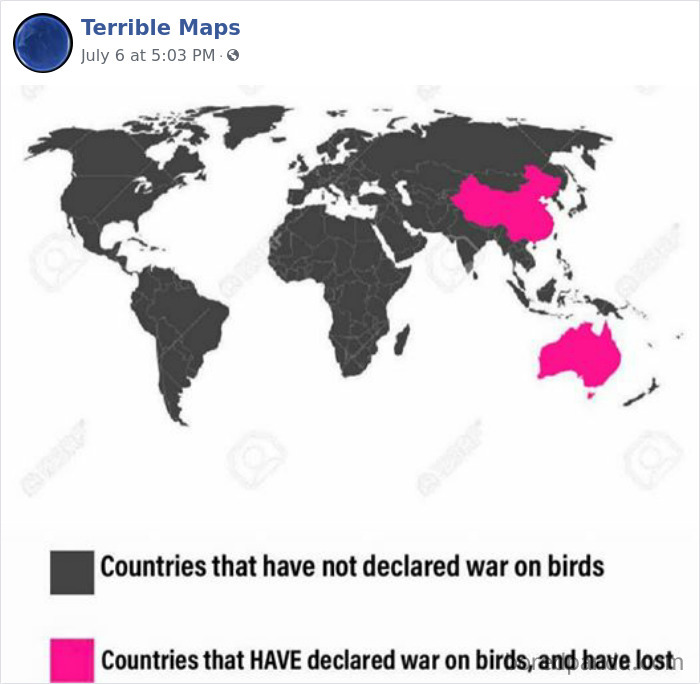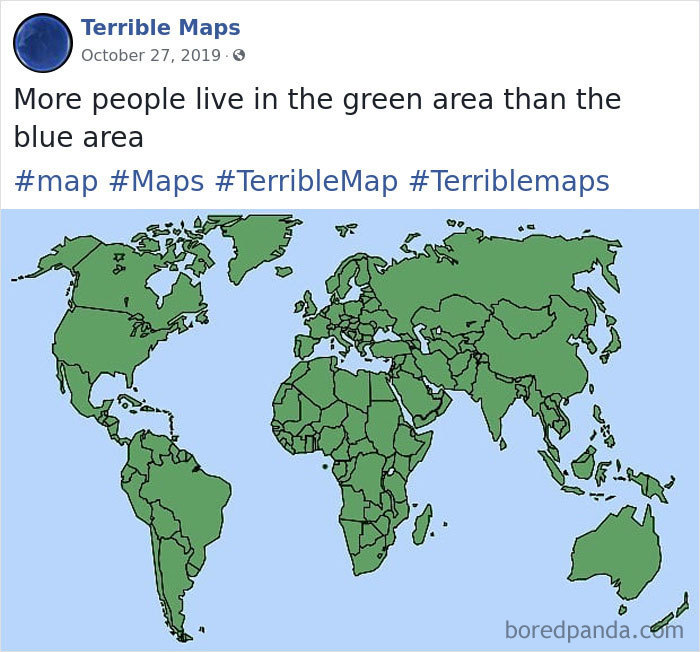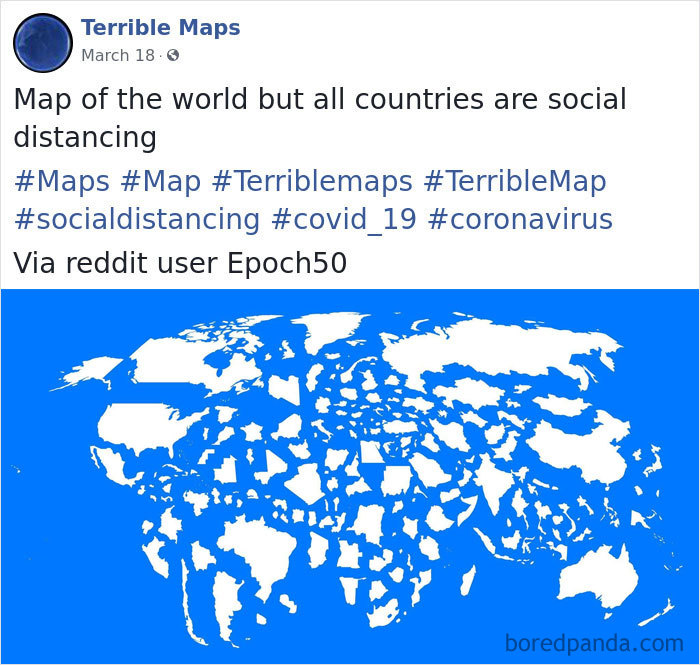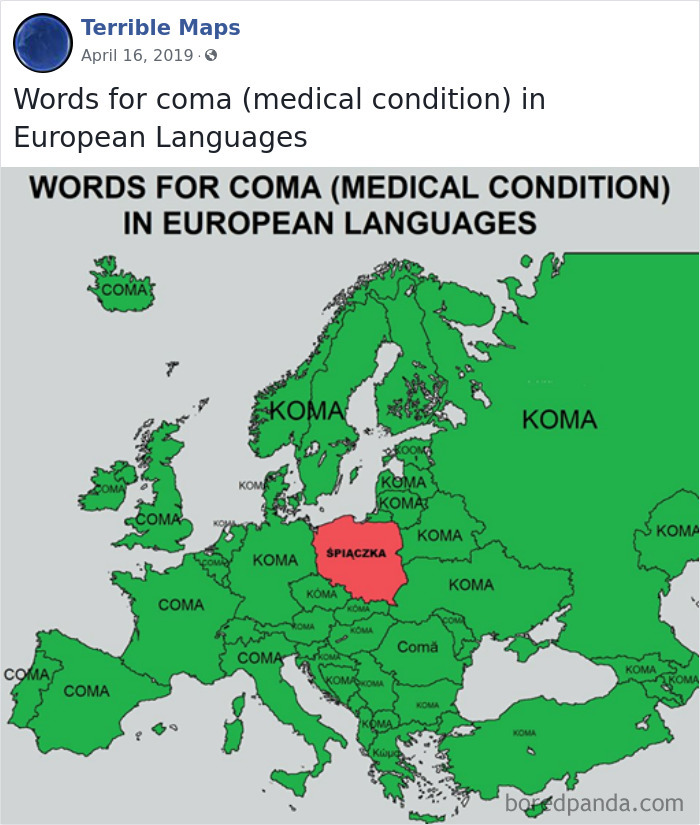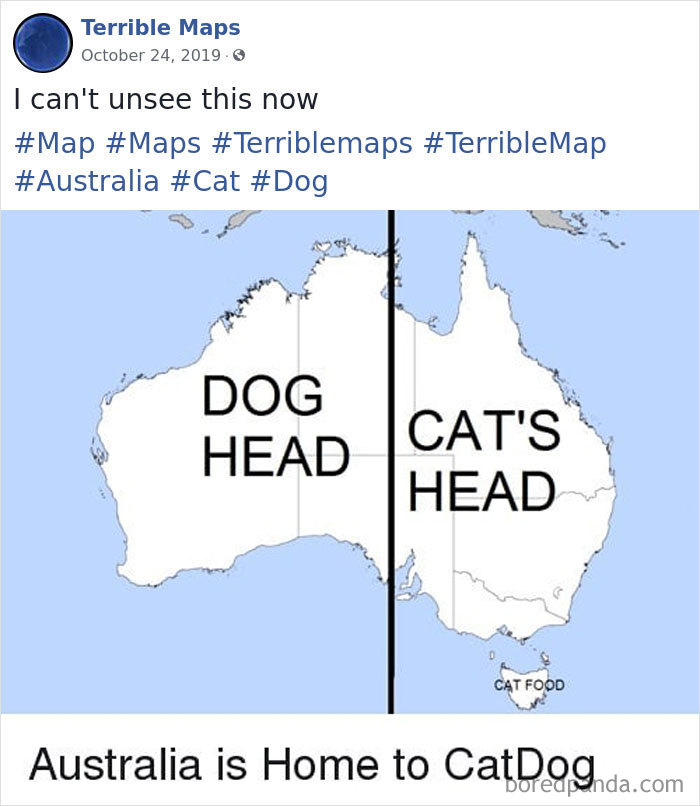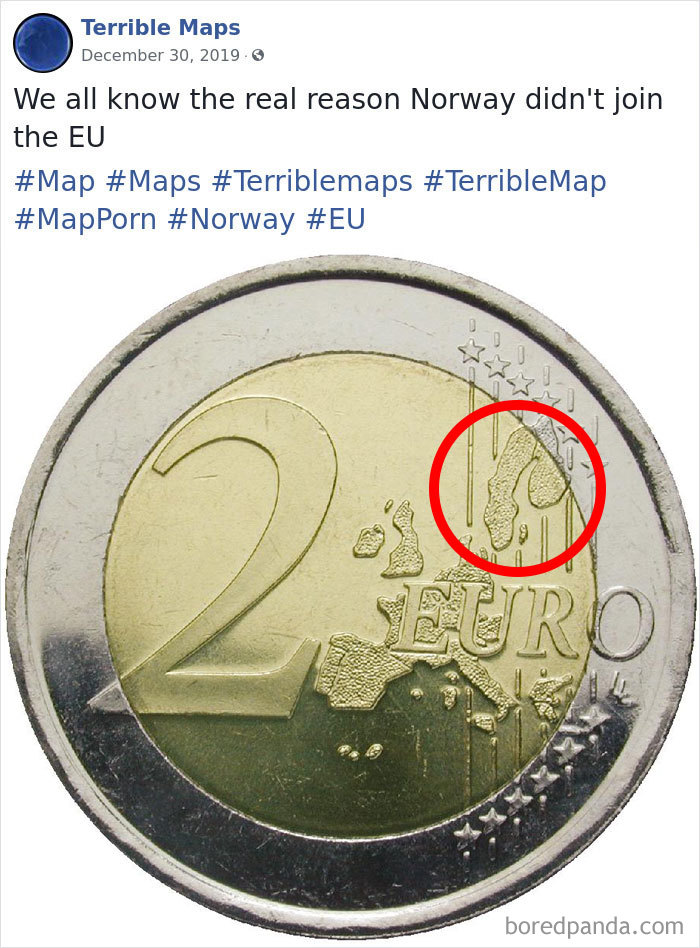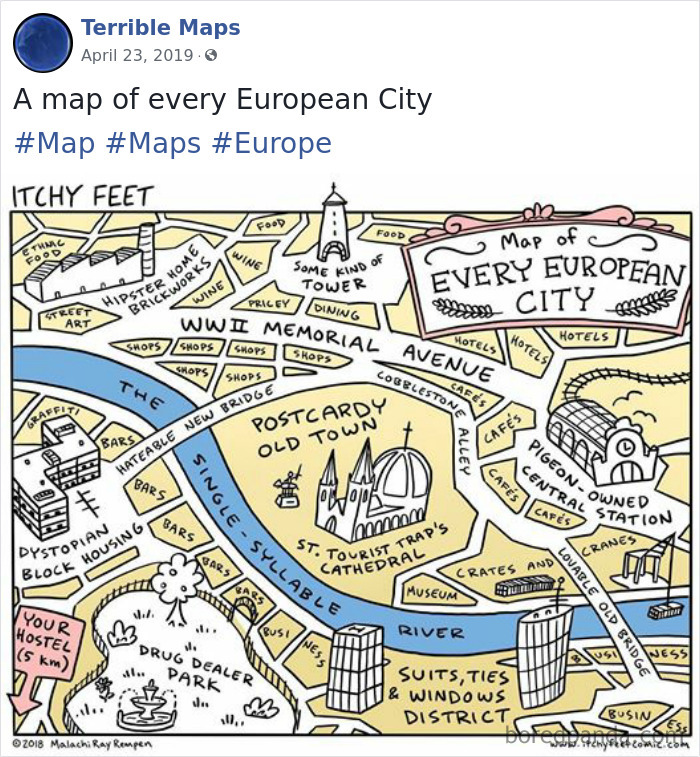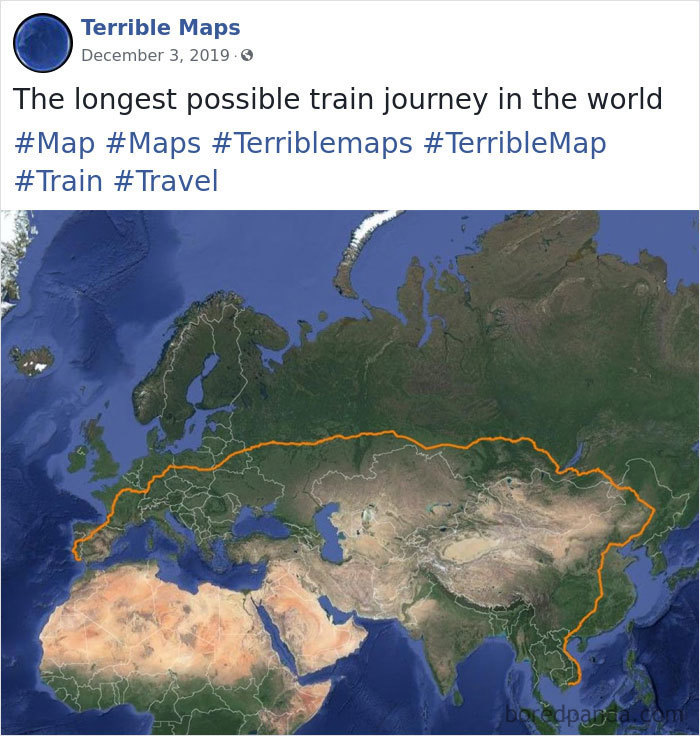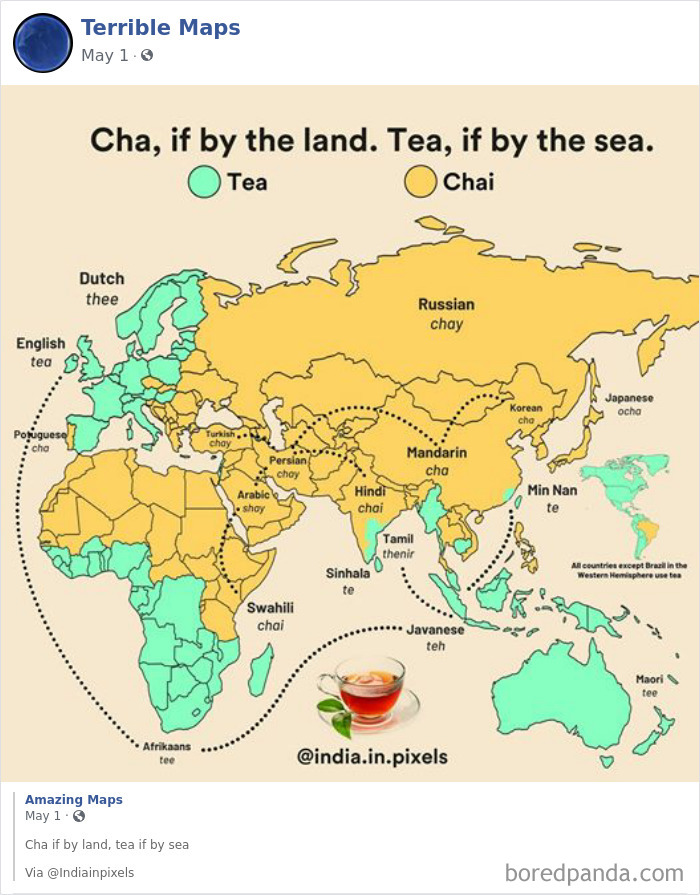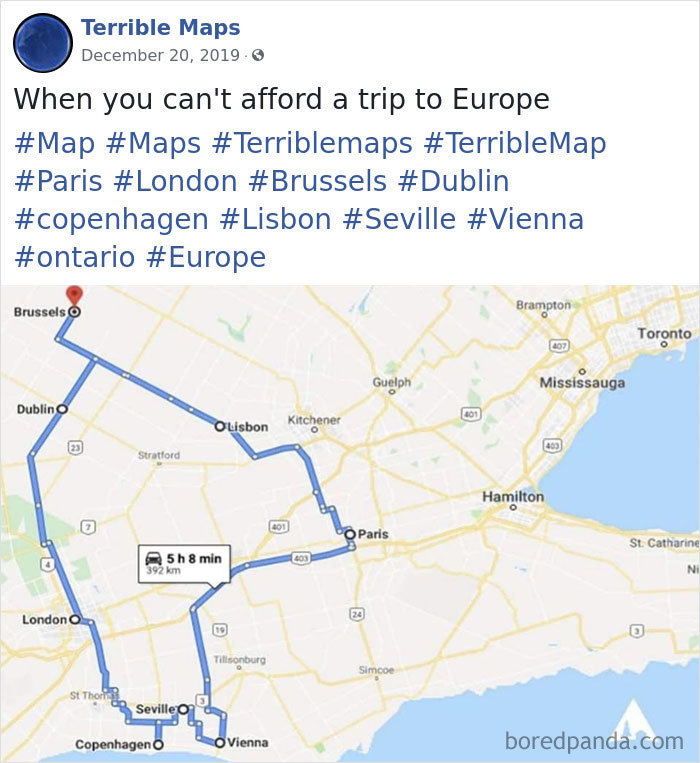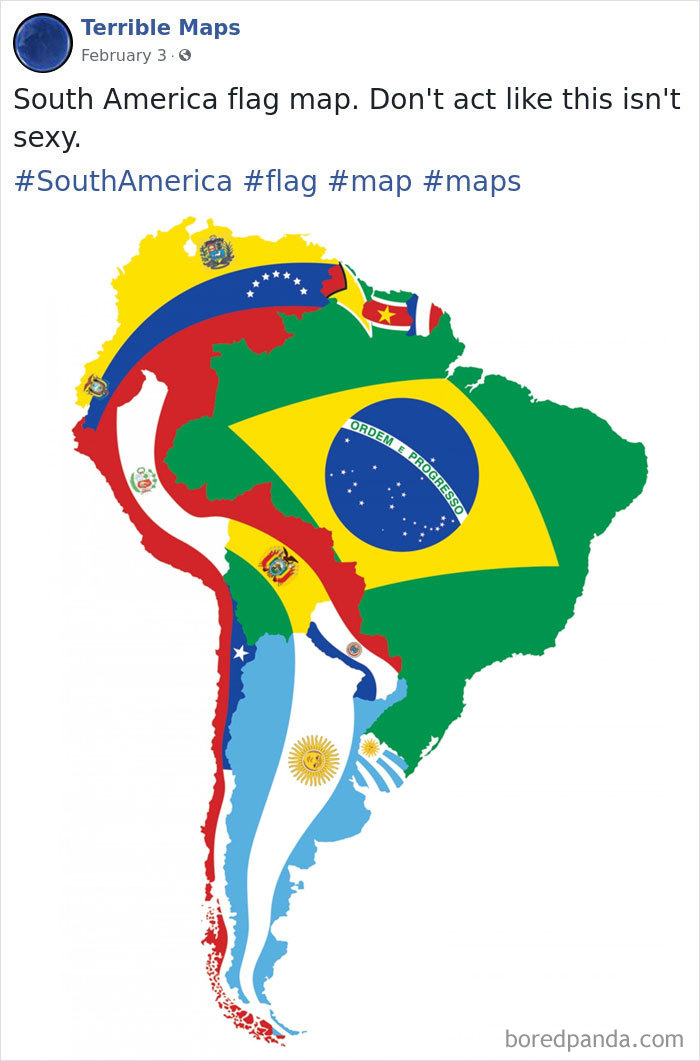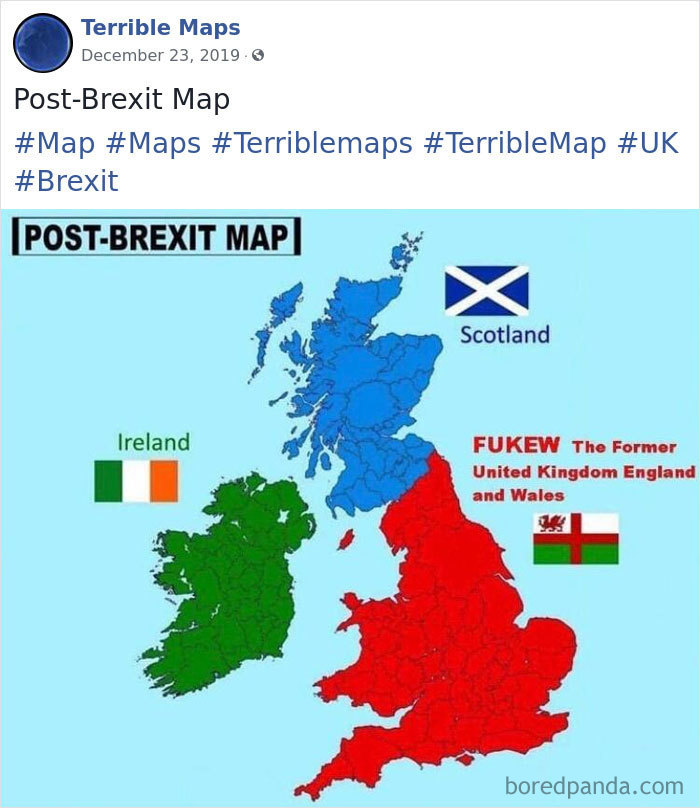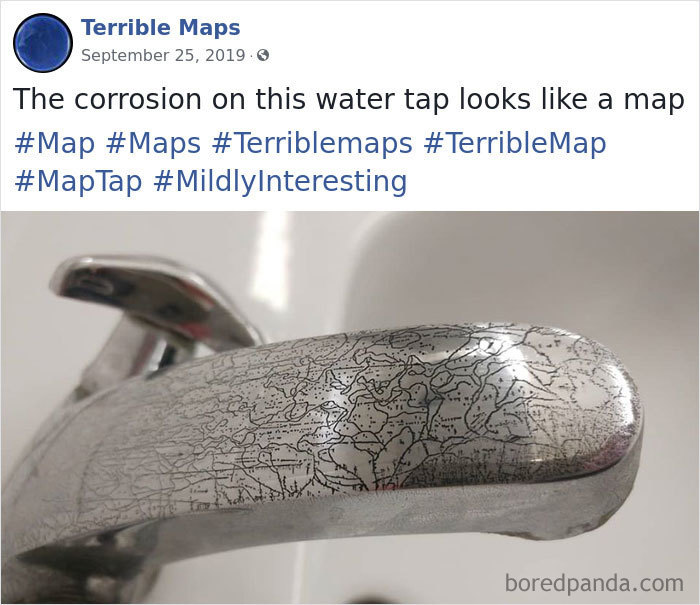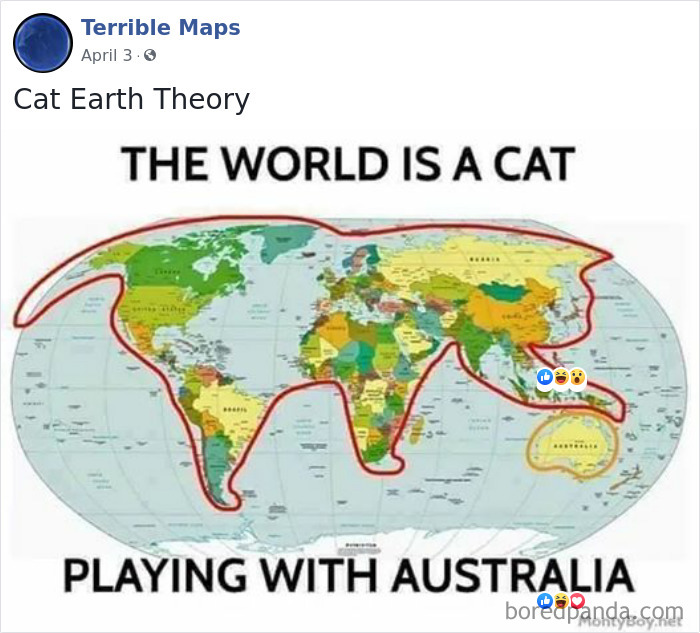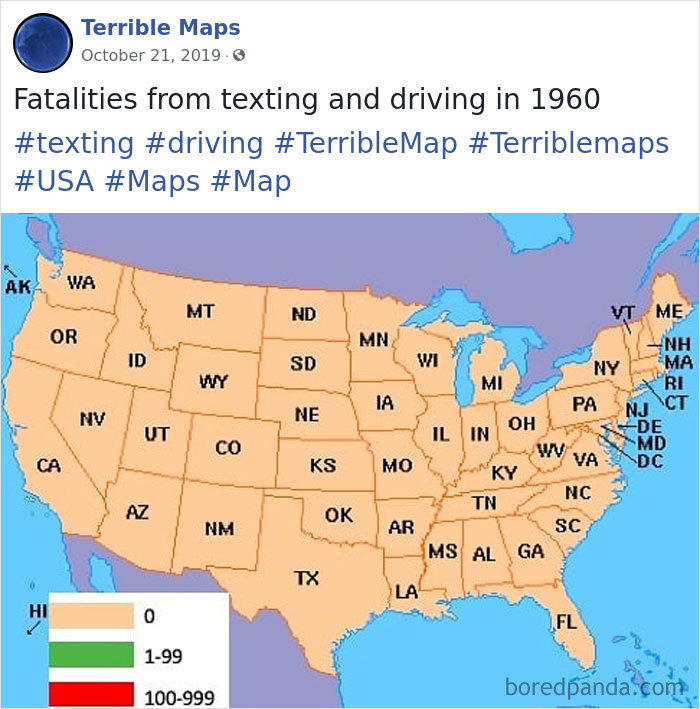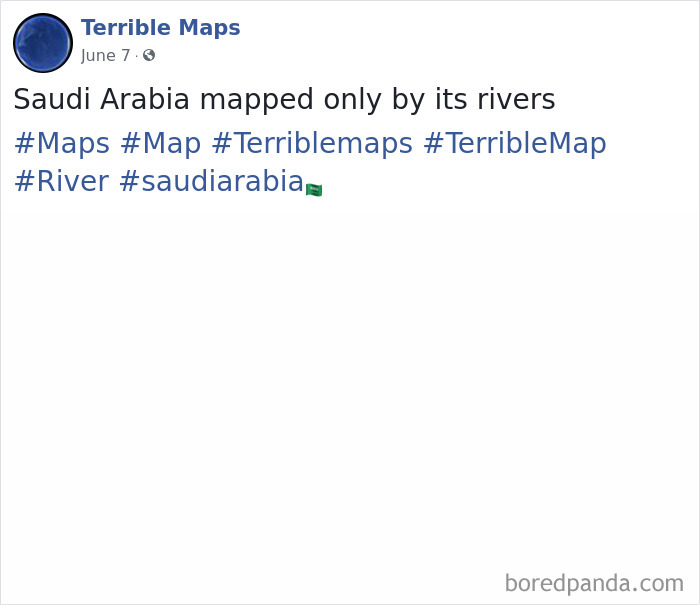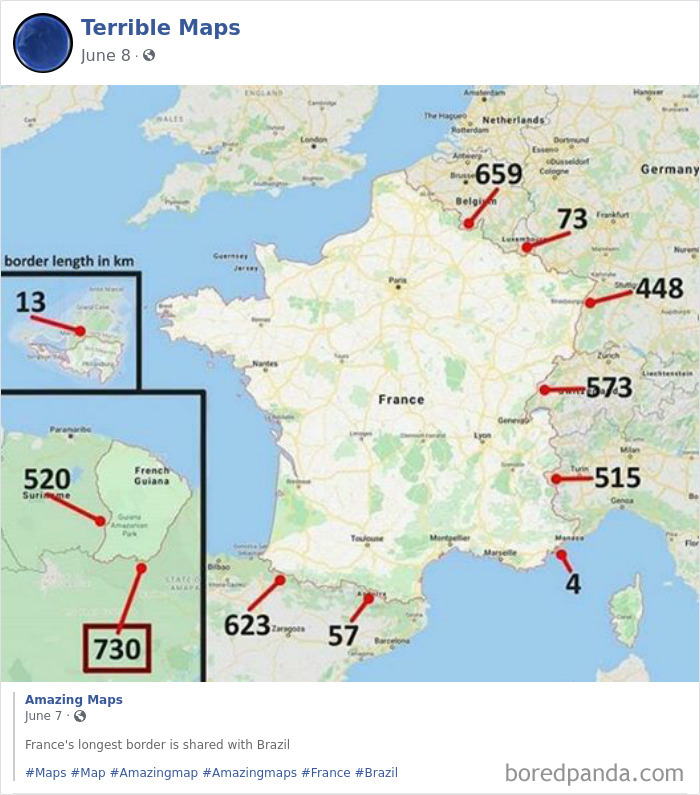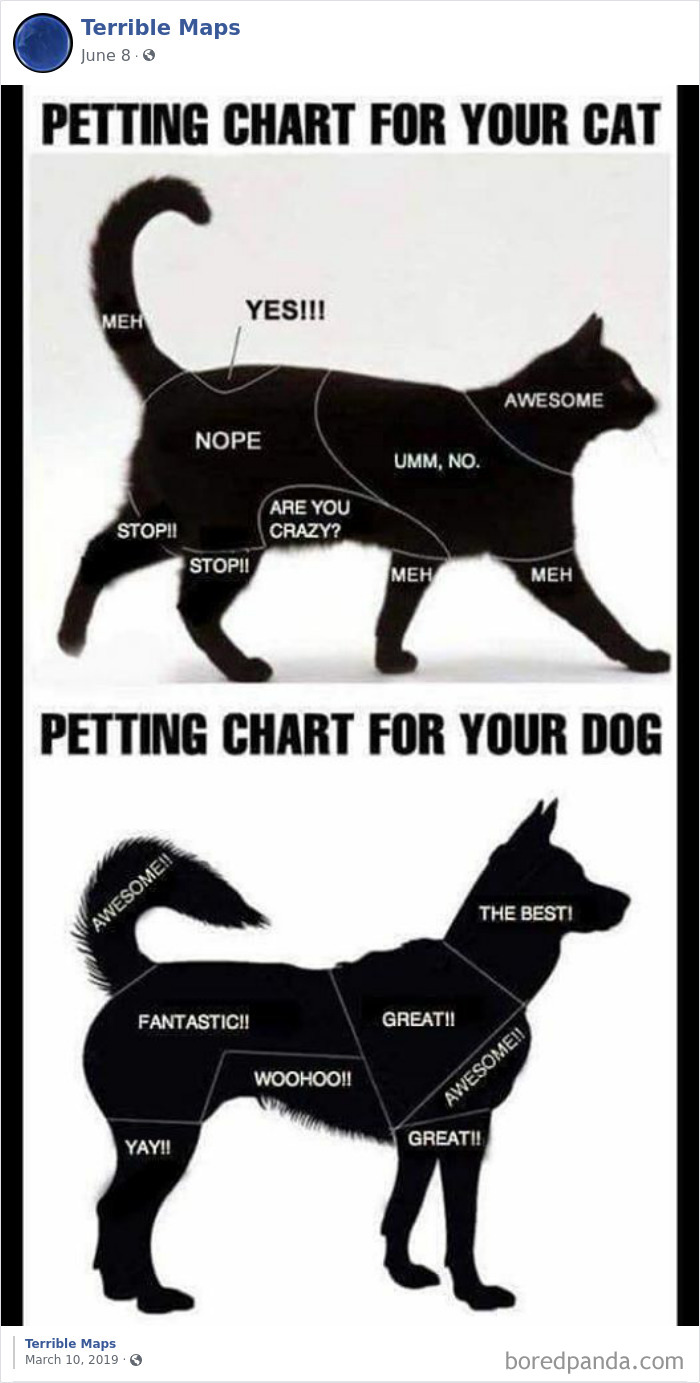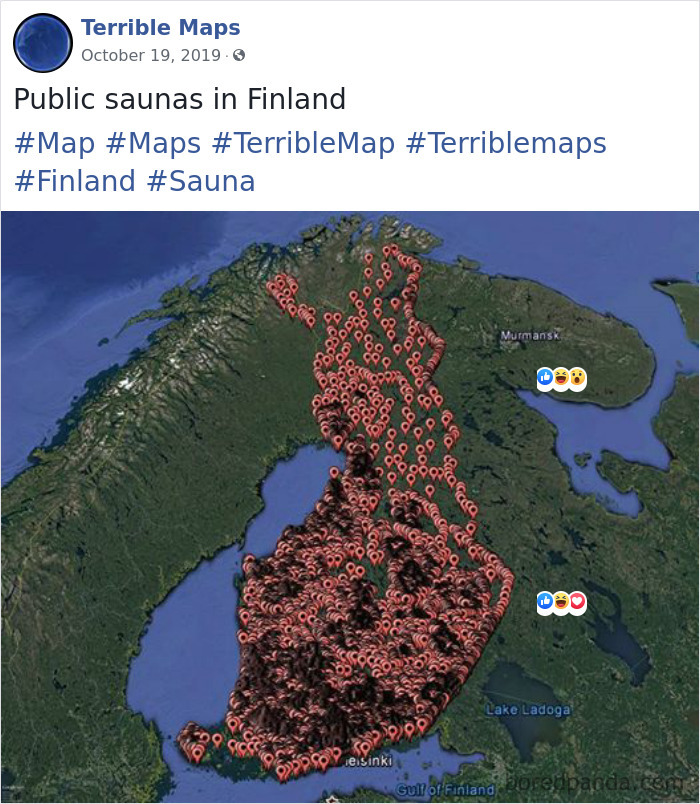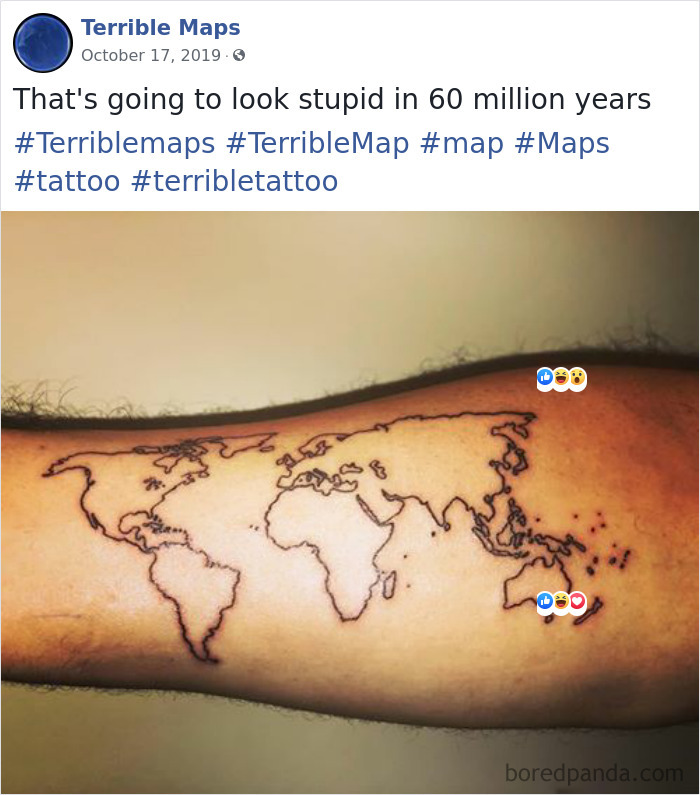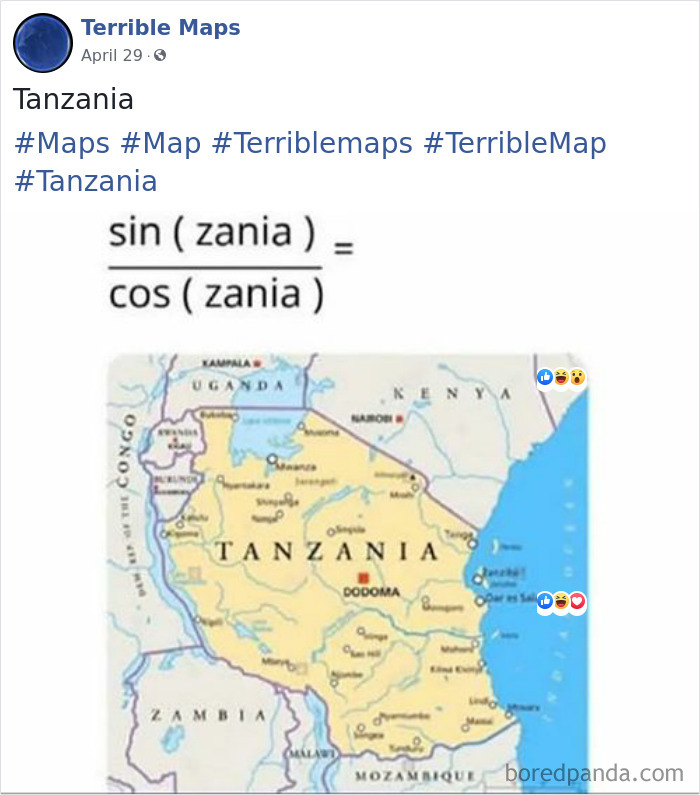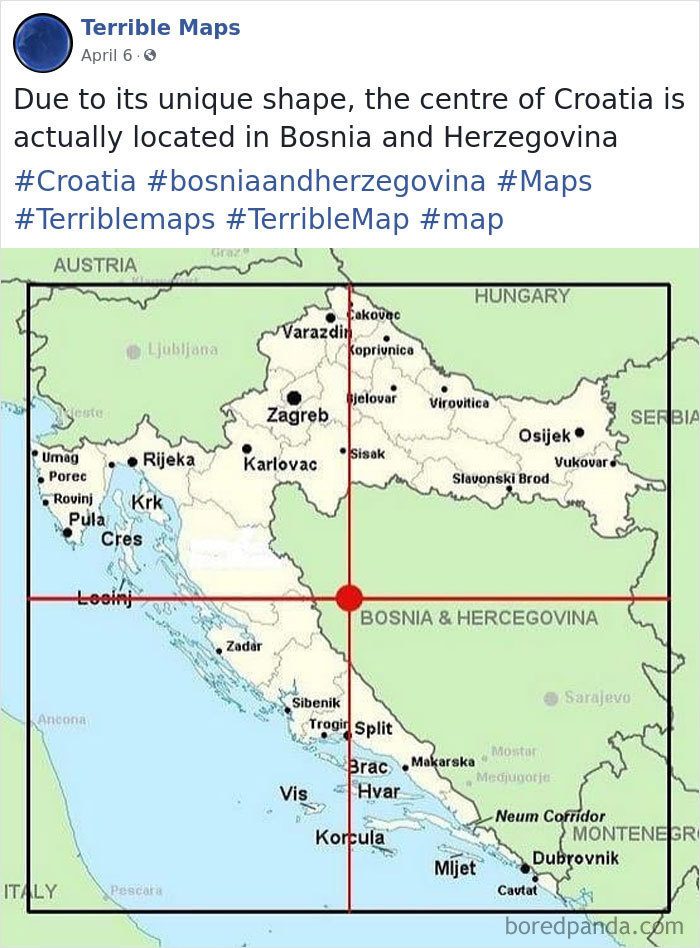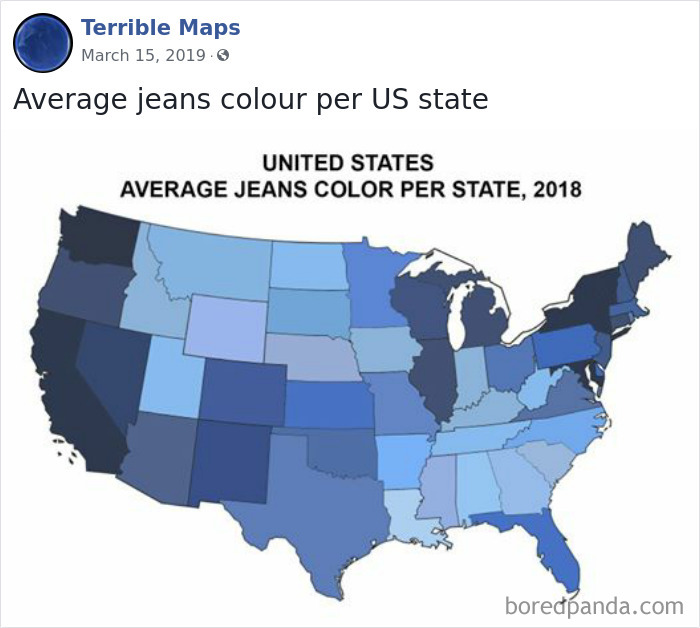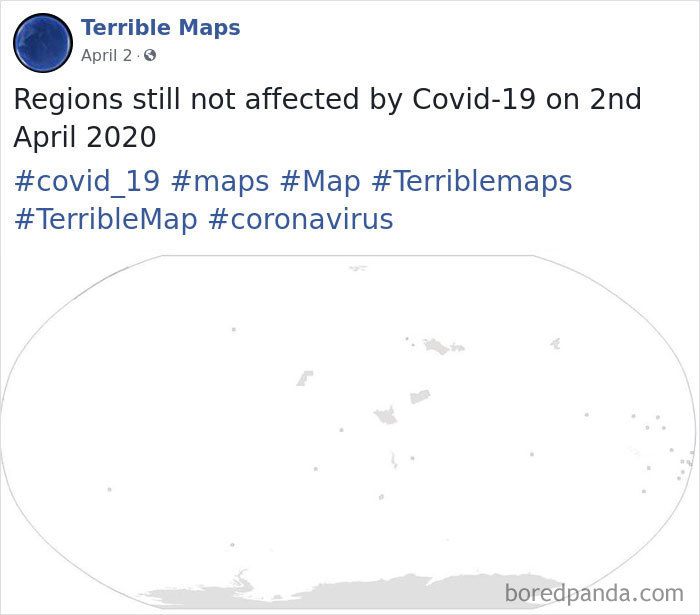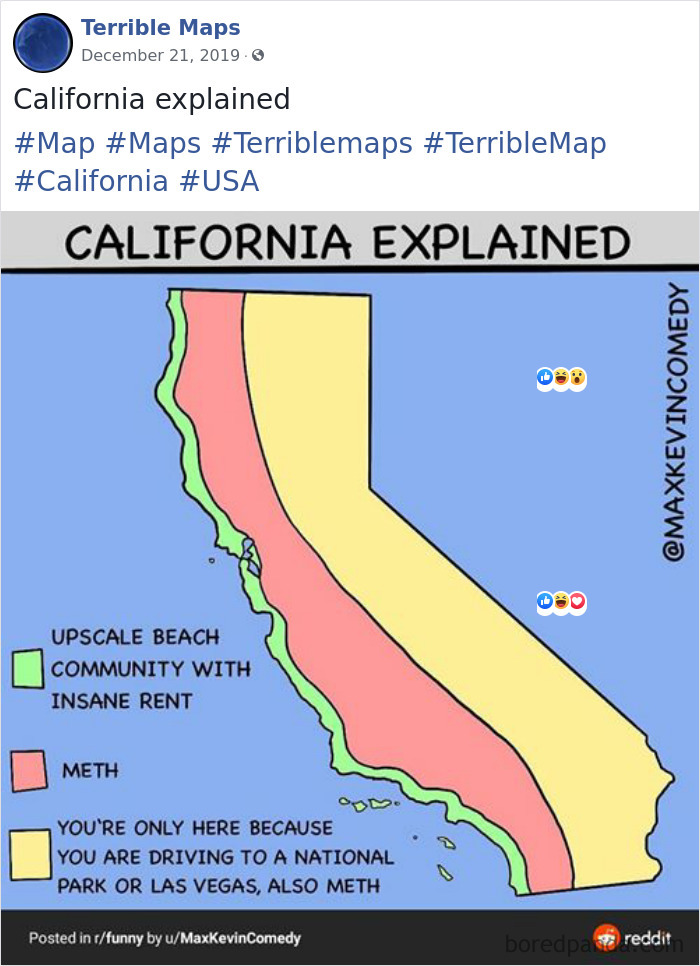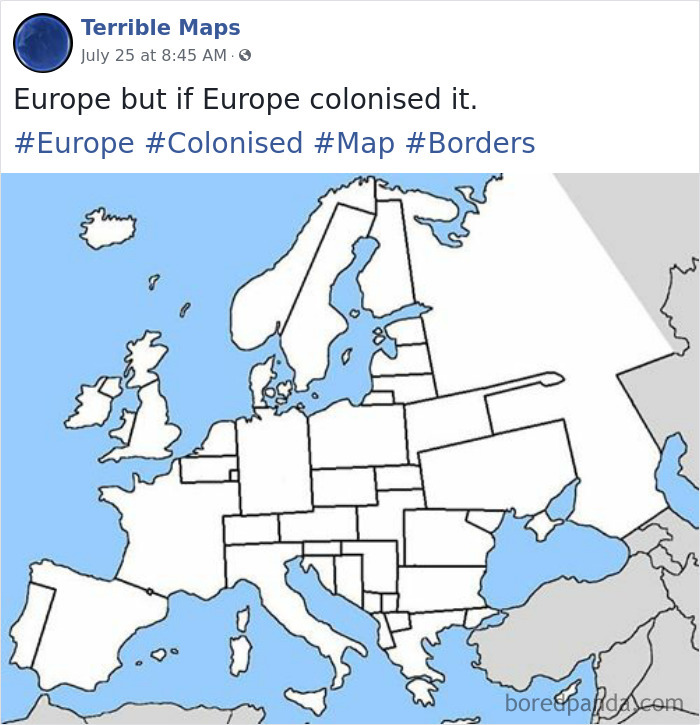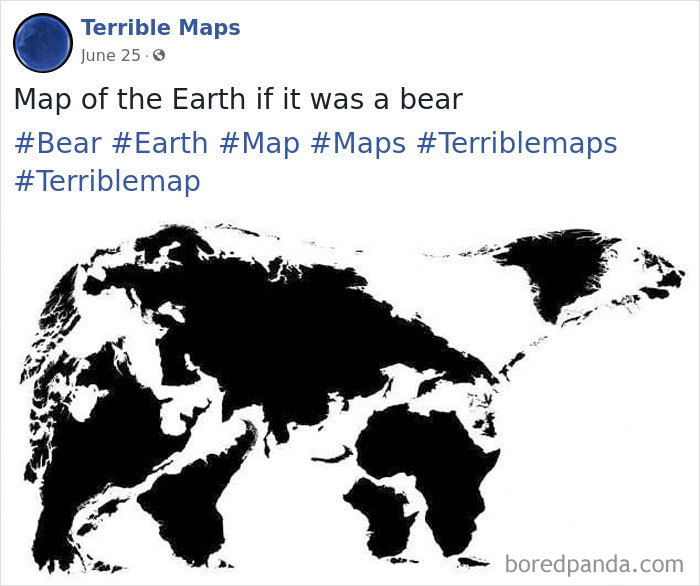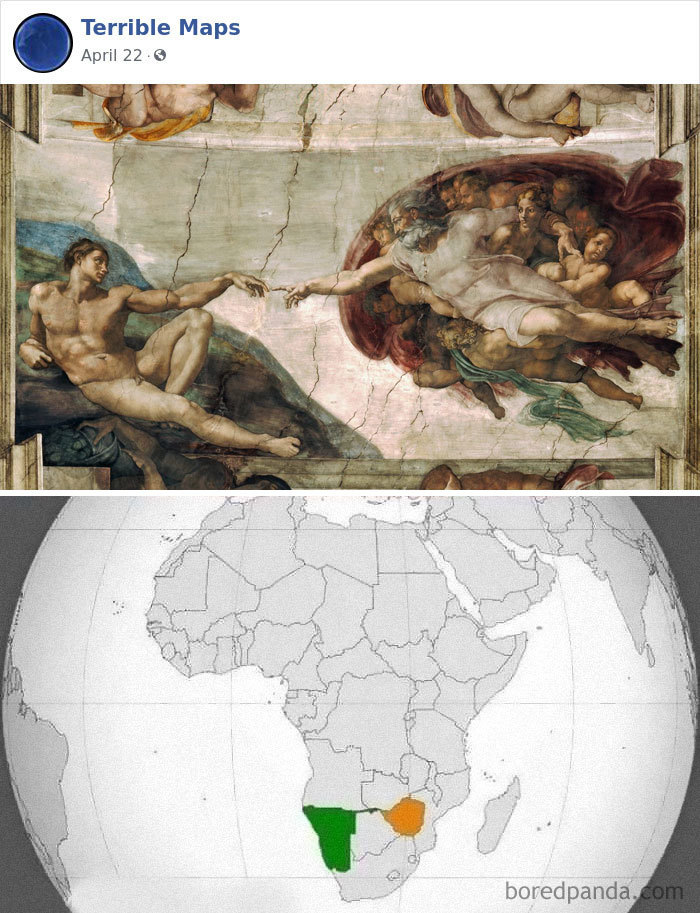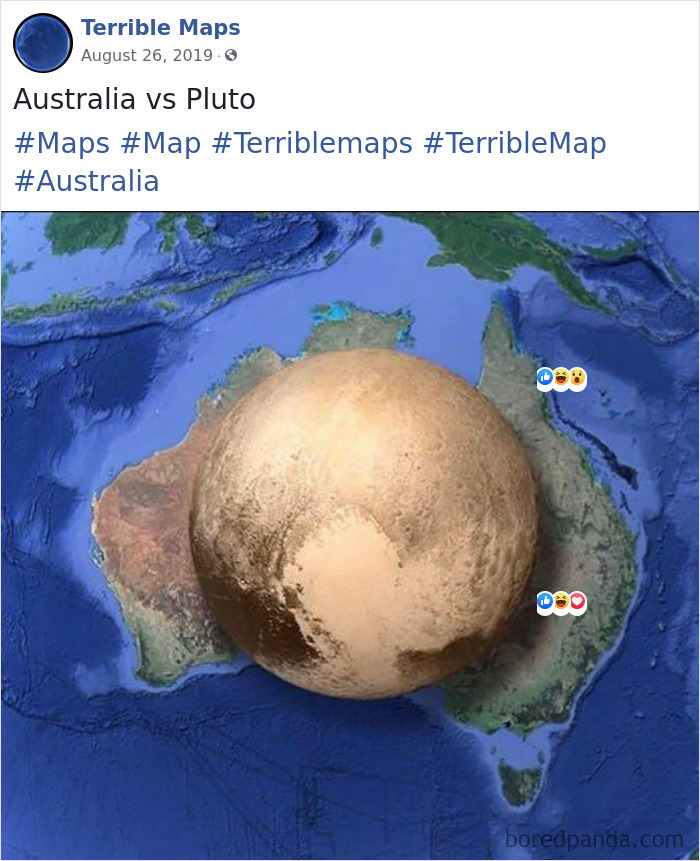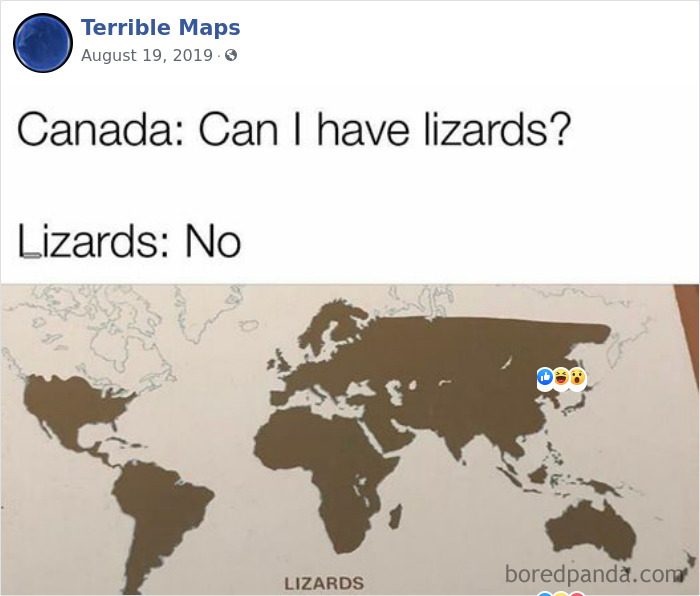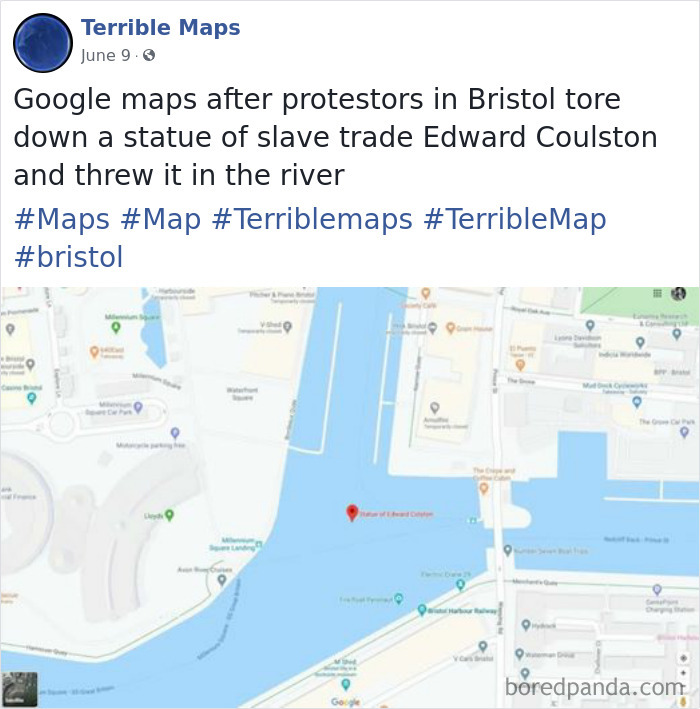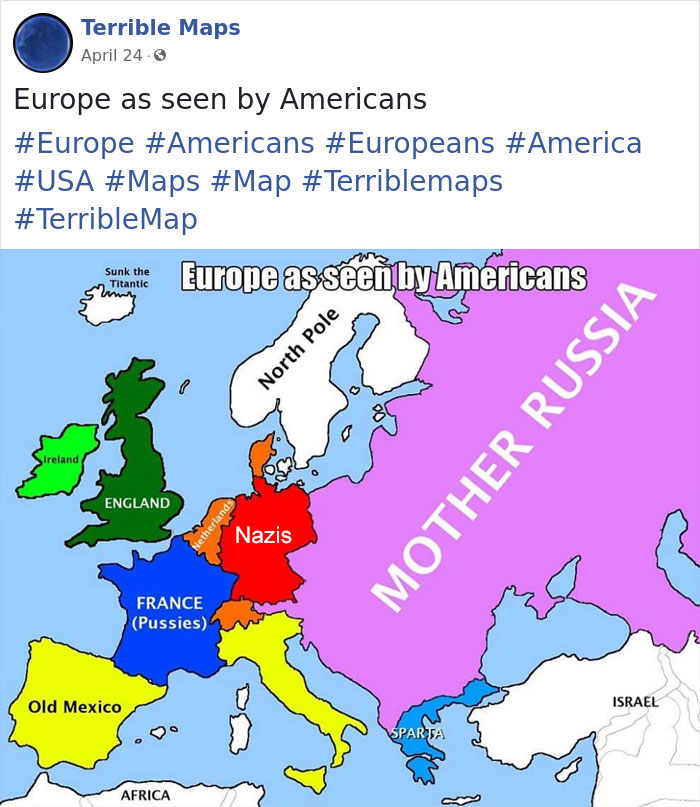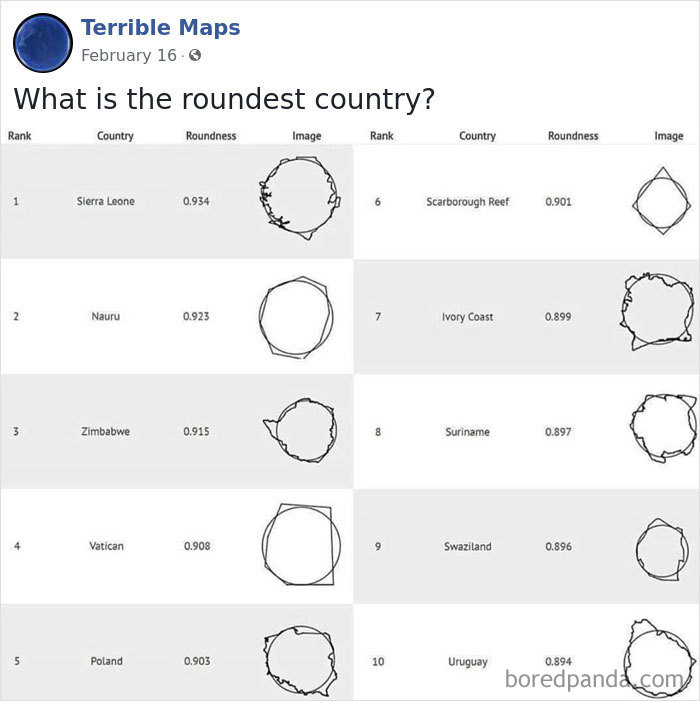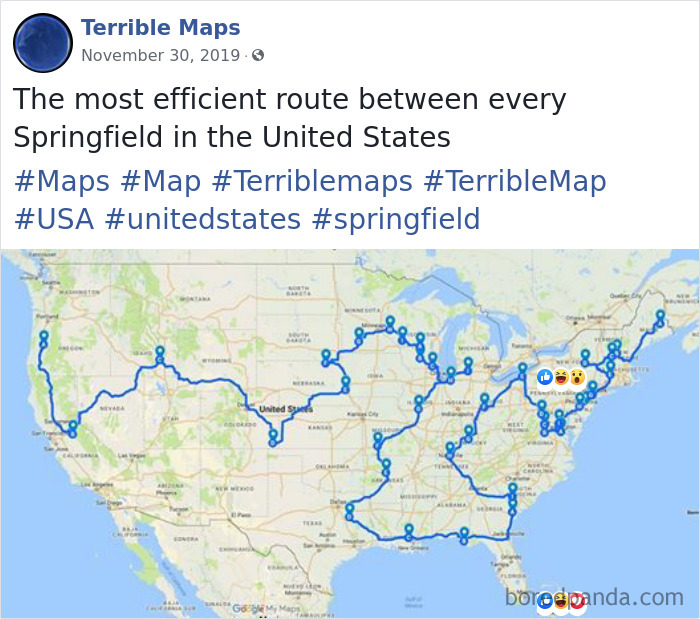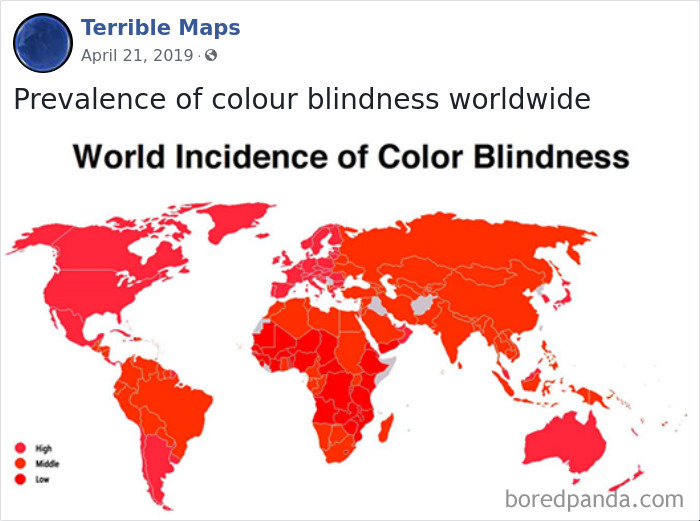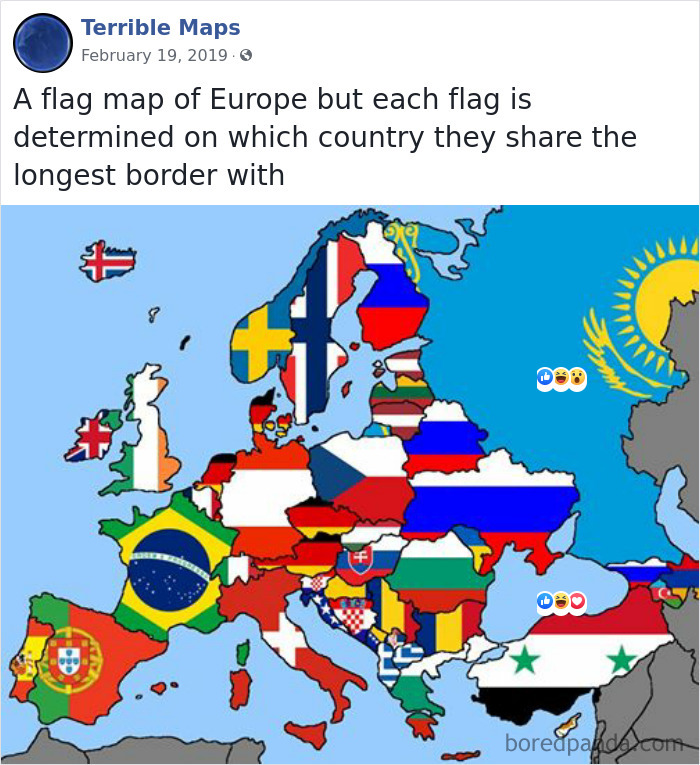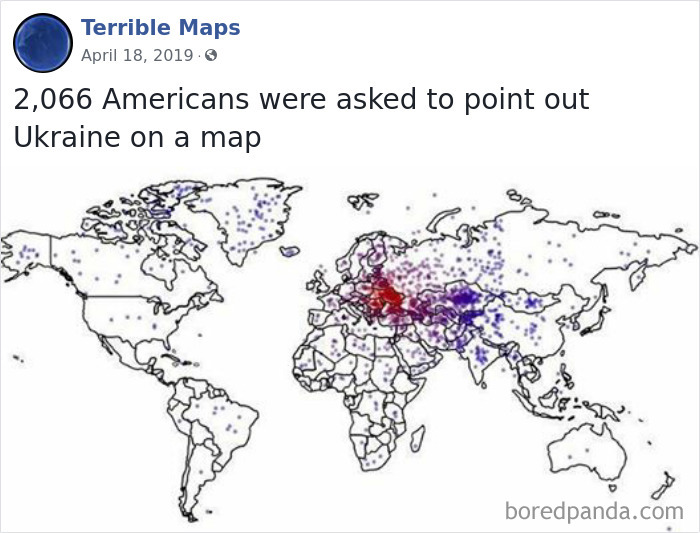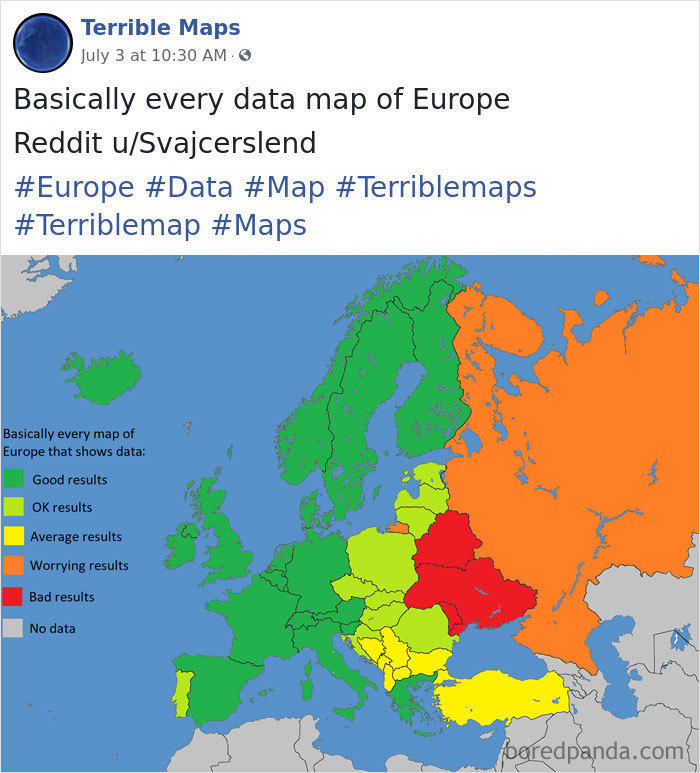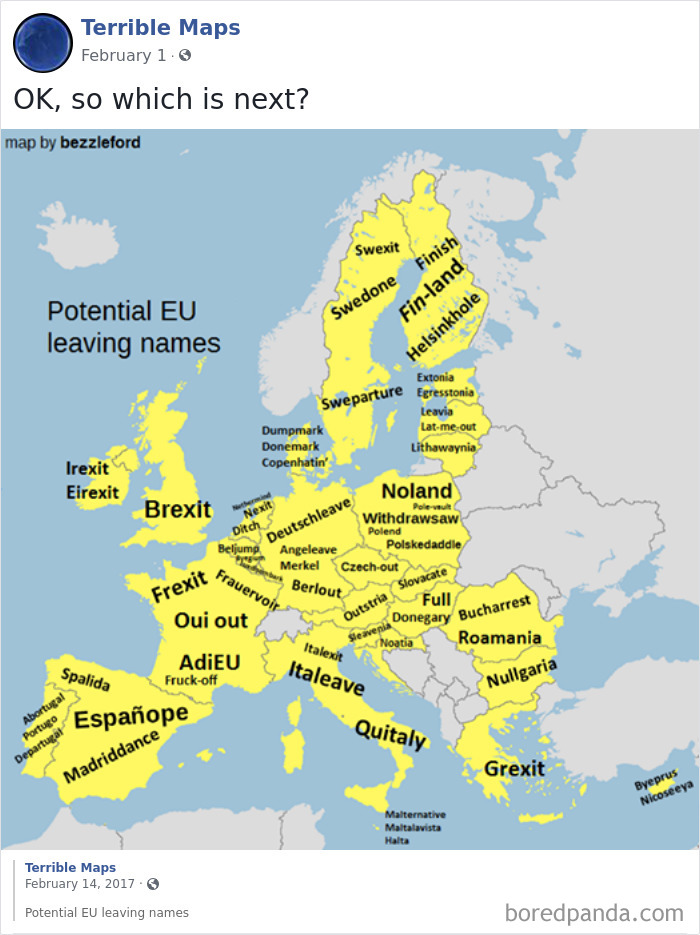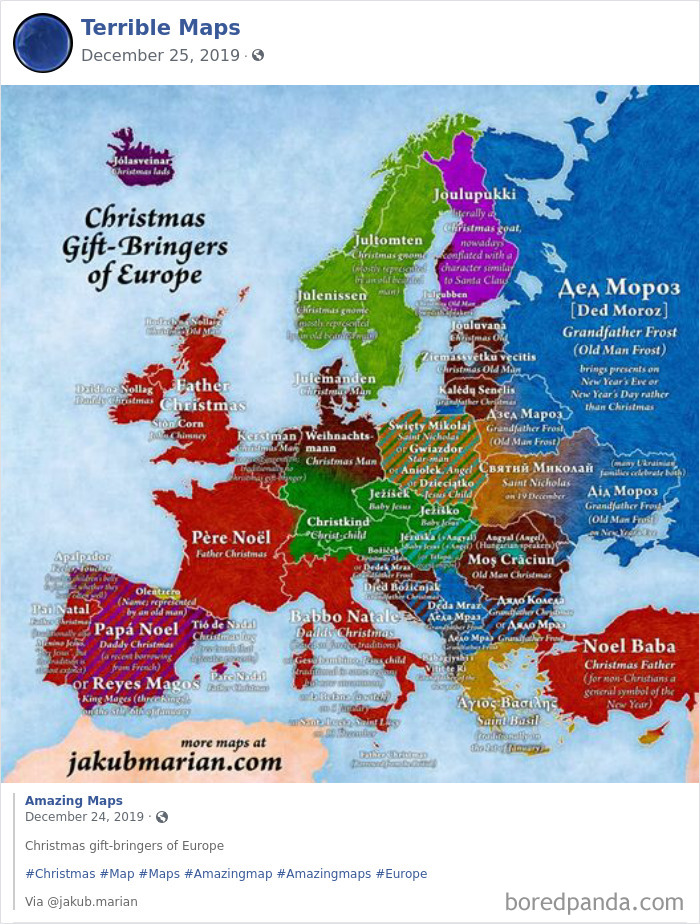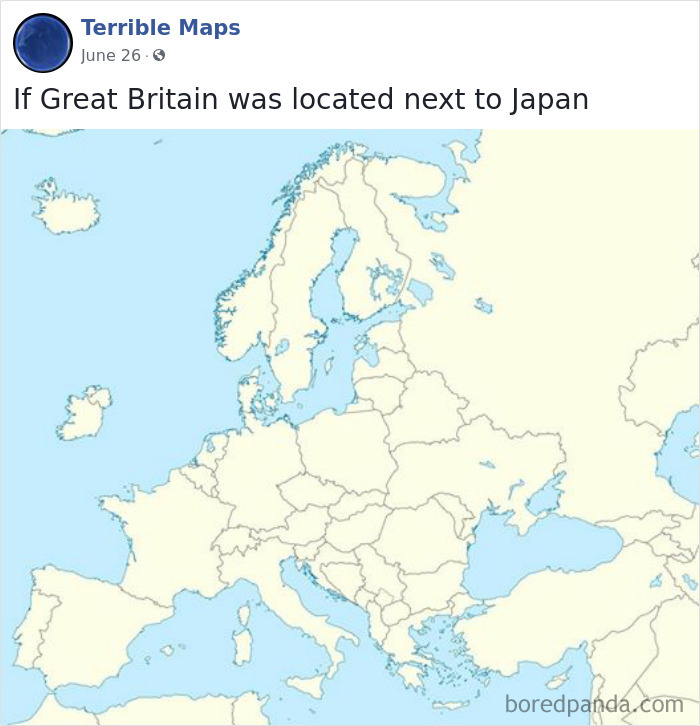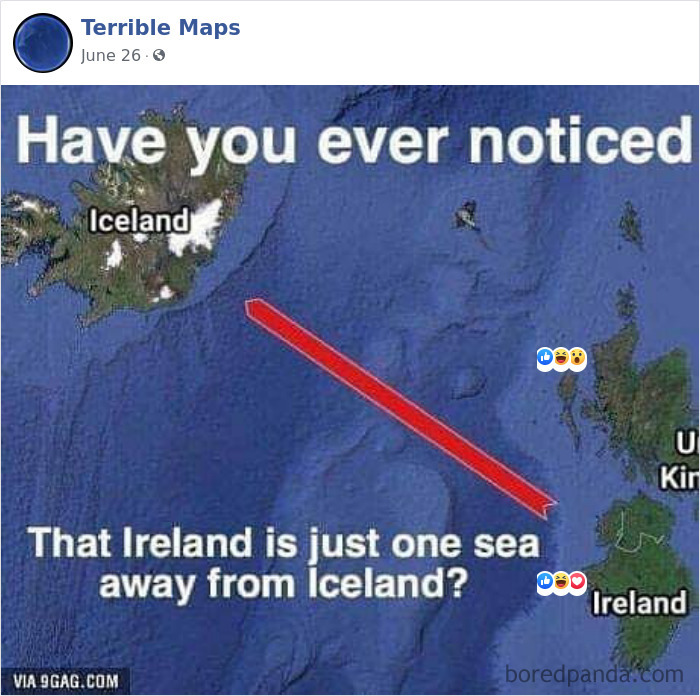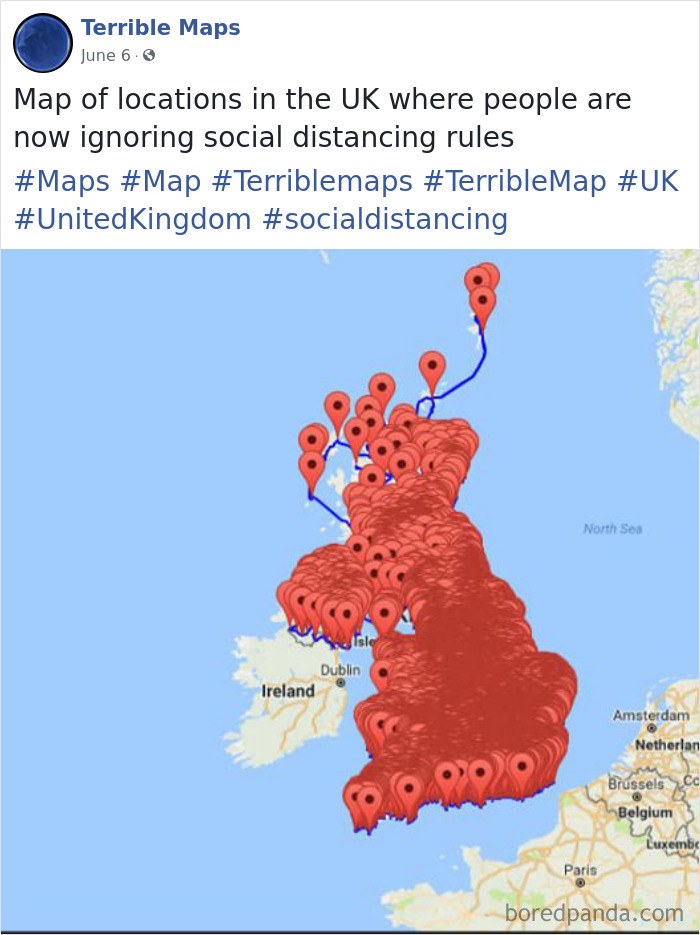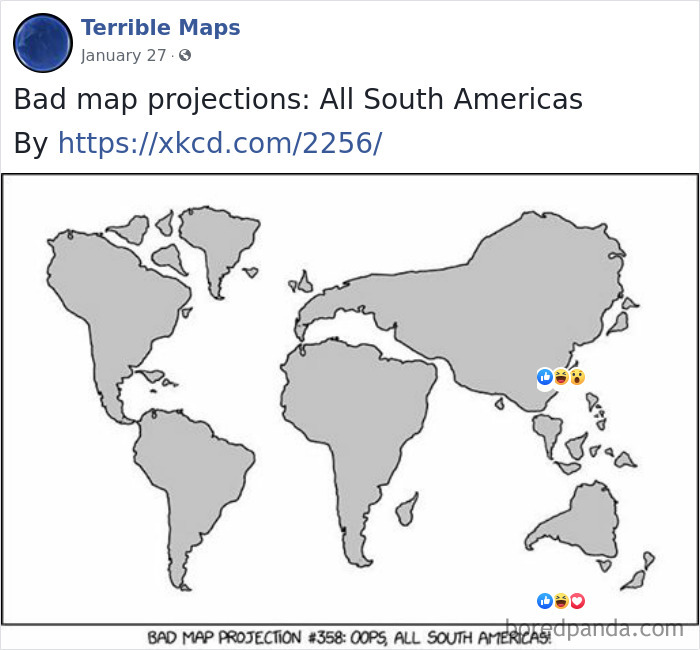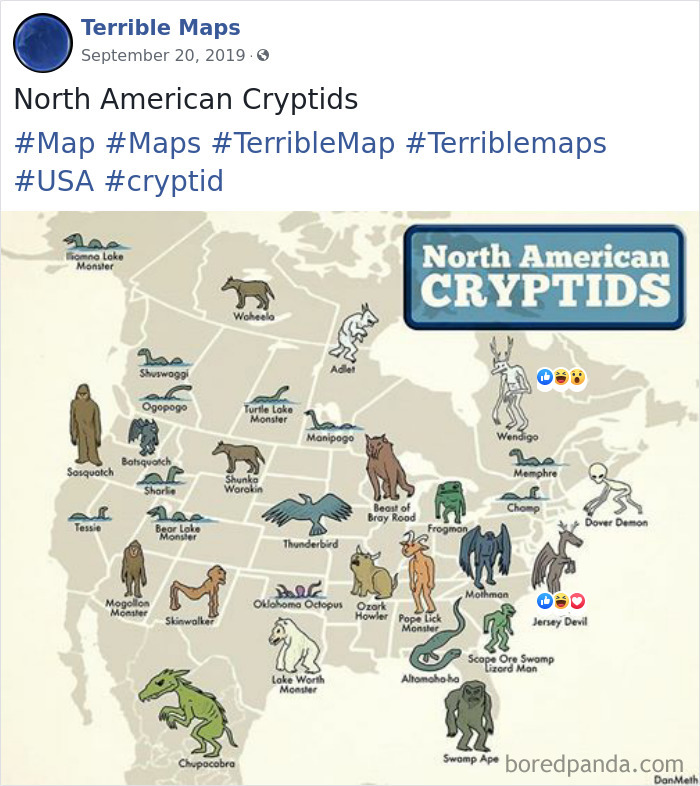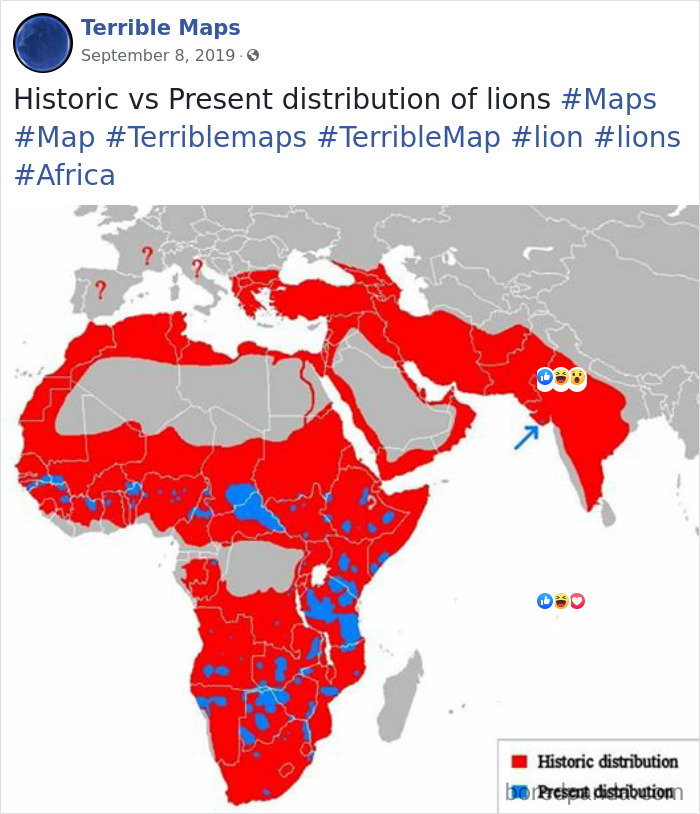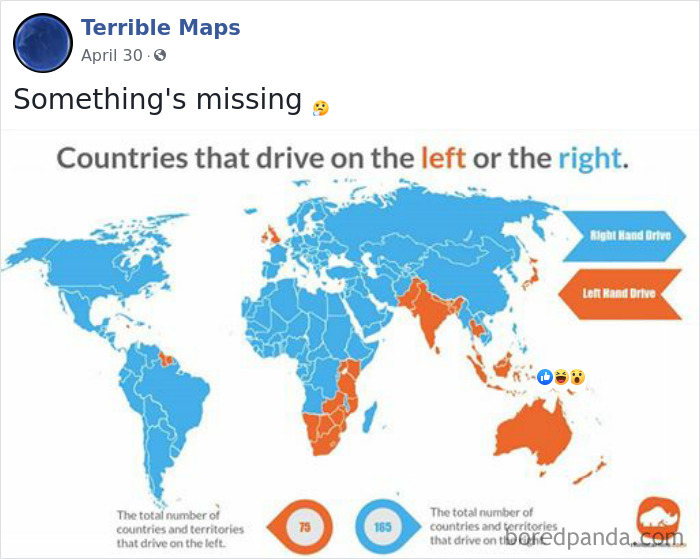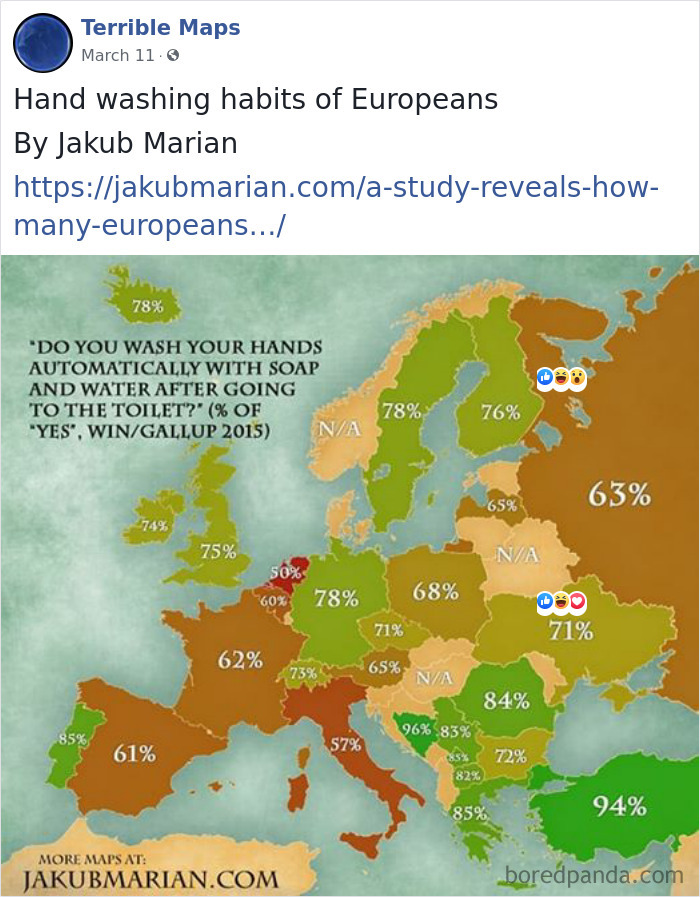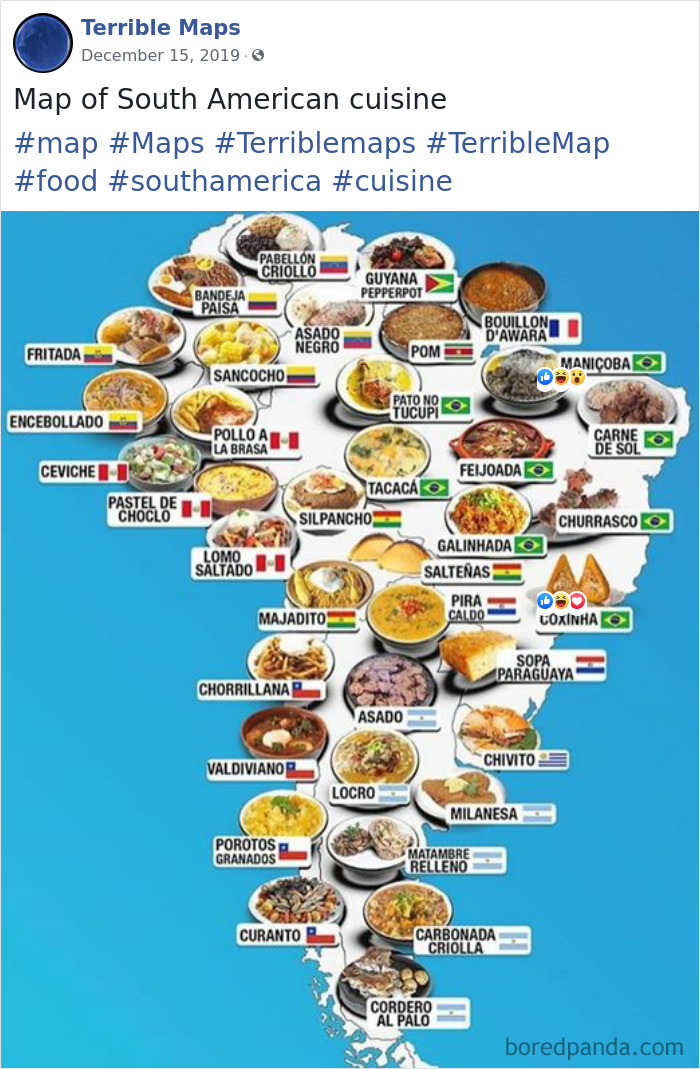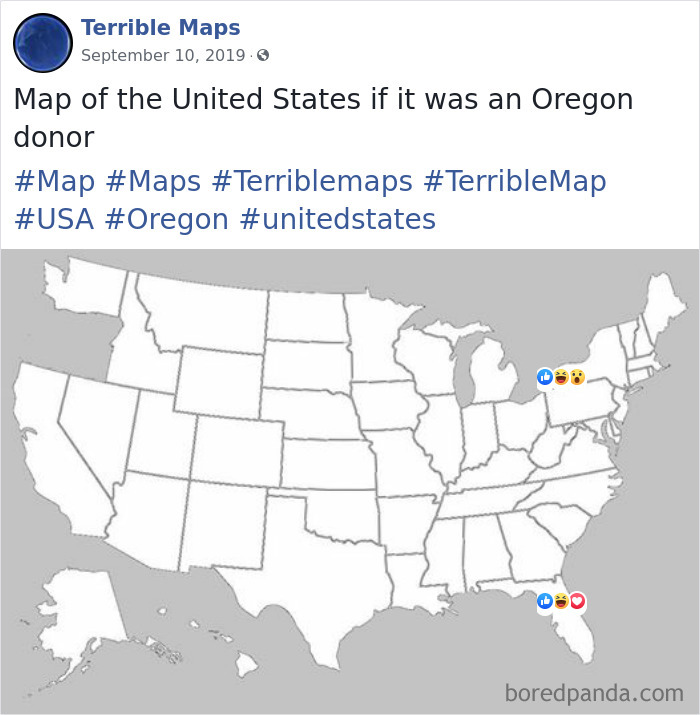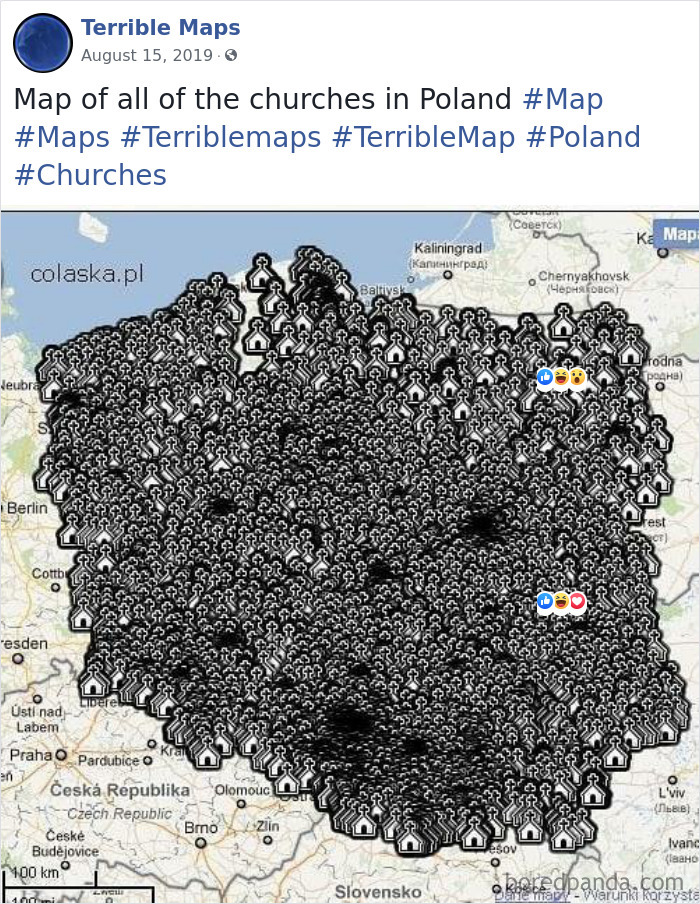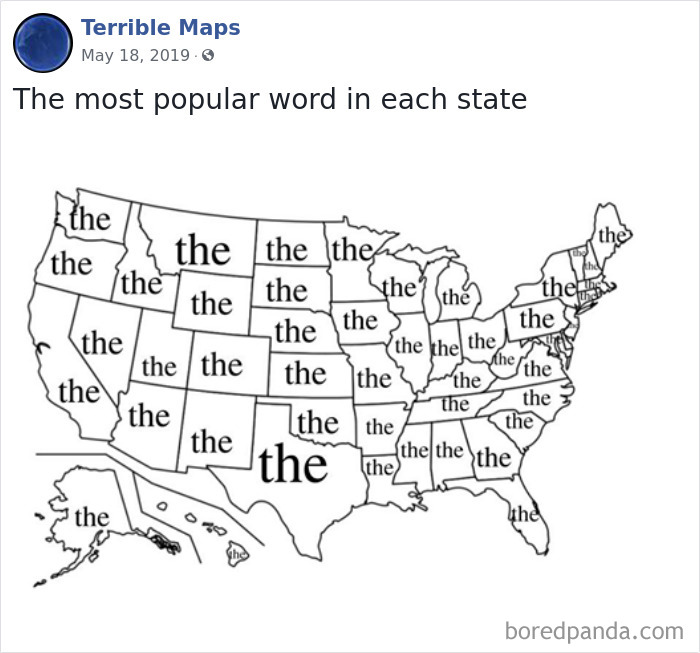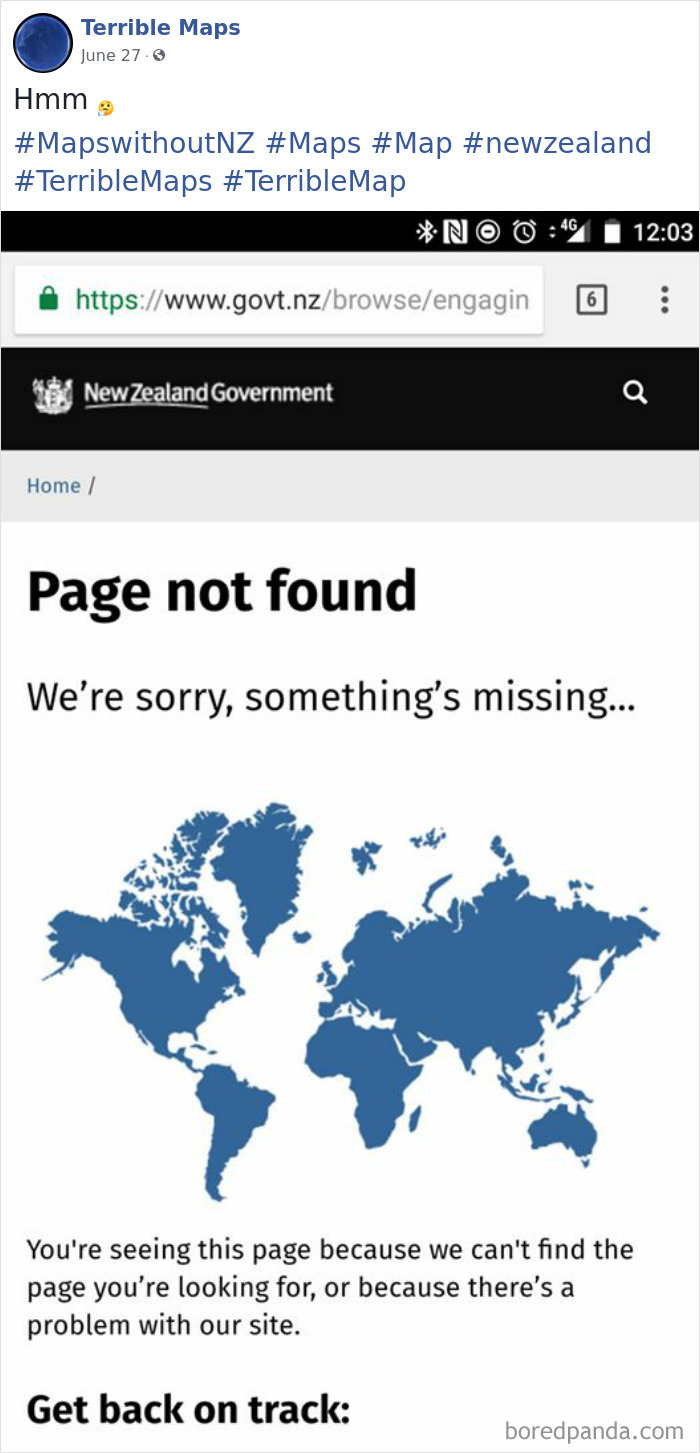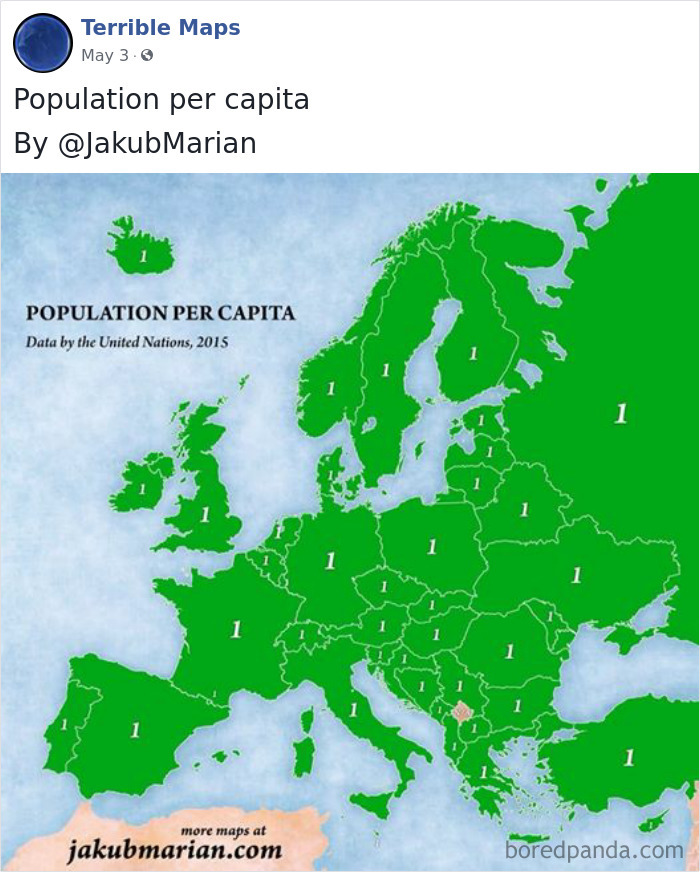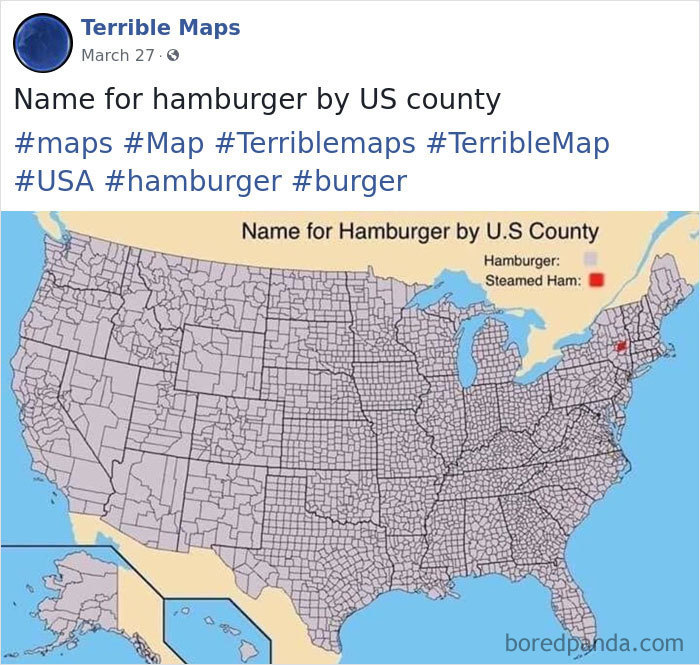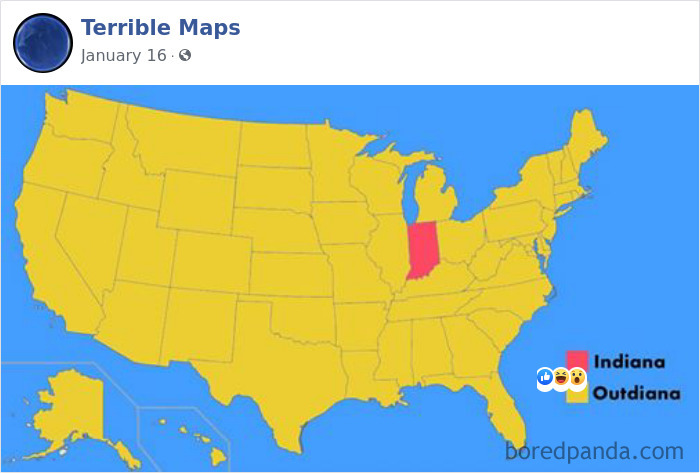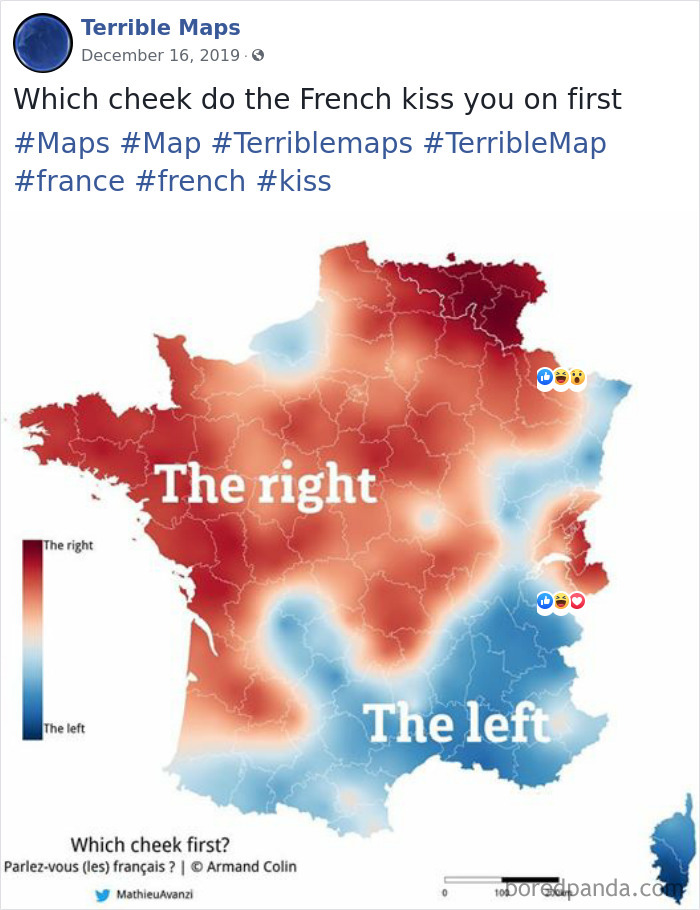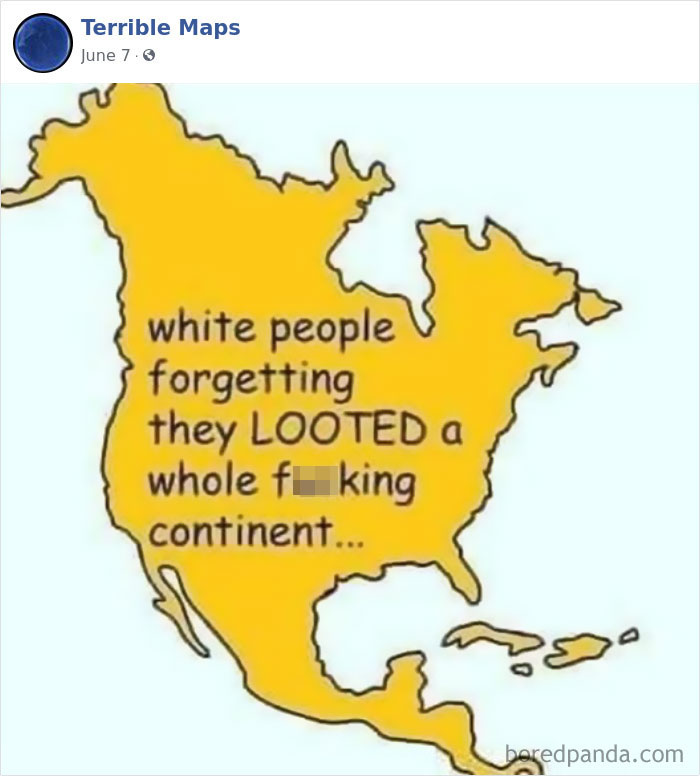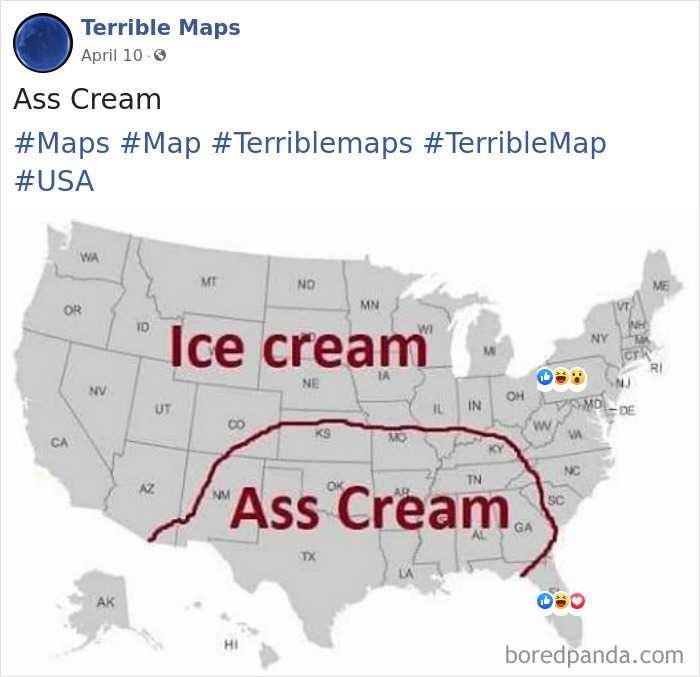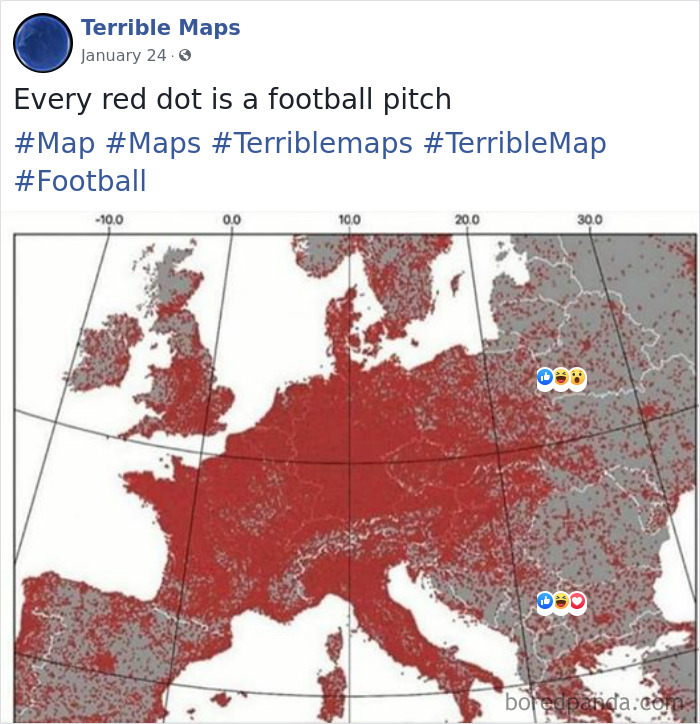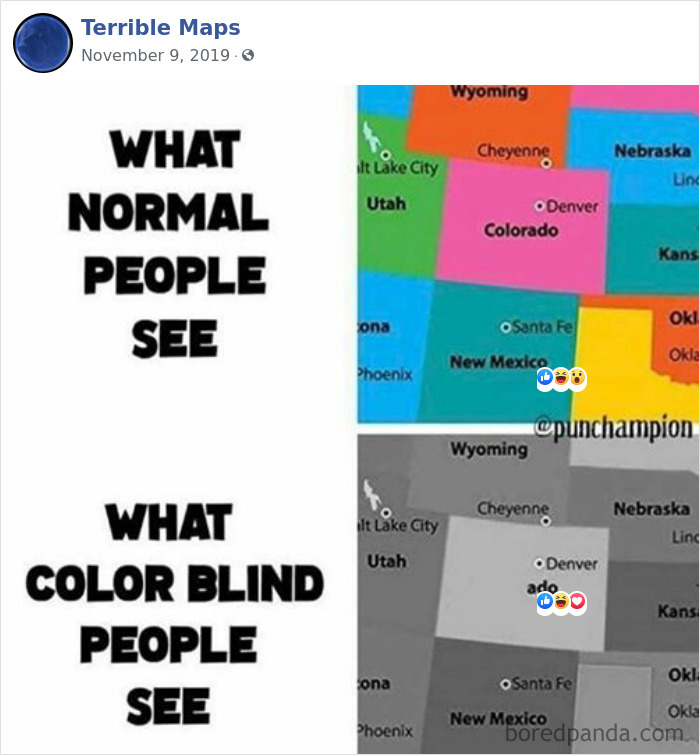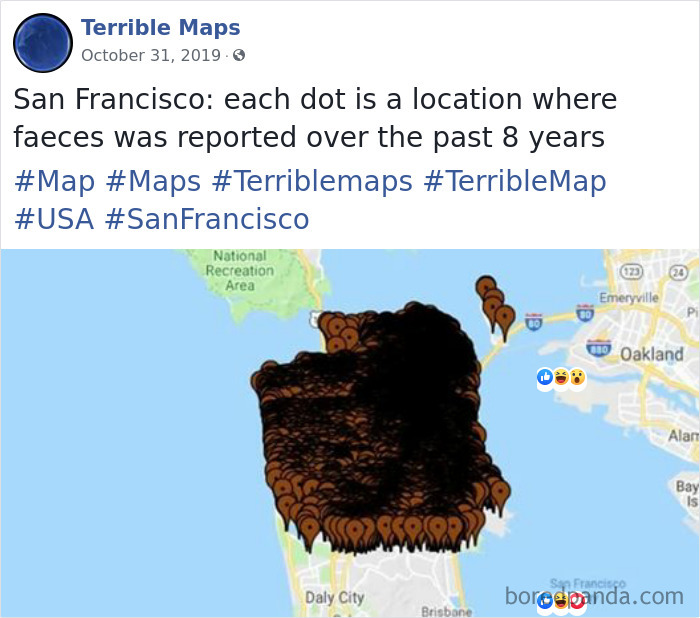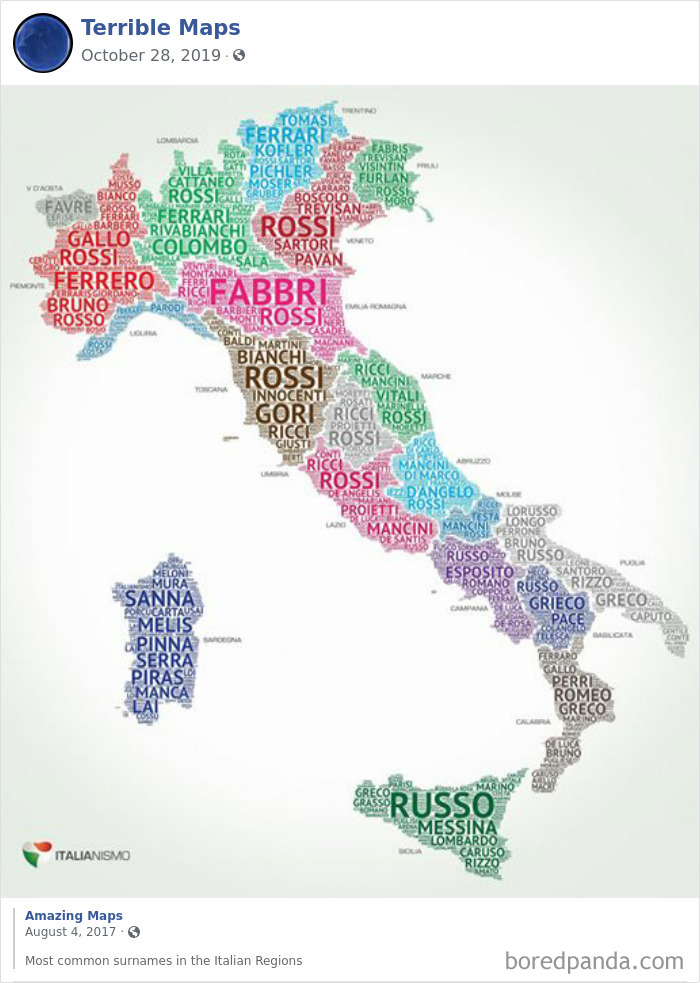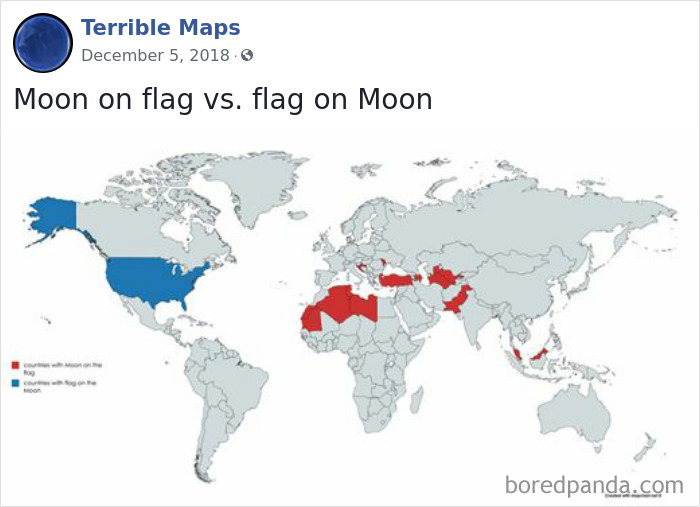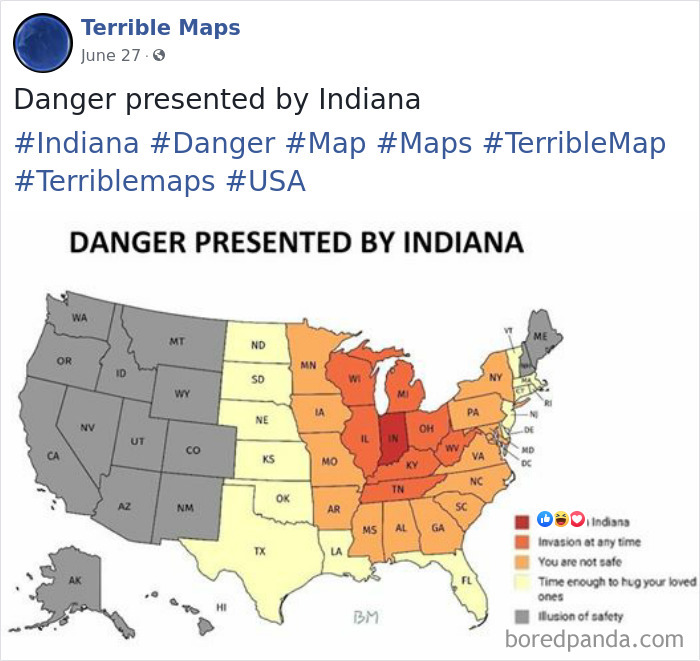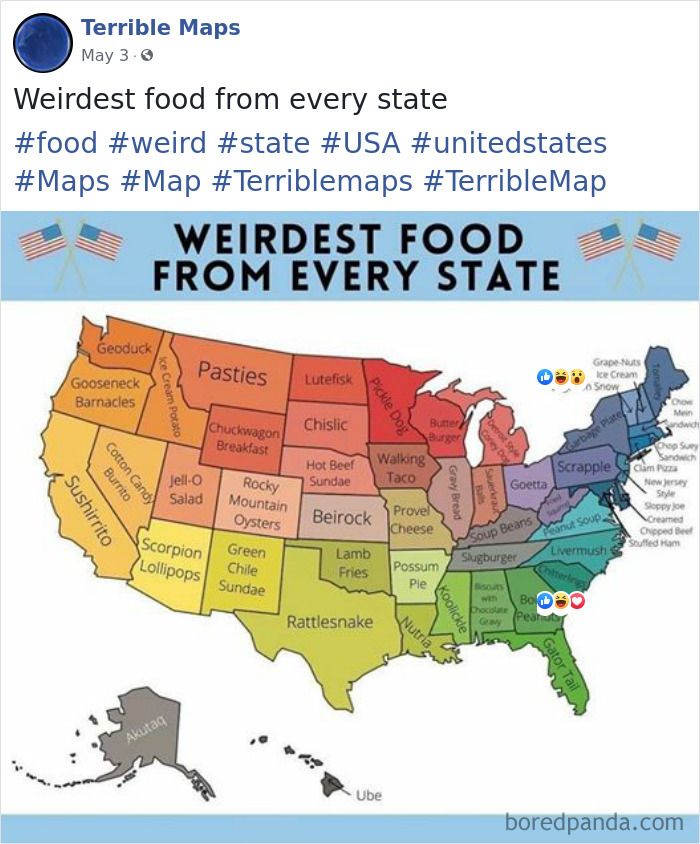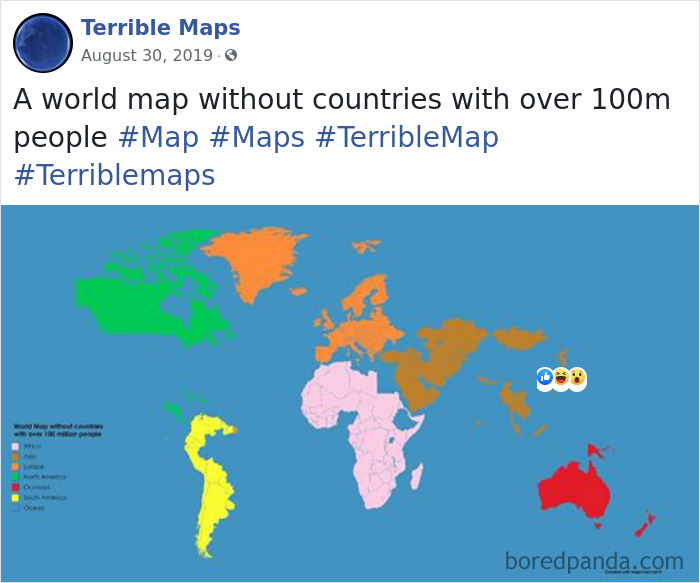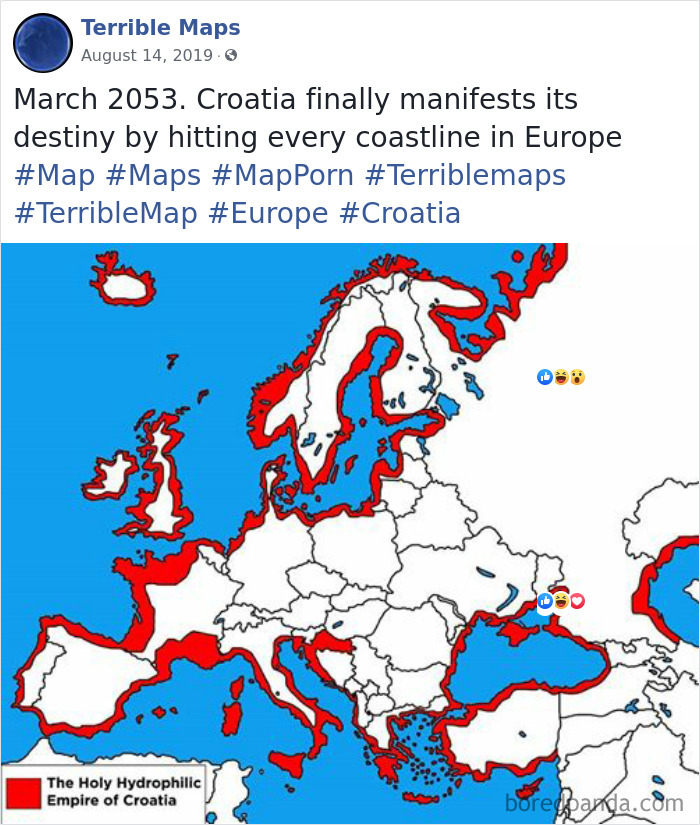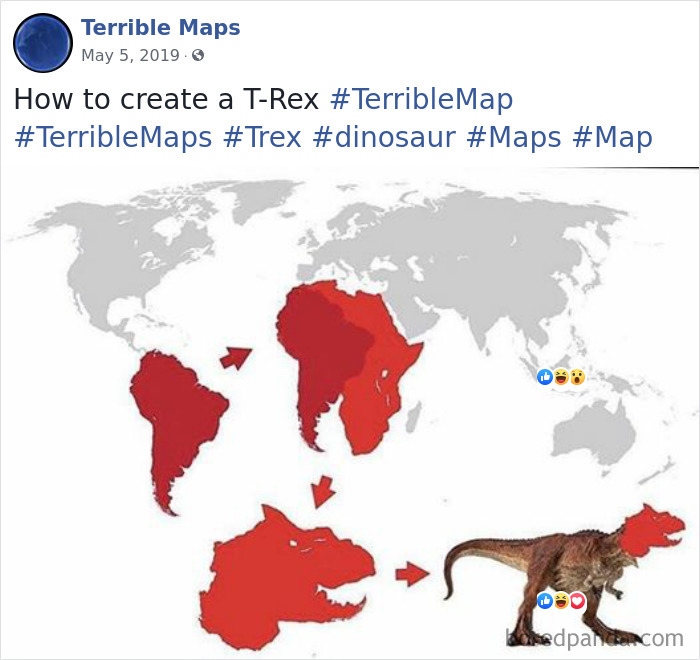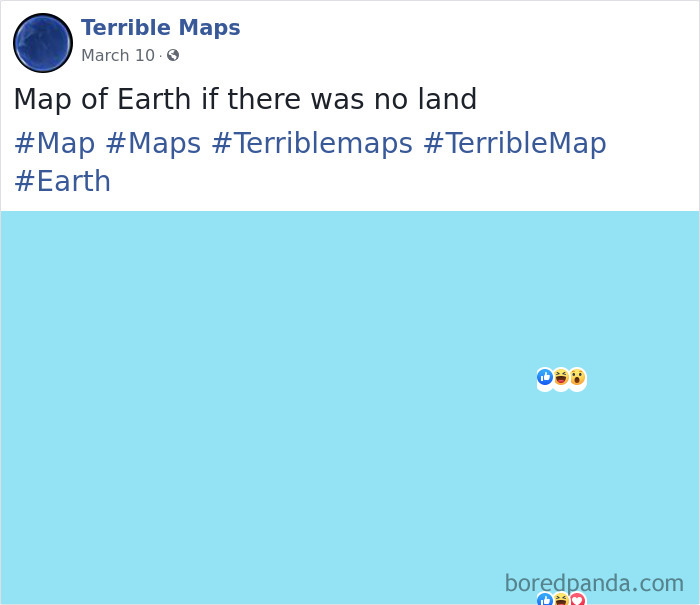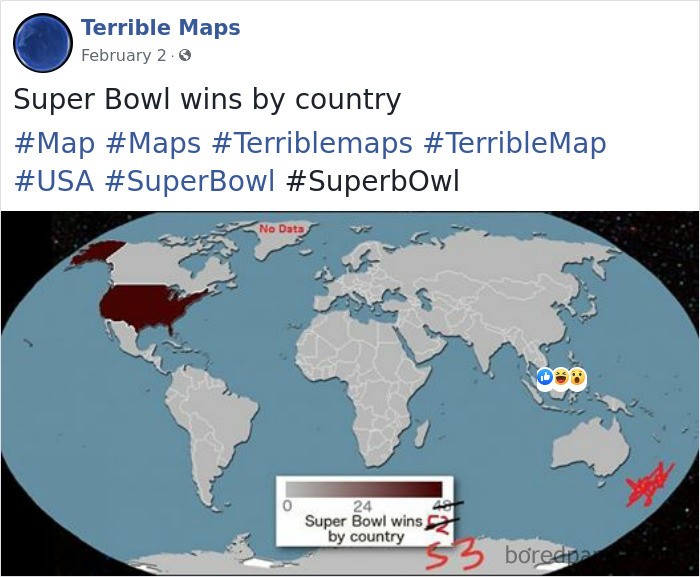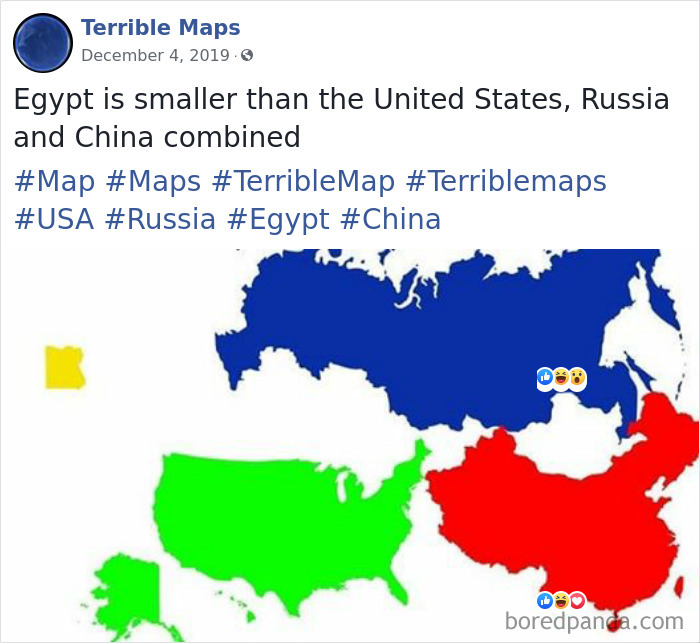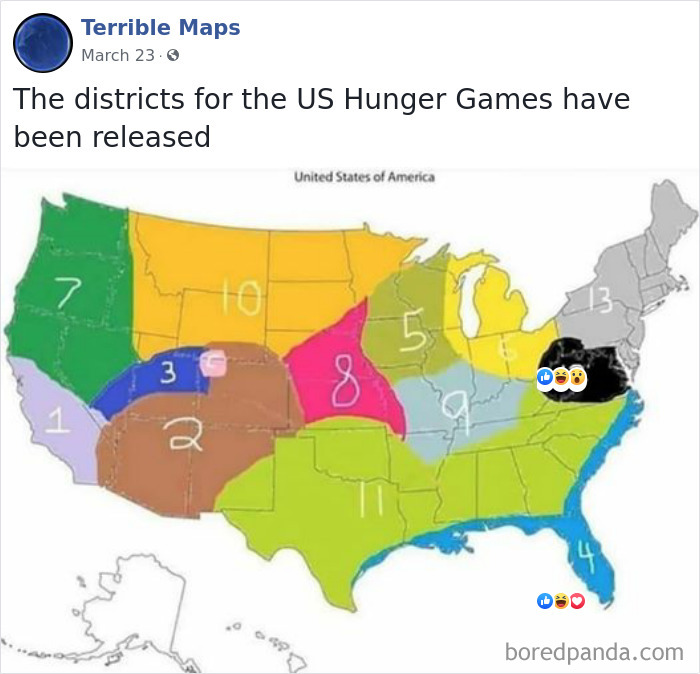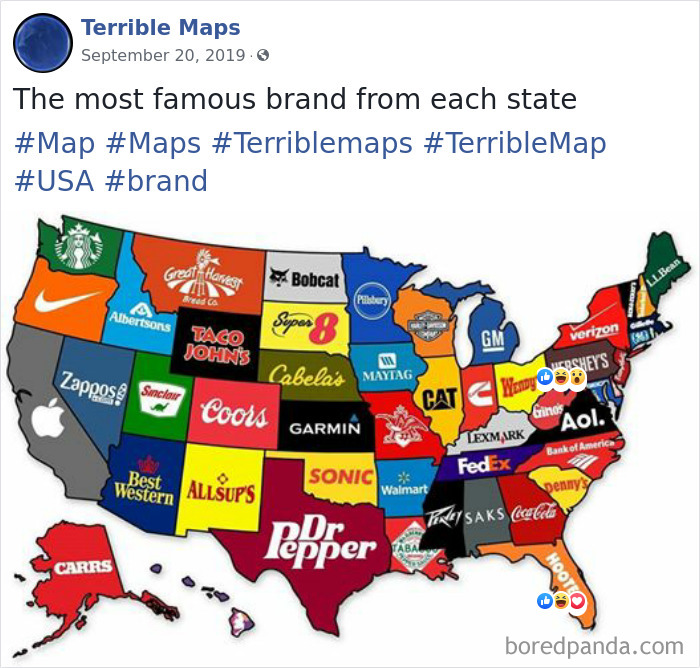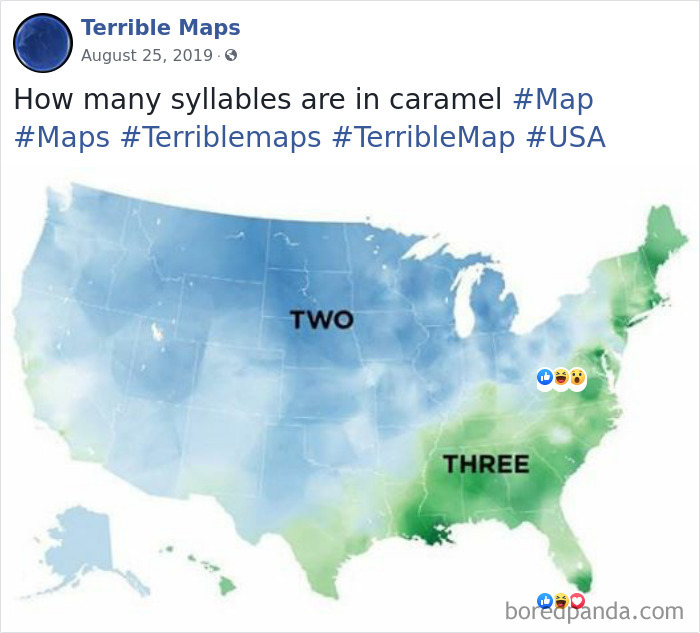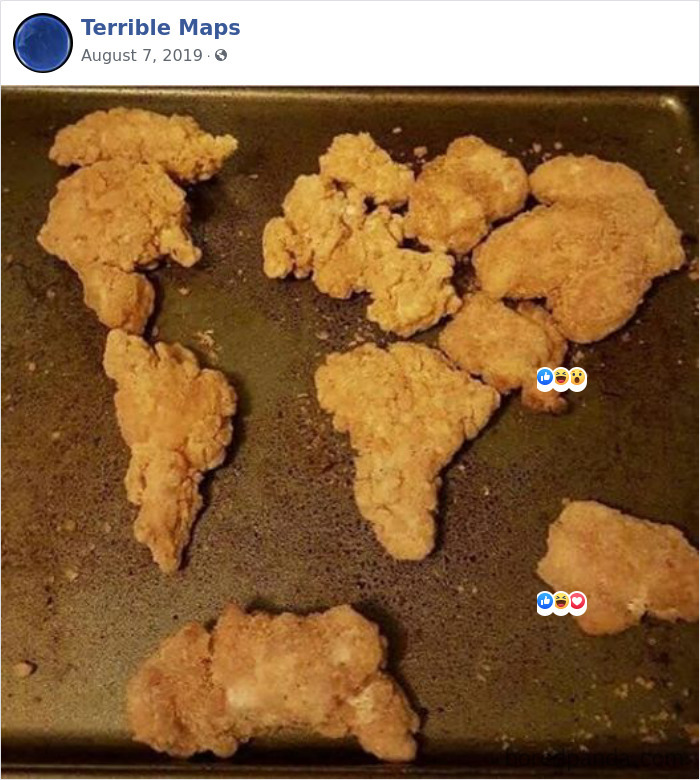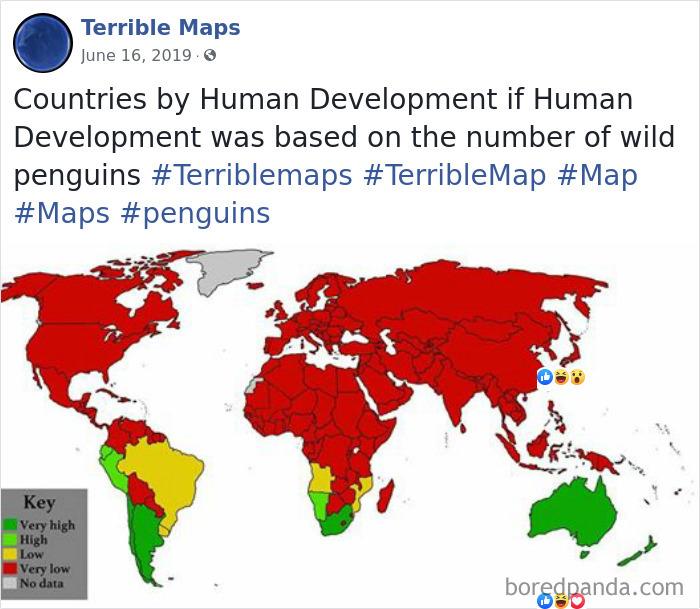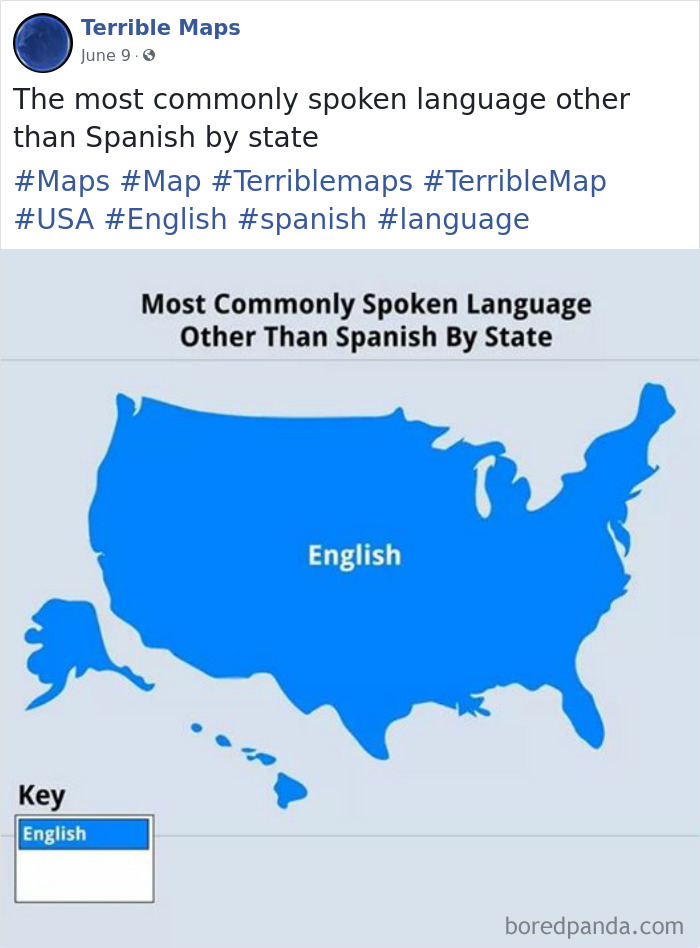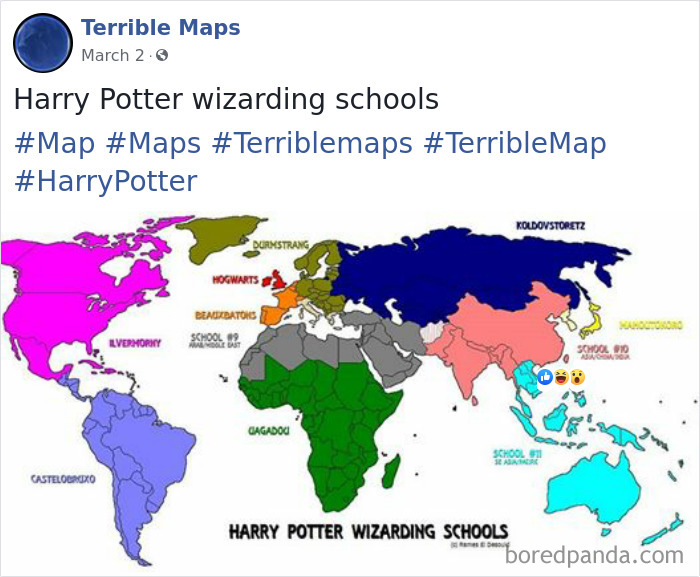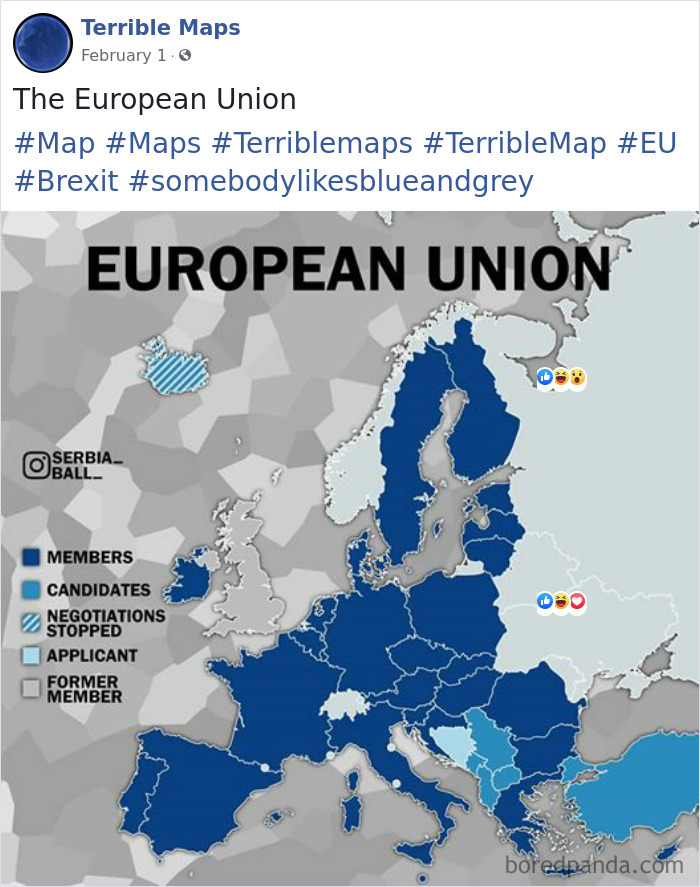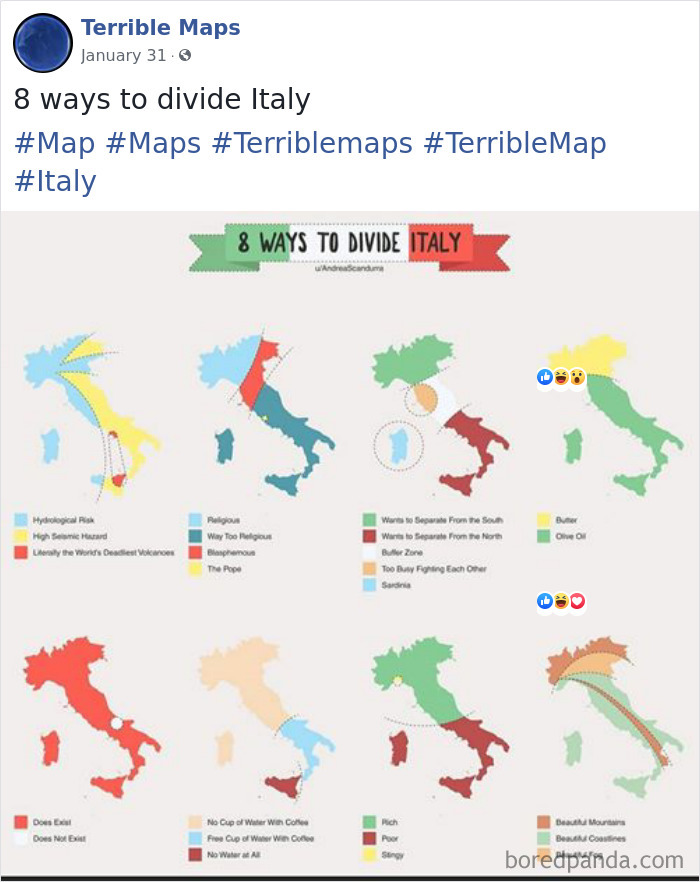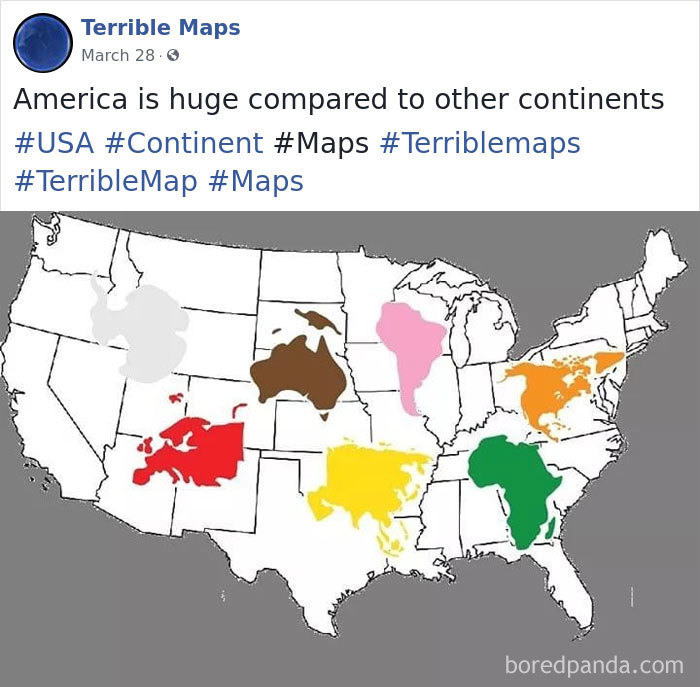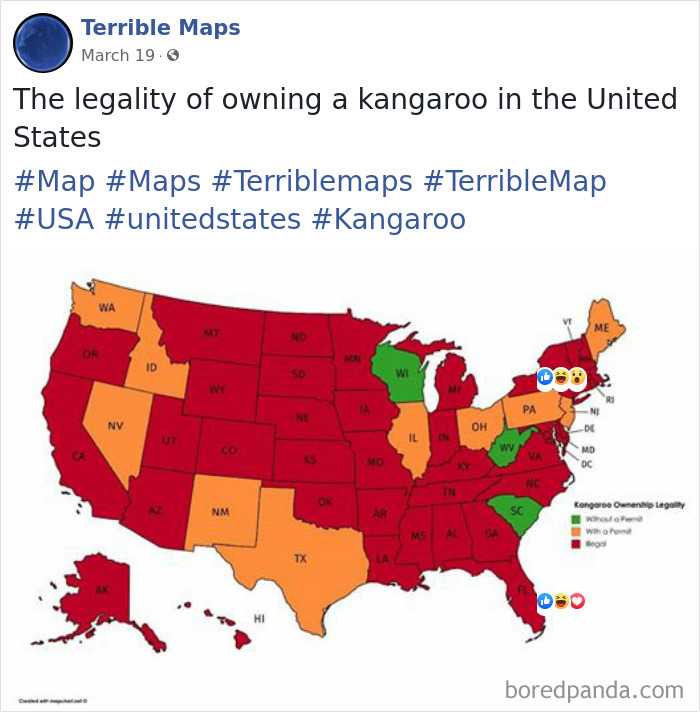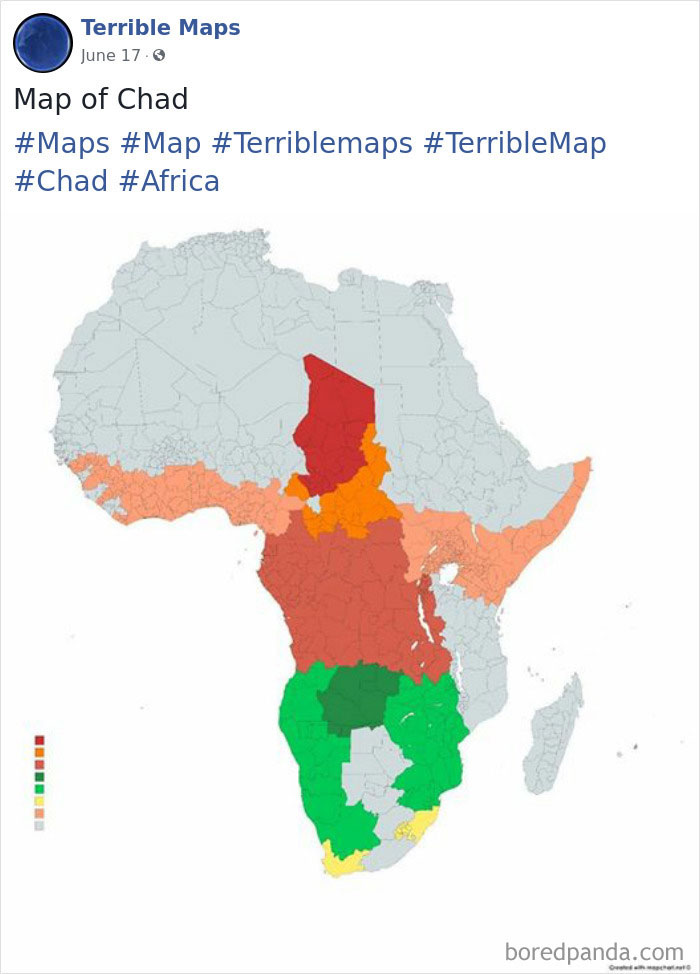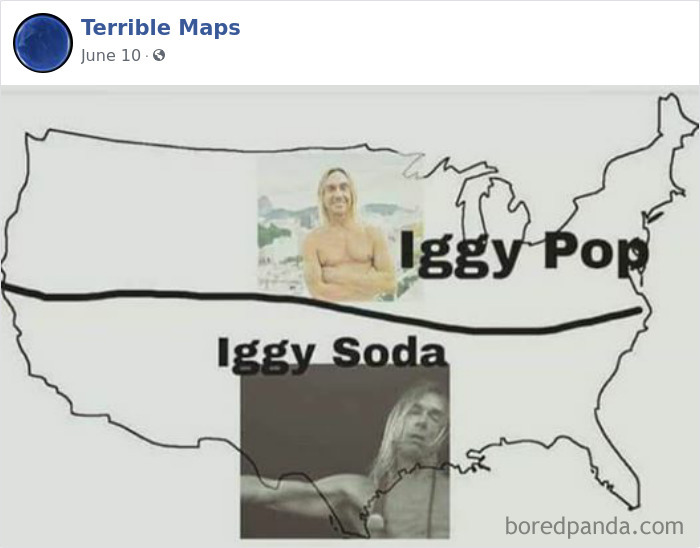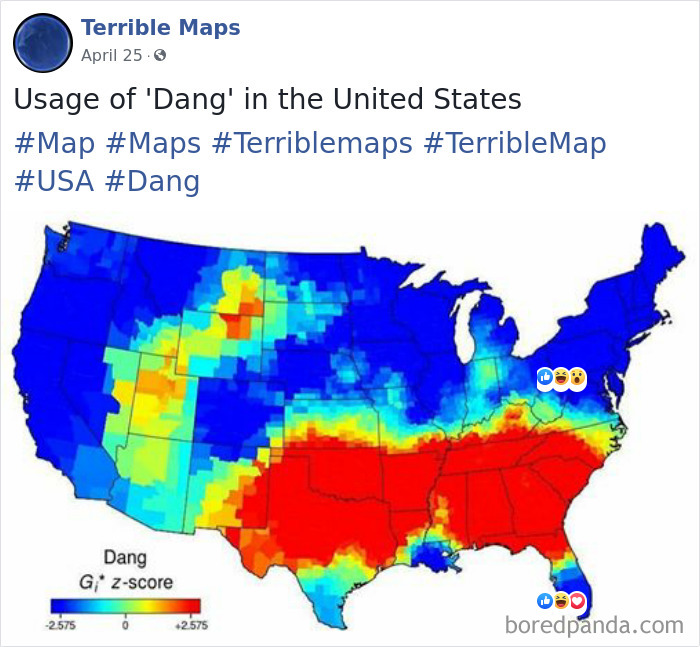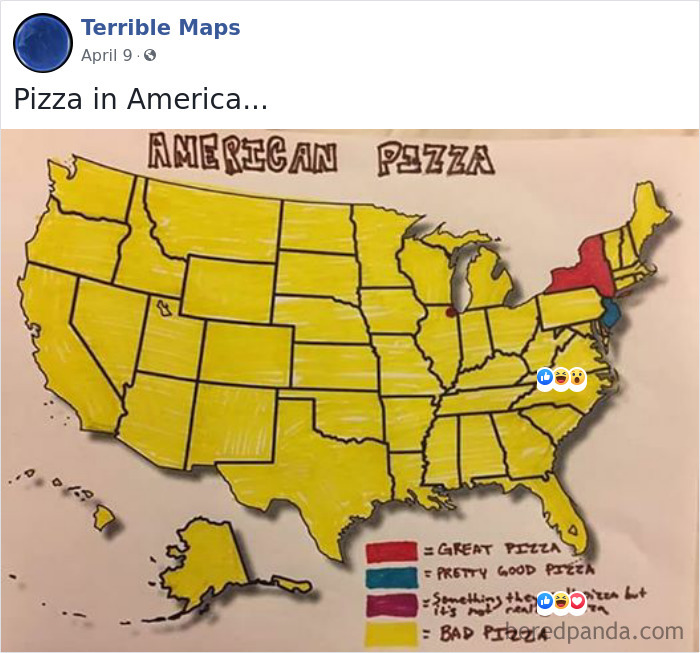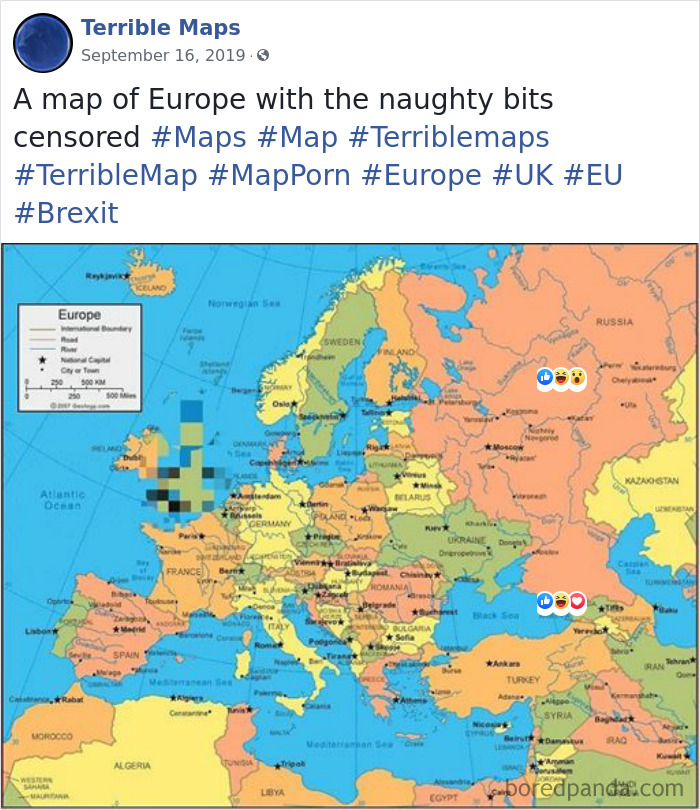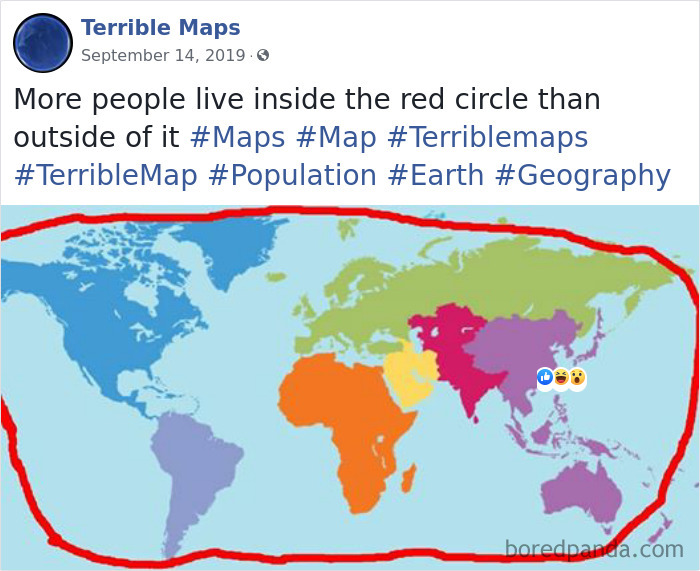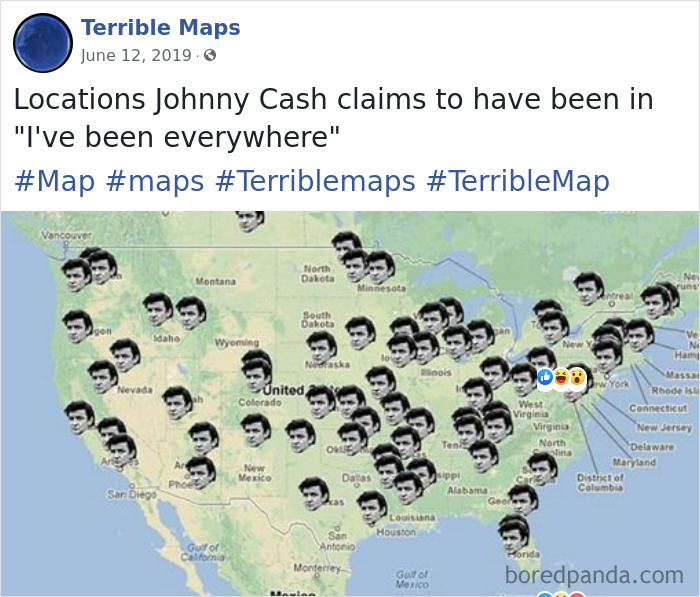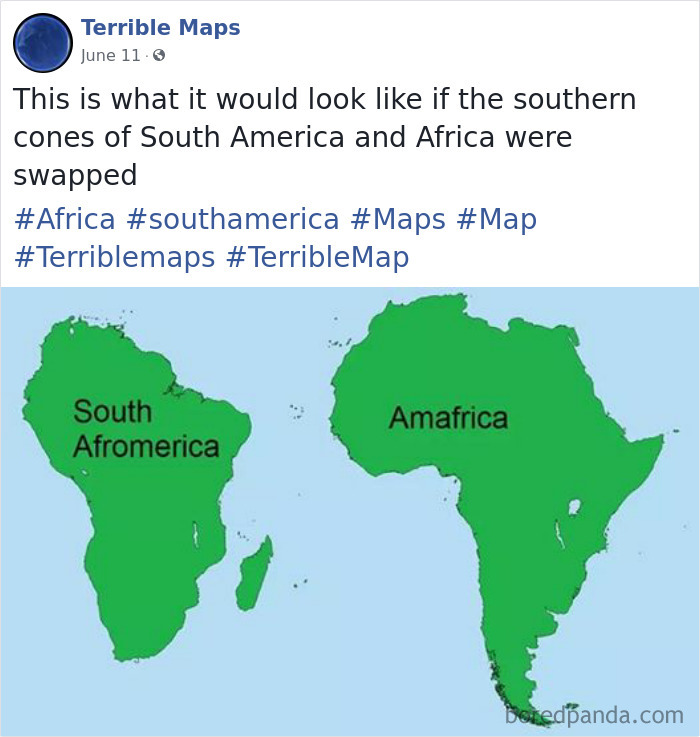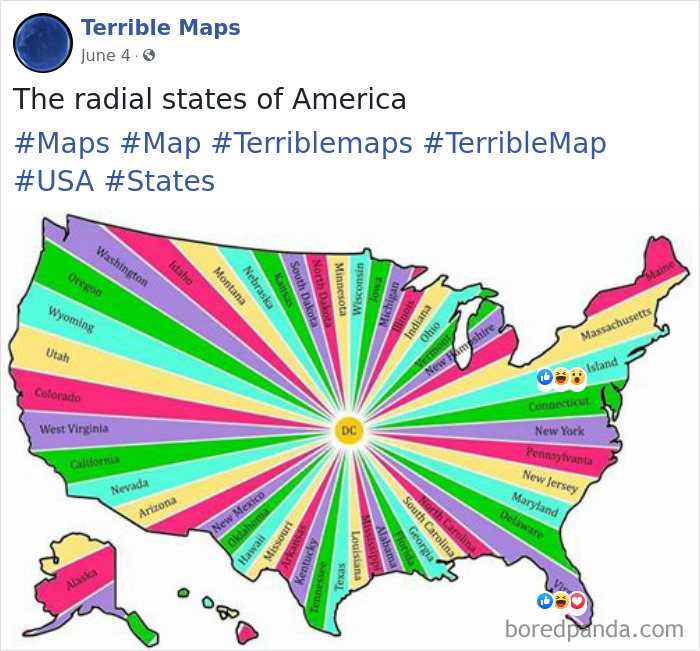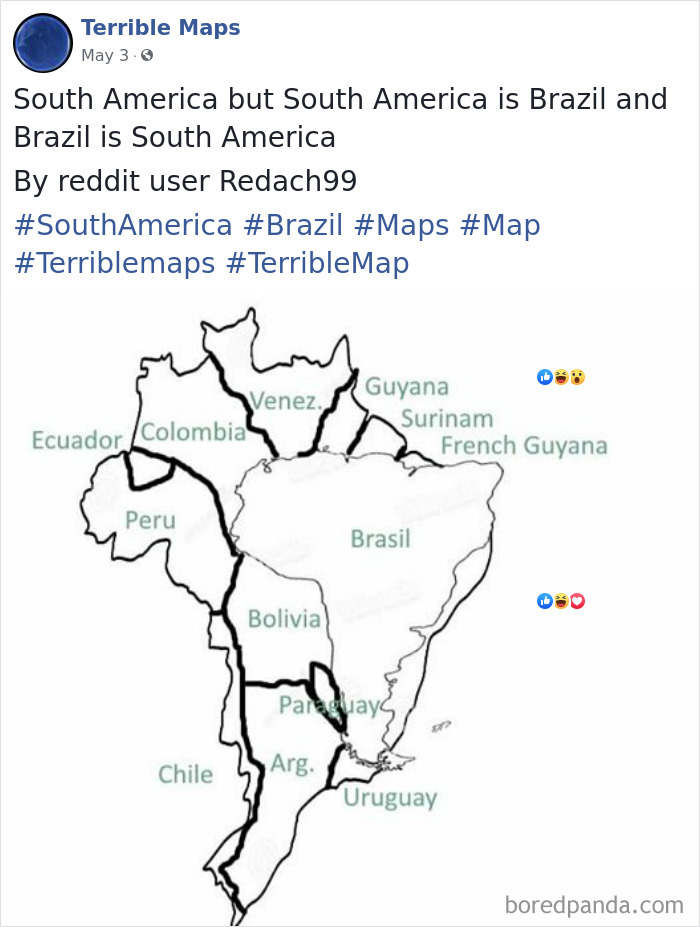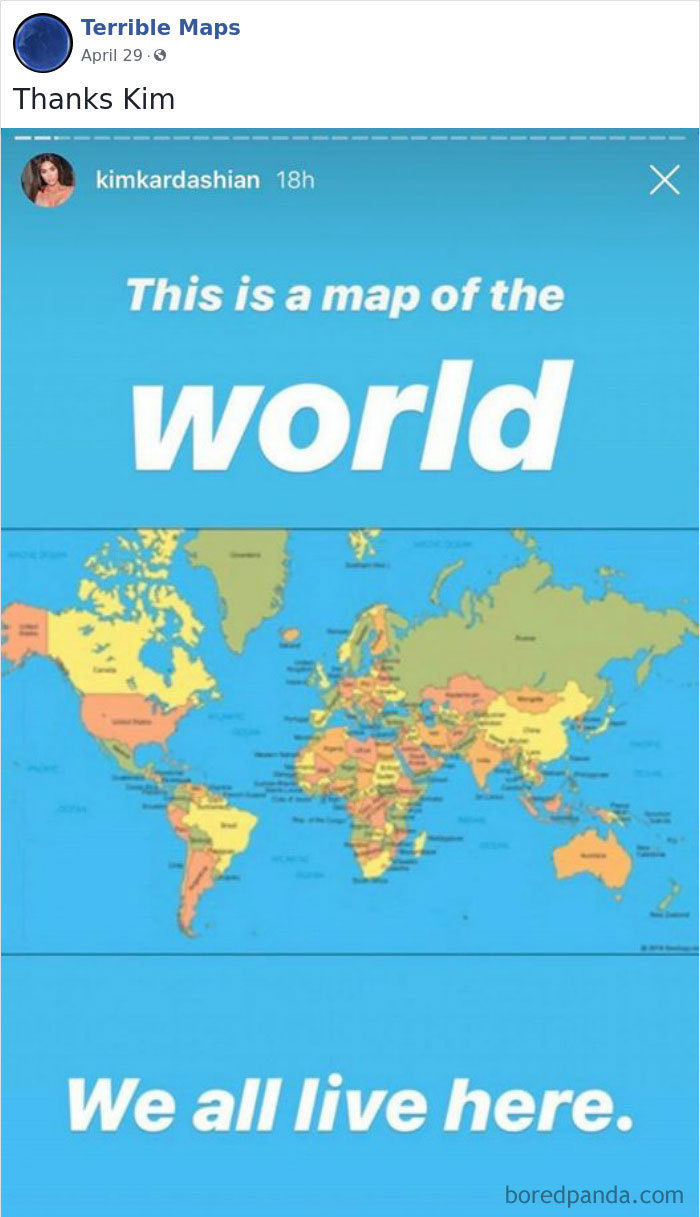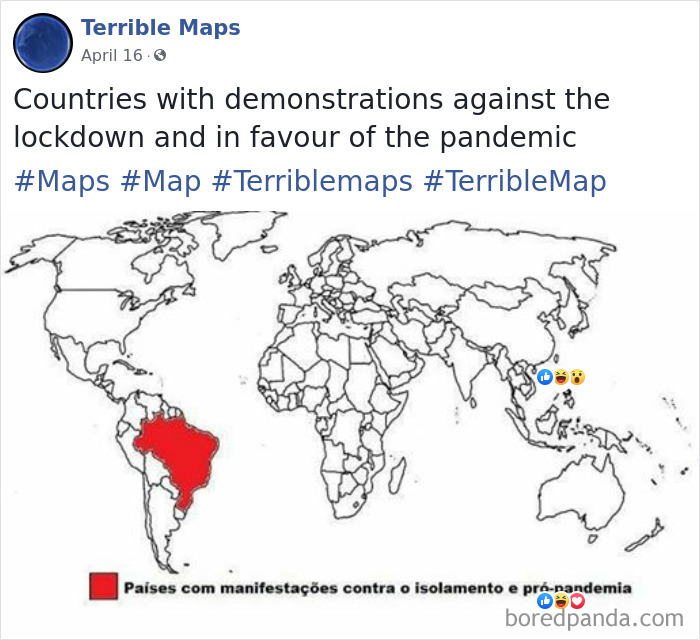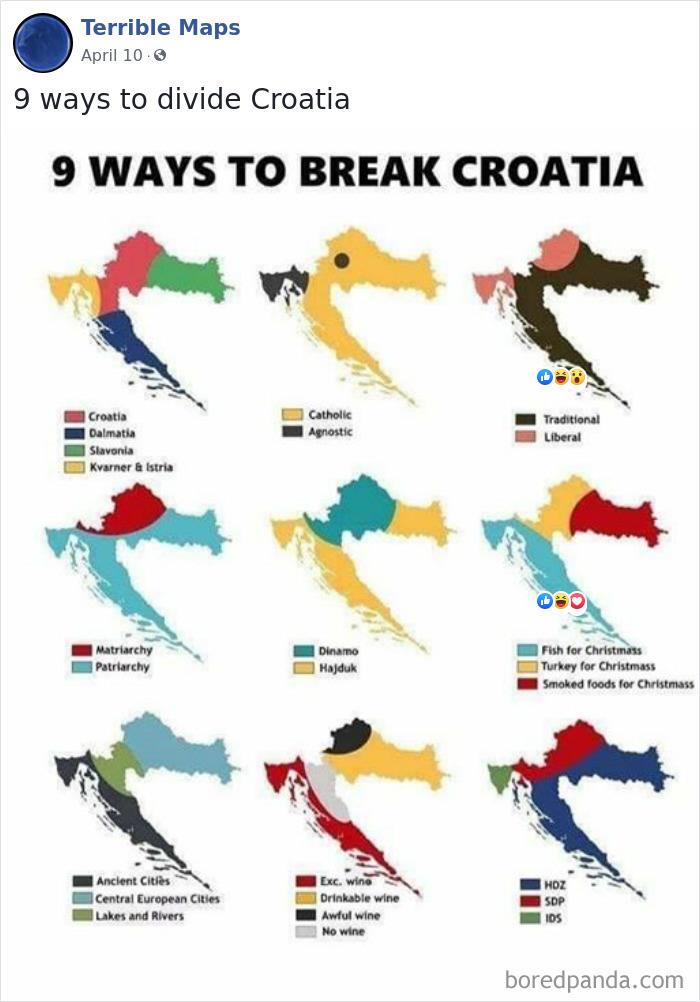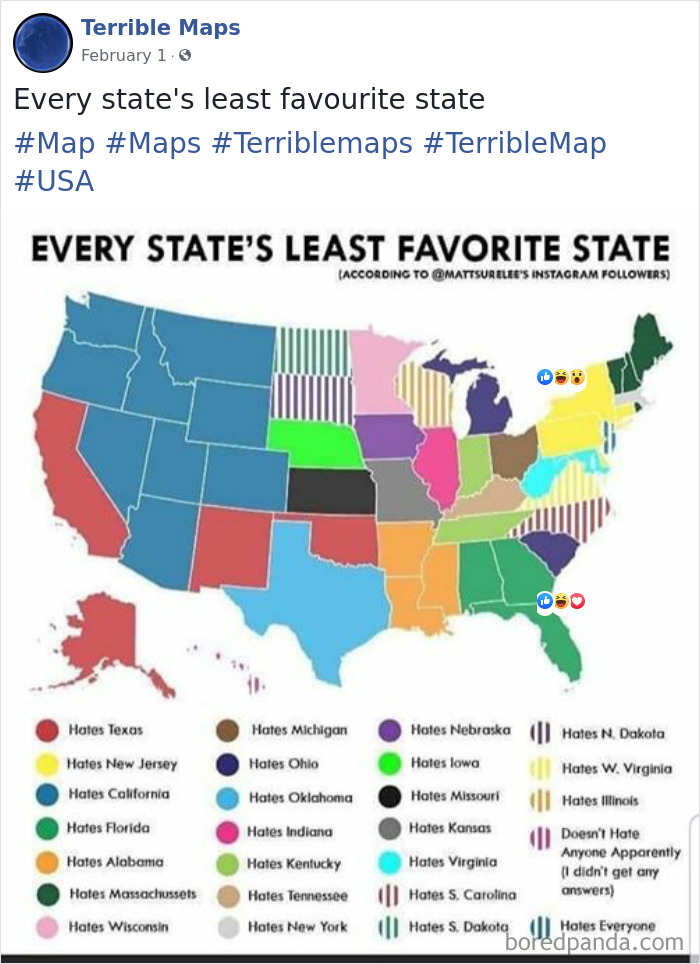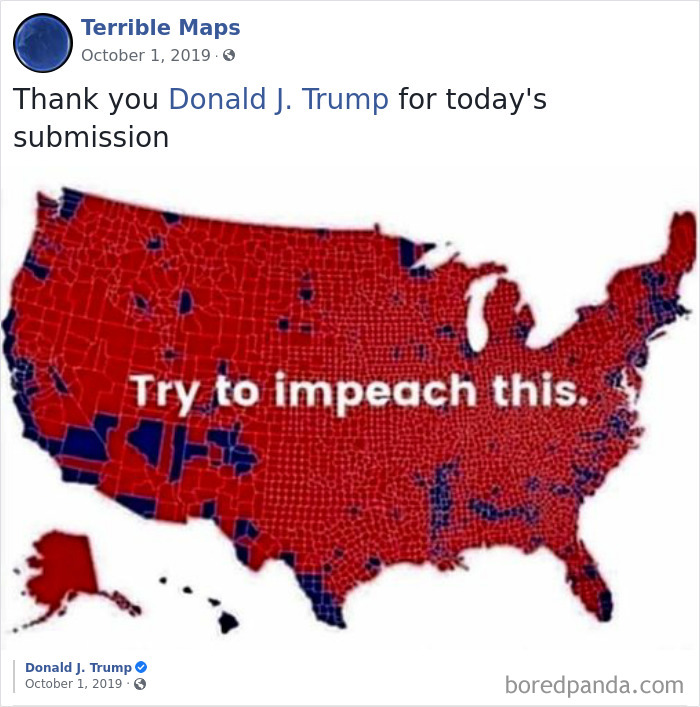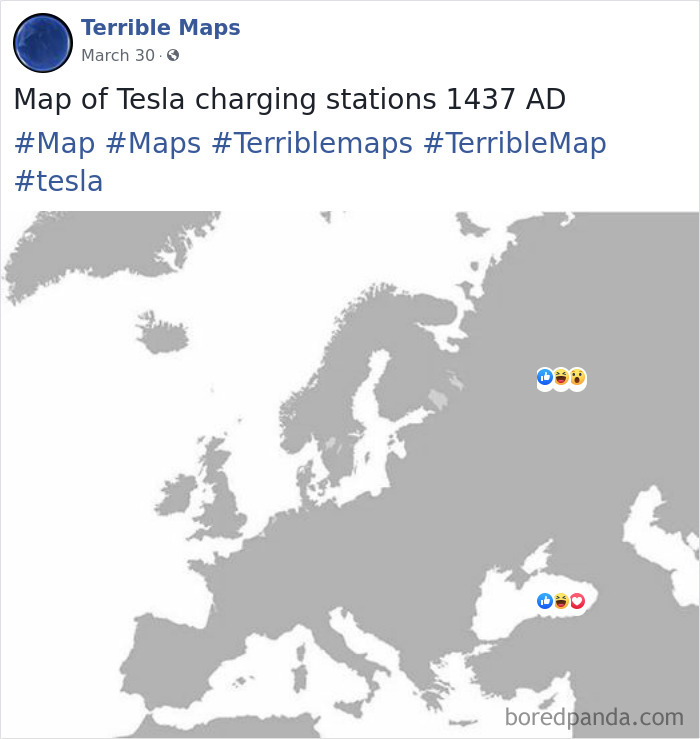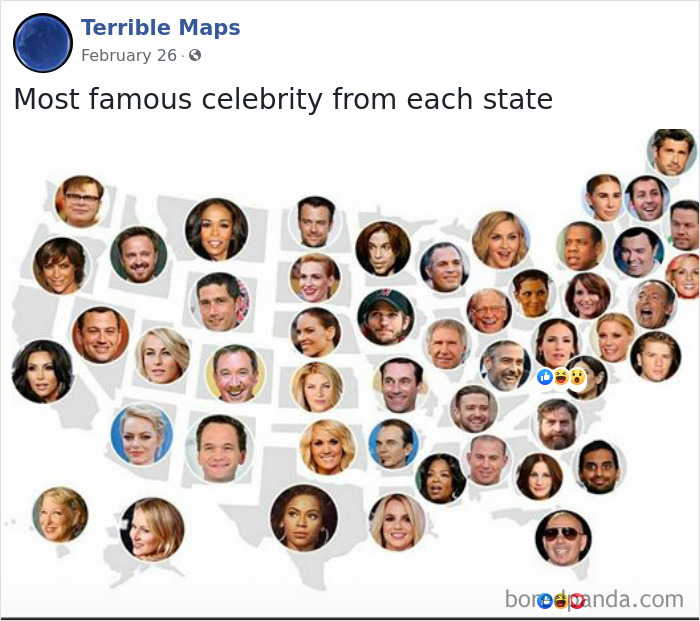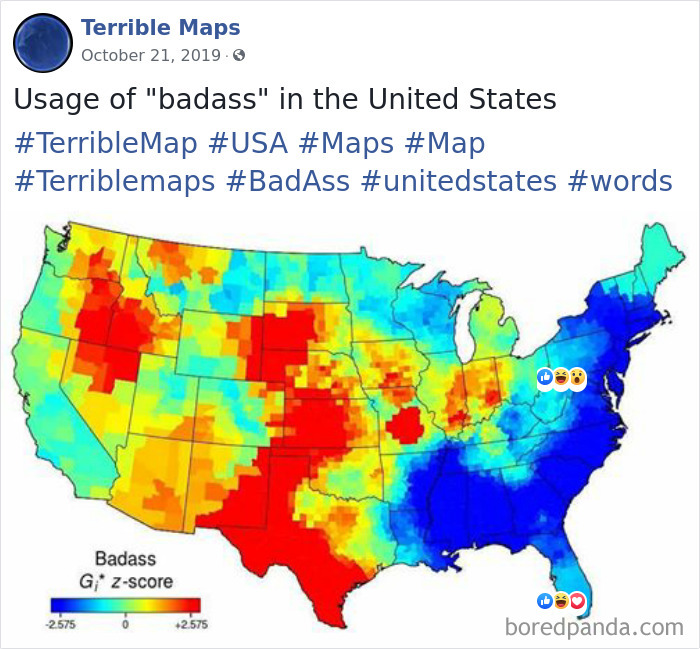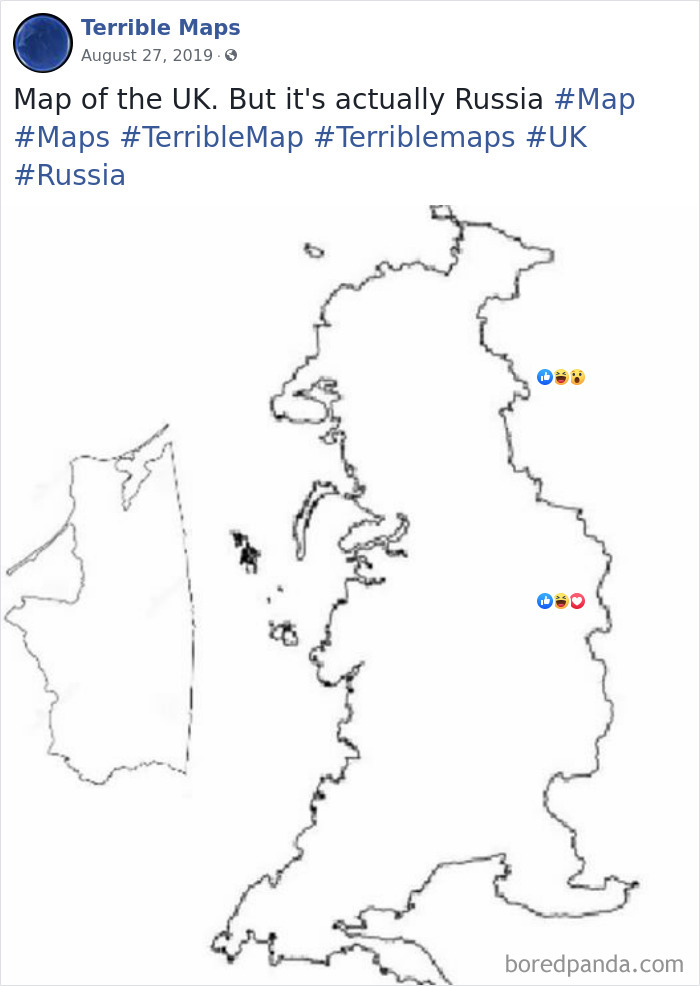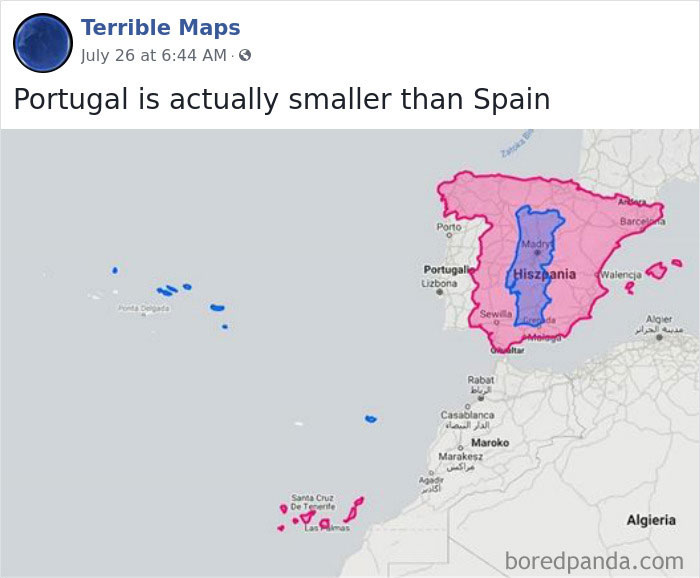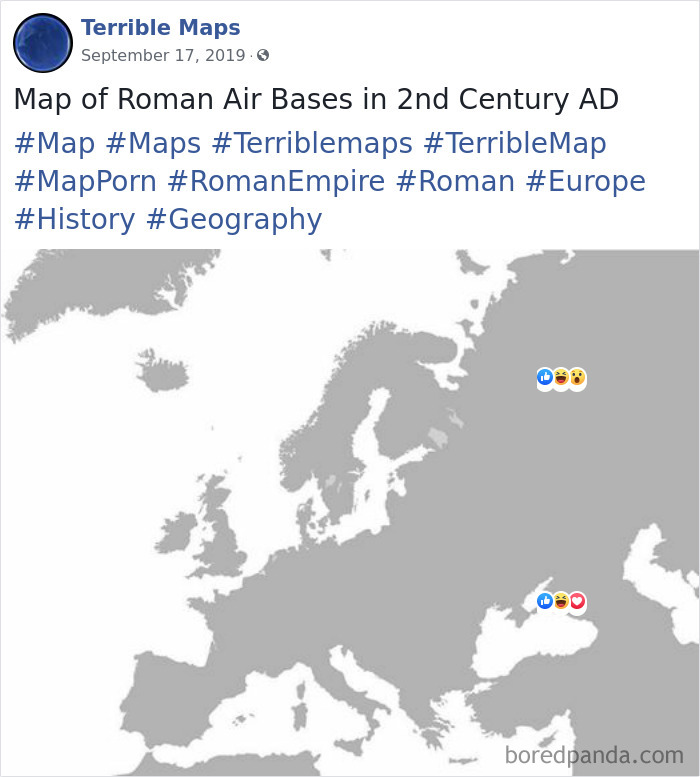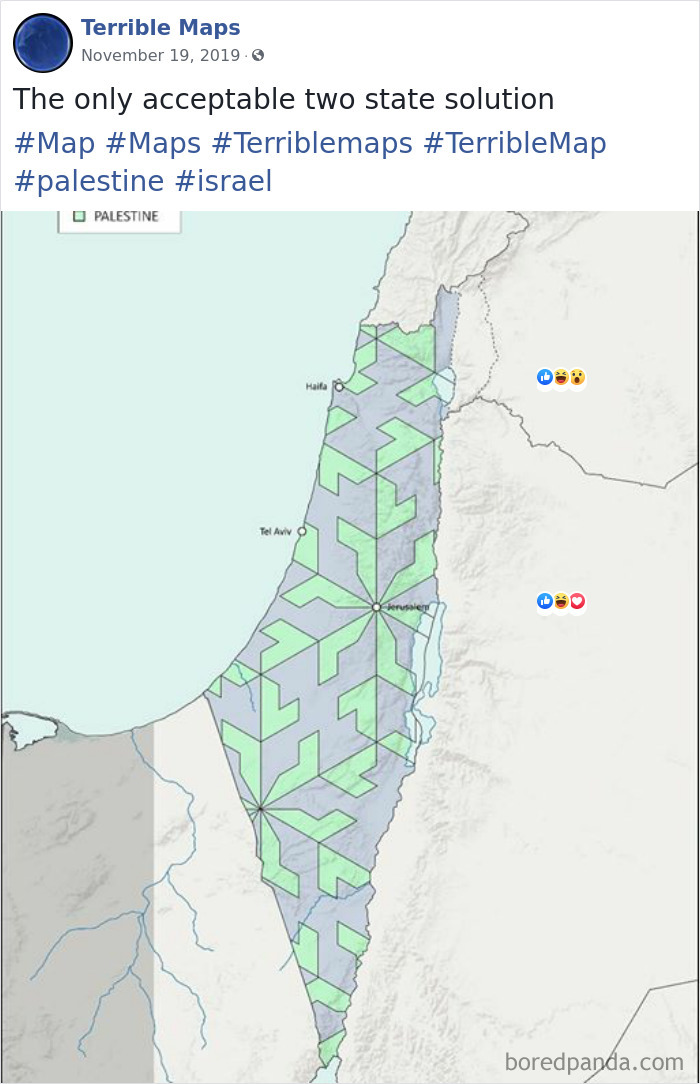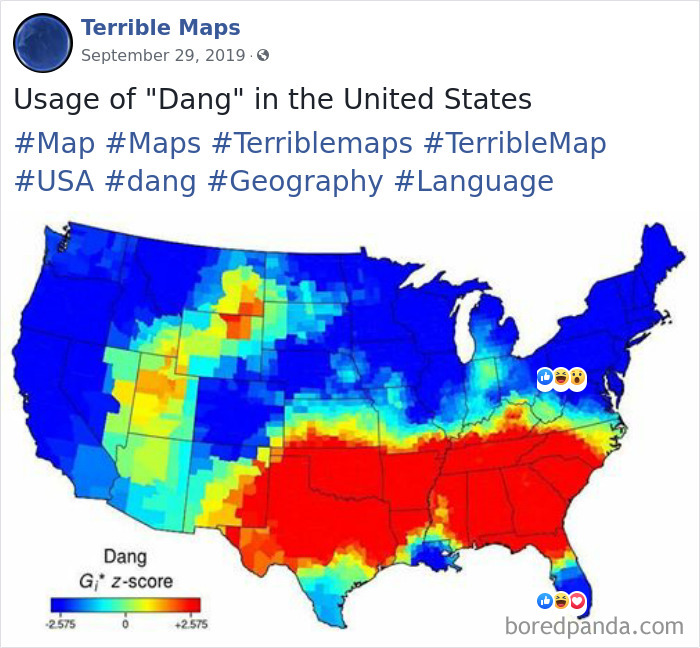Since the last time we wrote about Terrible Maps, a project that is dedicated to sharing maps no one asked for or needs, they've kept themselves rather busy. So it's only natural we created a follow-up article about the cartographers who are so bad, they're actually good. After all, what is the Internet for if not to poke fun at politics and our geographical illiteracy?
From hilarious guides on how to find the state of Kentucky to showing how many Switzerlands fit in Brazil, continue scrolling and check out these gems and tell us which one would you hang on your office wall!
More info: Facebook | Instagram
This post may include affiliate links.
OK. We can clearly see these are bad maps. But how to know you're looking at a good one? Brant Scheidecker, a sales engineer at Cartegraph, highlighted some of the main essentials for accurate and easily interpretable map use.
"Every map should have a title. It allows the user to assess the purpose of the map quickly; allowing them to determine if it meets their needs," Scheidecker wrote.
Next, origin. A fancy name for a compass or the North arrow. "This allows the user to determine the maps reference to the earth. While most maps these days have North being straight up, occasionally you will encounter a map that has a skewed orientation, perhaps to better fit it on the physical medium it's presented on (i.e. paper), or simply because it’s easier to interact with the map in that orientation."
When it comes to the source, it's a two-fold element. "It allows the map maker to provide the map viewer an idea where the data the map is representing is from; a necessity in determining the accuracy of a map. It also allows the map maker a way to cite the source of their data, avoiding all those pesky cries of plagiarism and the ensuing lawsuits," Scheidecker explained. "You have better uses for your time, like ensuring the rest of the T.O.S.S.L.A.D. elements are on your maps."
Let's not forget the legend (the area where a user can determine what a particular color or symbol represents on the map). "Without a legend, a user cannot successfully interpret what your map is trying to represent, 'Does the red skull and crossbones over my favorite restaurant mean what I think it means?'"
You should also know when was the map that you're analyzing made. If it was created in 1962 and shows commuter levels in Chicago—it might not be such a valid source for the traffic data you are looking for today, unless you are feeling nostalgic, Scheidecker joked.
There you have it. You may now have become a cartographic genius, but you should be able to tell if you're looking at a terrible map or not!
I don't understand why Iceland is not green, but Spitsbergen is
No surprise, if the person with this opinion is a believer, that the Earth is flat...
Nah. We see a giant a*s bible for most of those middle states. Oh and guns. Lots and lots of guns.
i don't even want to try saying that one. you know which one I'm talking about.
According to my dots in MS Paint over each: 132. Might be wrong, but I am not doing it again. EDIT: Did it again and Beto River is right, I missed 10 at some point. Thank you Beto!
I understand mistaking it with Iraq or Afghanistan, but how the f**k did they go to Africa and the Balkans? A couple are even in the UK, for crying out loud.
Sadly the U.K. after Brexit is now the direct to video sequel staring the likes of Tara Reed that nobody wants.
I knew about Australia and the emu war, but not about China. I need to find the story.
In Dutch coma is spelled with a c instead of a k, so I don't really trust de rest of this map...
That has changed after Baltic states also got Euro as our currency. But these are funny and still around
Weird. It's as if the person is jealous of us having so many historical buildings and interesting places.
If this map doesn't help you to find the nearest one, just walk down the street and there it is.
In 60 million years it would be recognizable, but in 200 million years it's going to look really stupid.
i get the joke. so, if yall need it explaining: sin/cos=tan (sin cos and tan are on most scientific calculators but idk what they do)
Wow! No wonder it was down graded. How on earth did they ever see it?
Is there like some Lizard-proof border there? Do lizards know when to stop going north?
This is where I live! (Not in the harbour, but the city) I'm proud of us being the catalyst for this.
Scarborough Reef is a country? It is a disputed territory with claims from The Philippines and China, and it has a population of exactly 0.
The good old days when the country was made entirely from minced beef.
Makes absolutely no sense. Southern Europe is often nowhere near the green zone in data such as economy, unemployment etc.
Nooo, we (EU) want Scotland back. Anyone can have England and Wales, though.
So many of these look like regular phenomena experienced by someone with the worst hangover...
Did someone drop this map on the floor? France has broken off, Africa has acquired an extra bit on the west coast, America seems to have been eaten by the dog.
Jakub Marian makes a lot of good maps, but this one was posted a few years ago on April Fools' day.
yup spent 40 years in the right start and now being in the left one it often lead to a weird "dance" when I'm saying hello and even ended once with a stealthy one on the mouth... but hey corona has solved the issue
Two continents. I'm pretty sure South America was also pillaged. And don't put this on white people. War and slavery have been parts of humanity throughout history. Ignoble, terrible parts, but still parts.
It's a nightmare trying to get across Europe as you're always disturbing matches on the way.
So are we assuming that The Netherlands is gone by then? Cheerful...
Ask an American to say 'squirrel'. You'll be laughing for the rest of the day.
I’m still not over the lazy, lazy research that brought us “mahoutokoro”. She literally just found out what the Japanese for “magic” and “place” was.
Ninth way: You CAN read the charts: 0% - You CAN´T read the charts: 100%
The kind of thing where you think it's a good idea at first, then when you've finished it, you think you've just wasted two hours of your life.
No. There are a few hanging about in orbit. They're the ones who see the world like this map. Black lines and giants words and everything.

 Dark Mode
Dark Mode 

 No fees, cancel anytime
No fees, cancel anytime 






